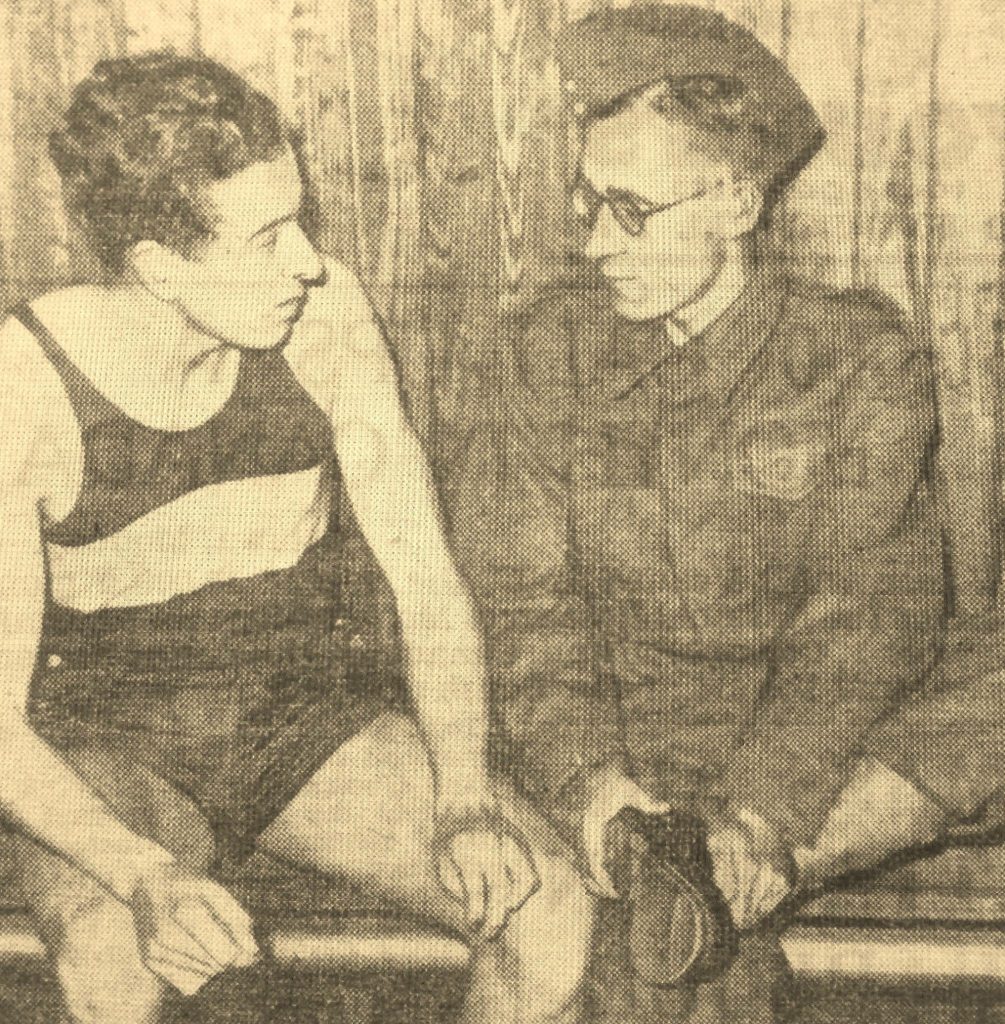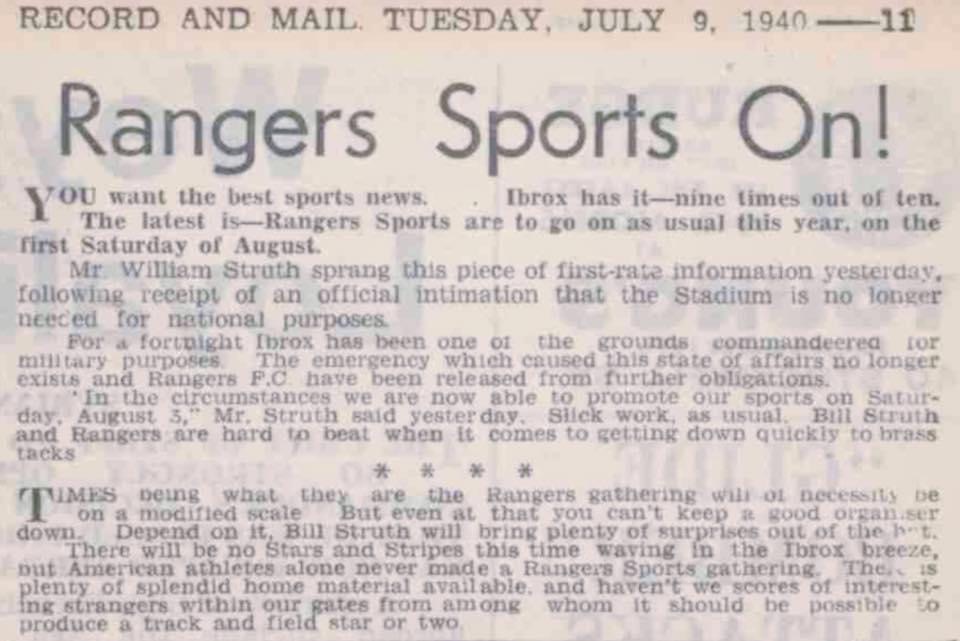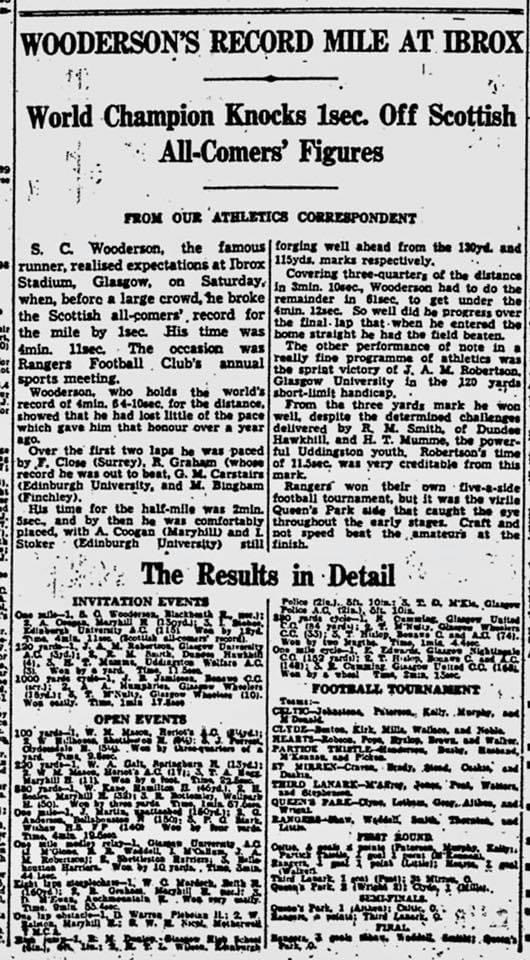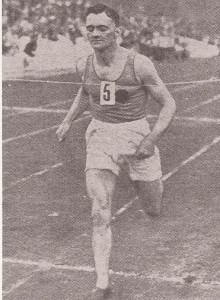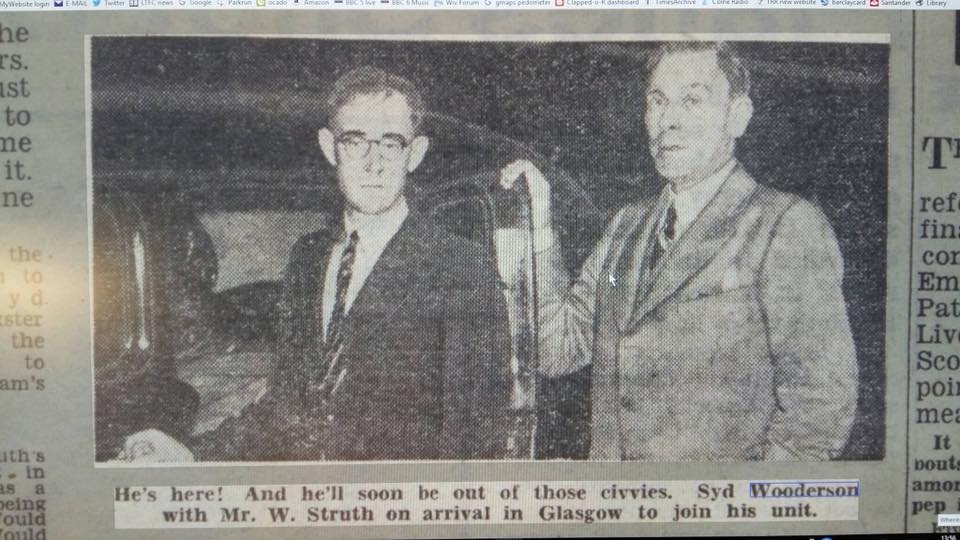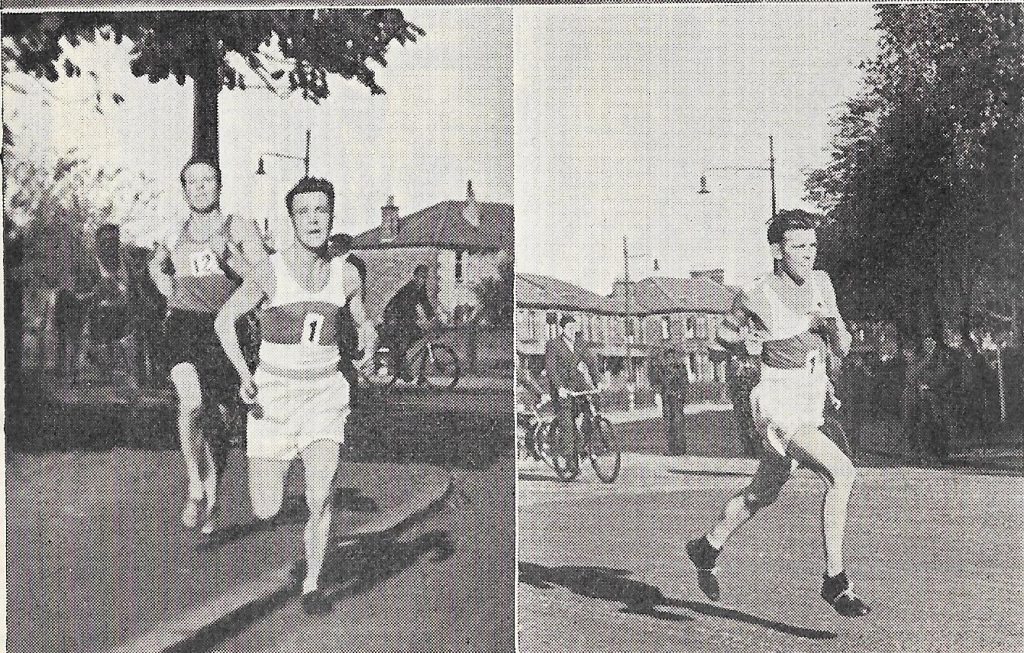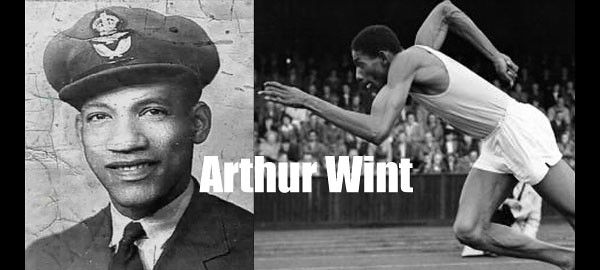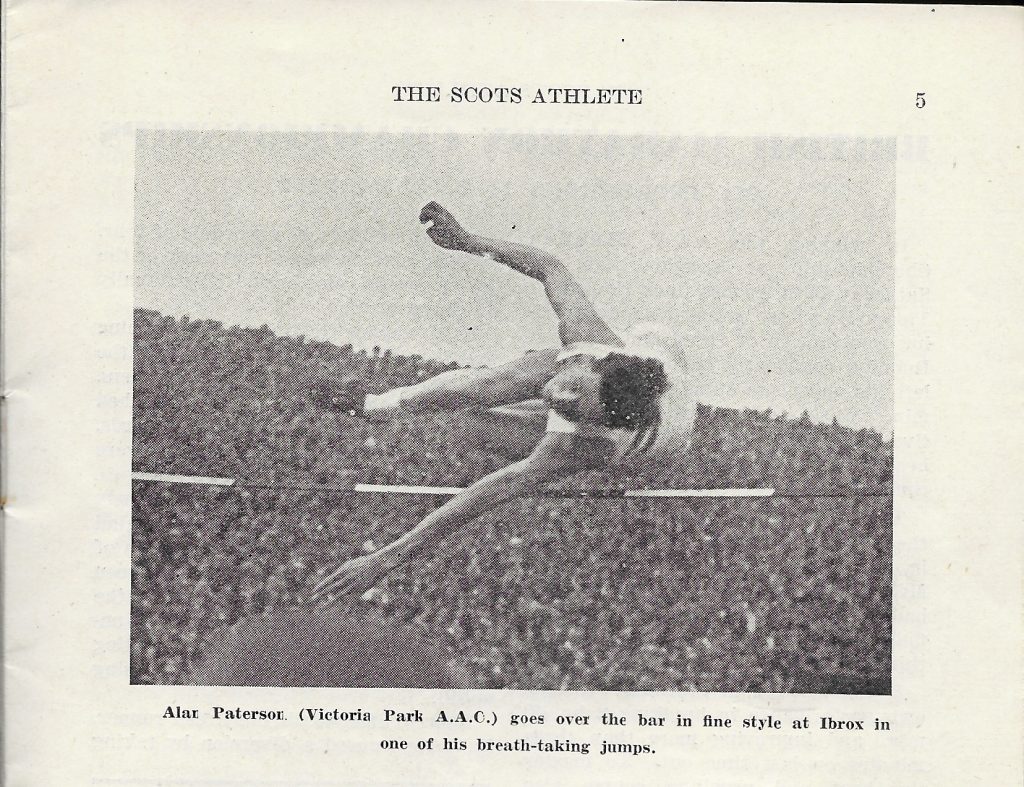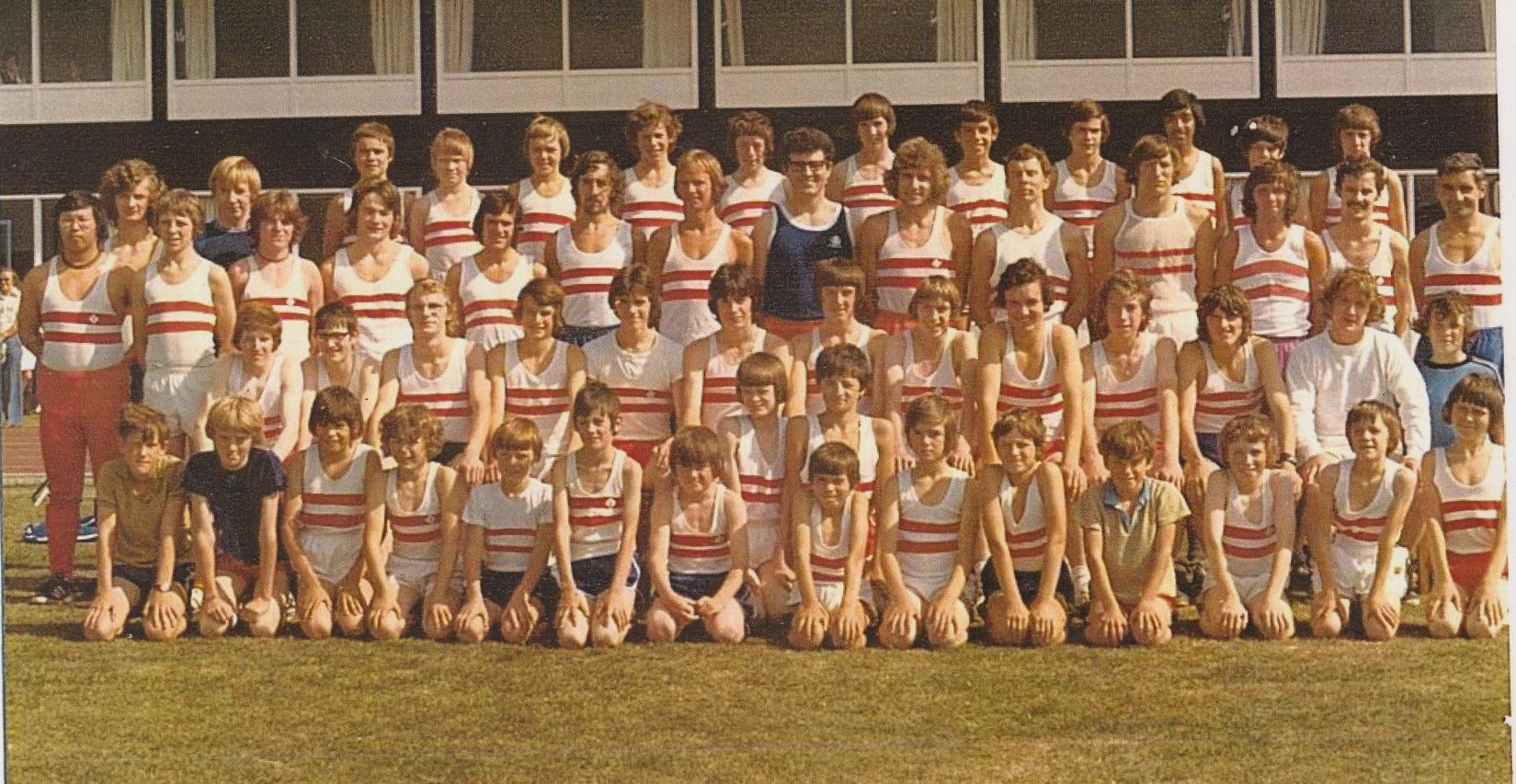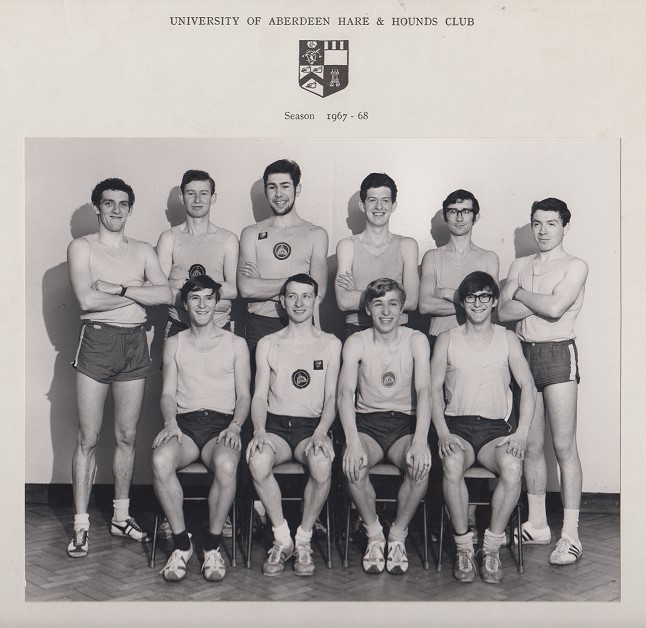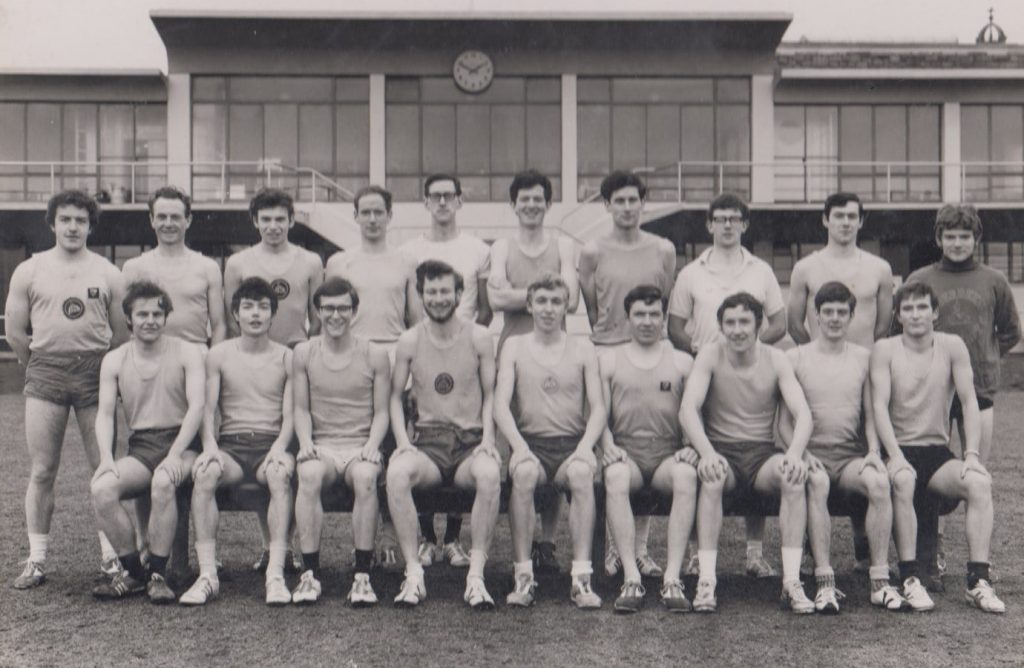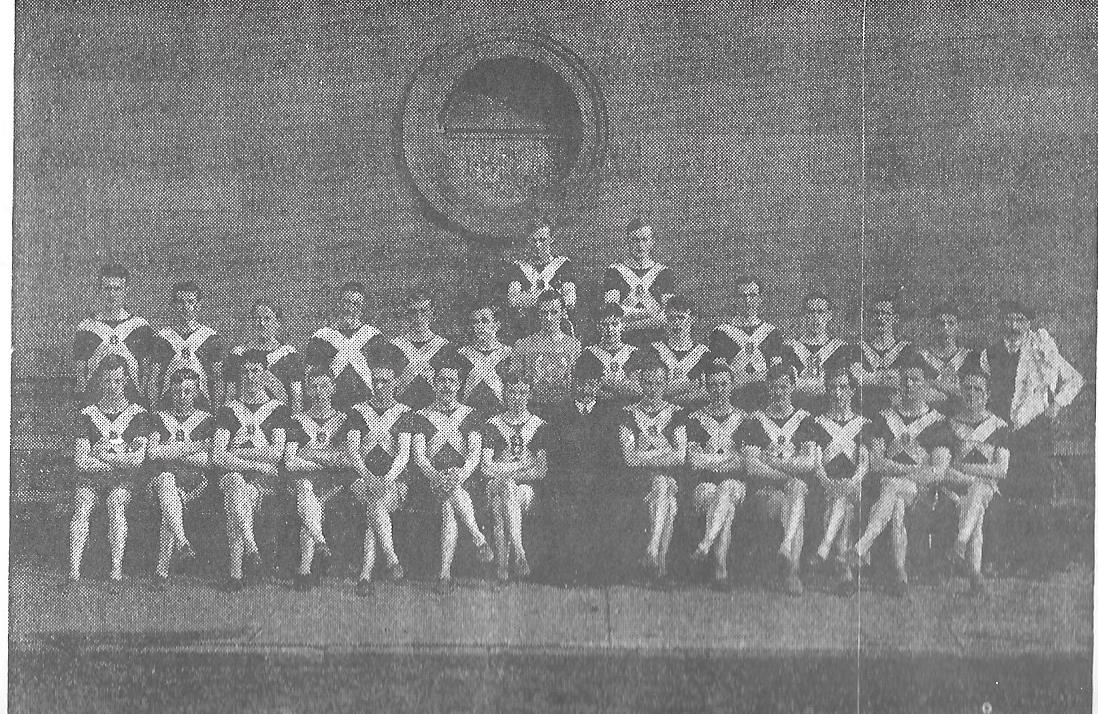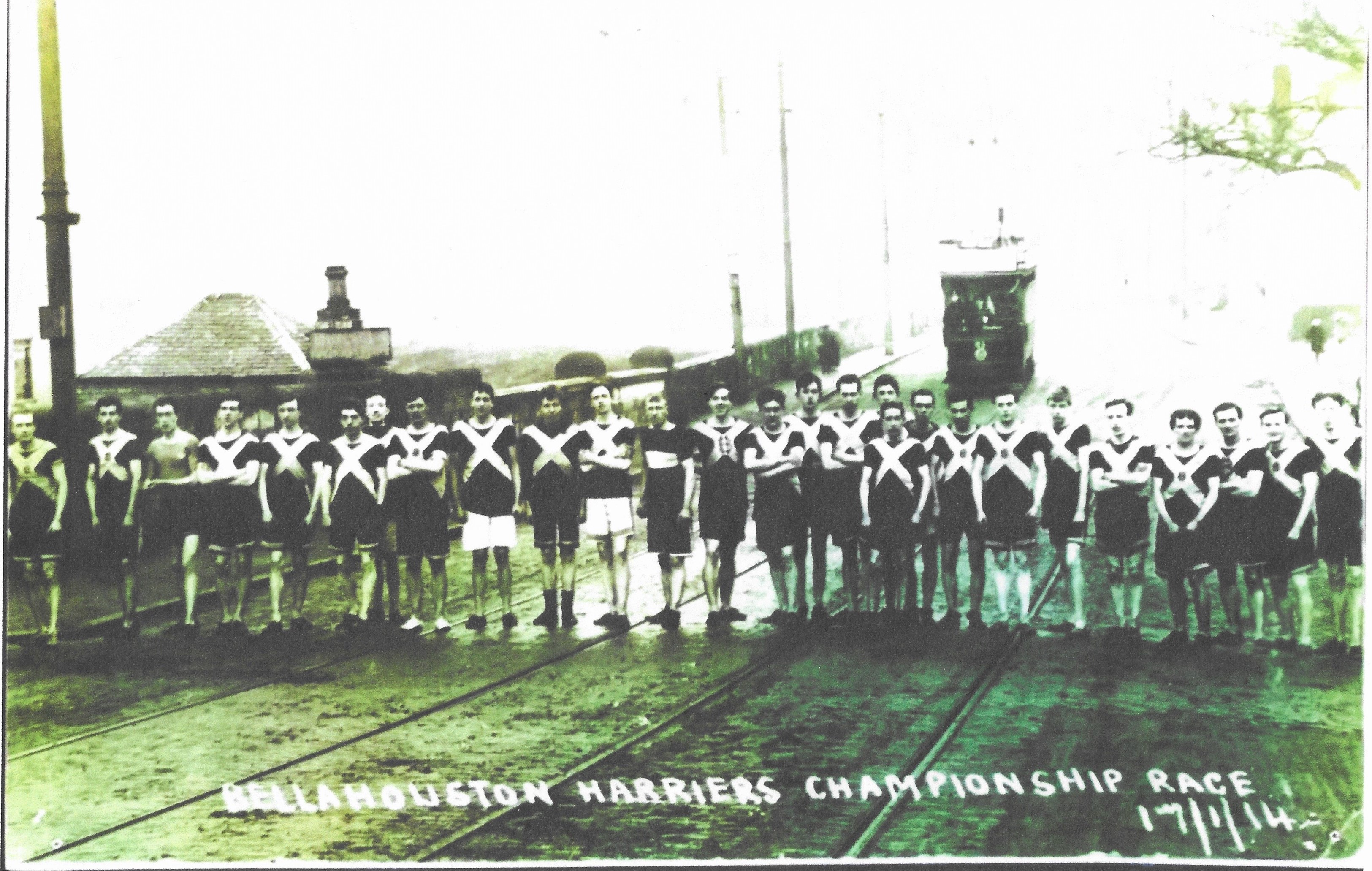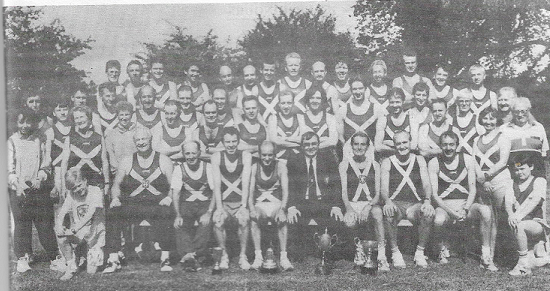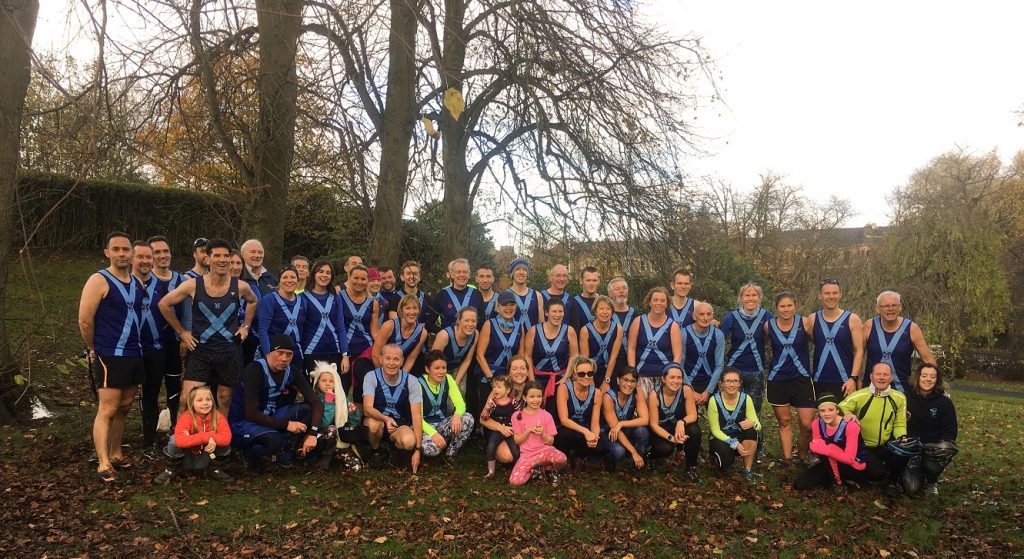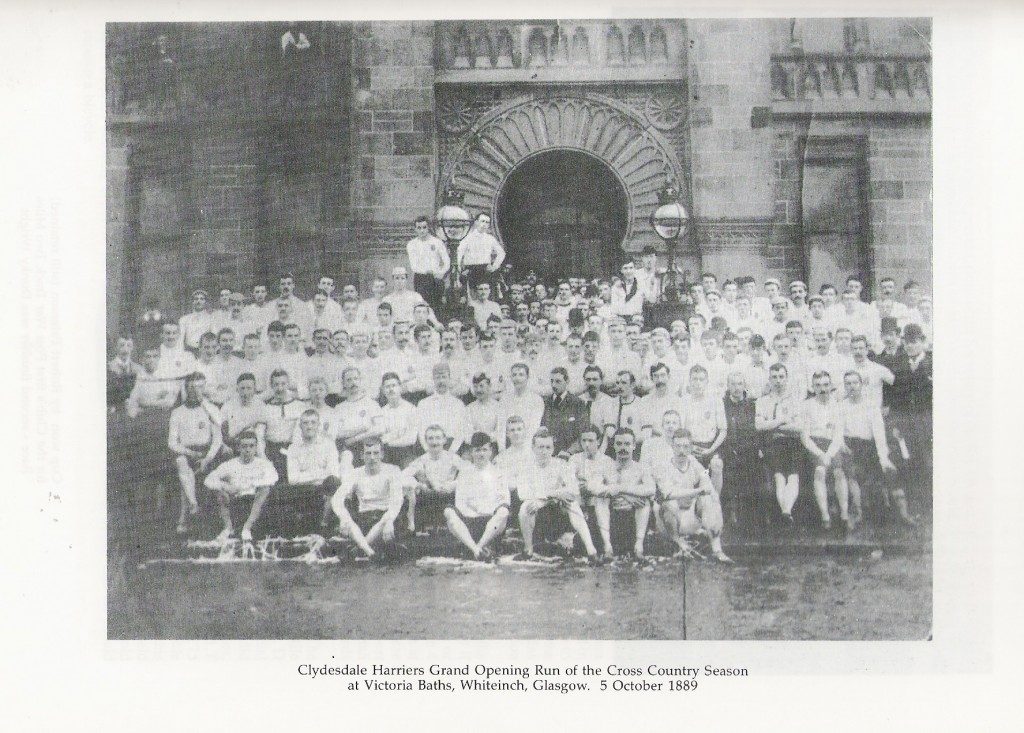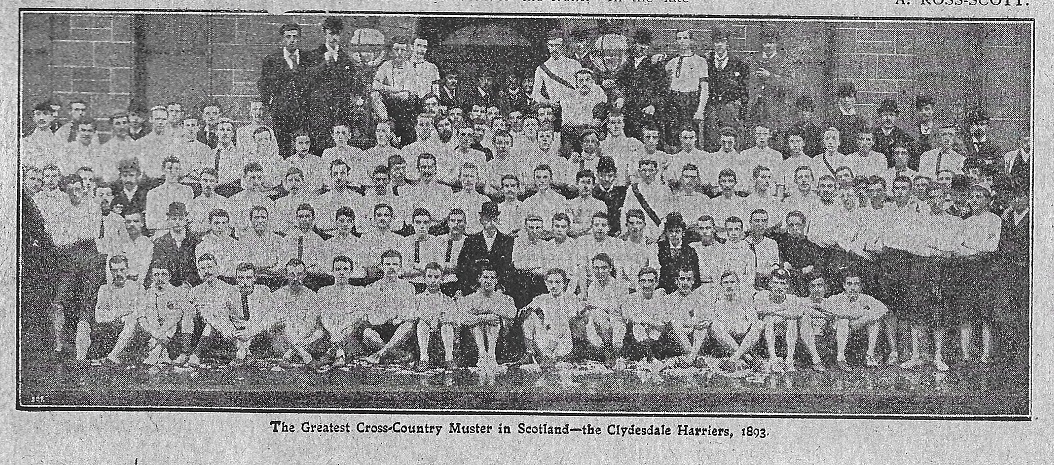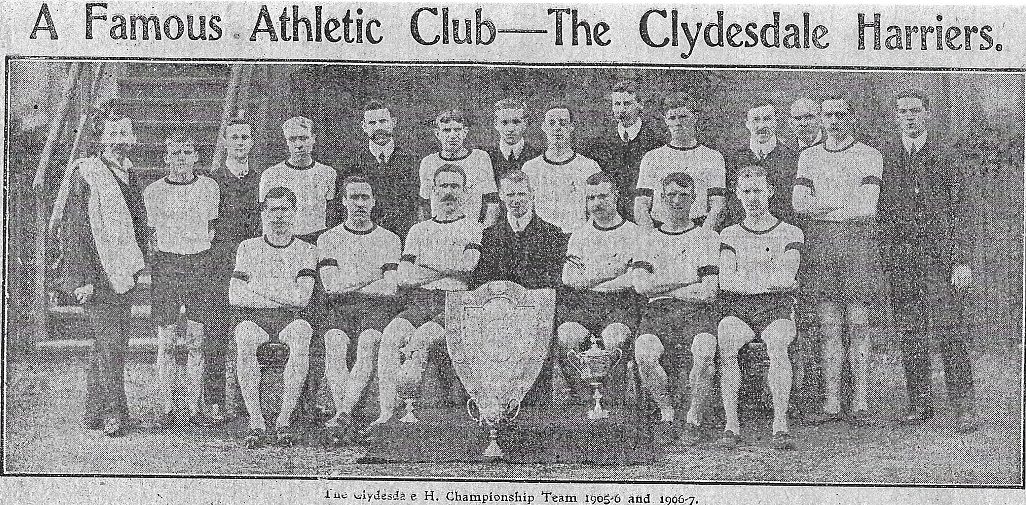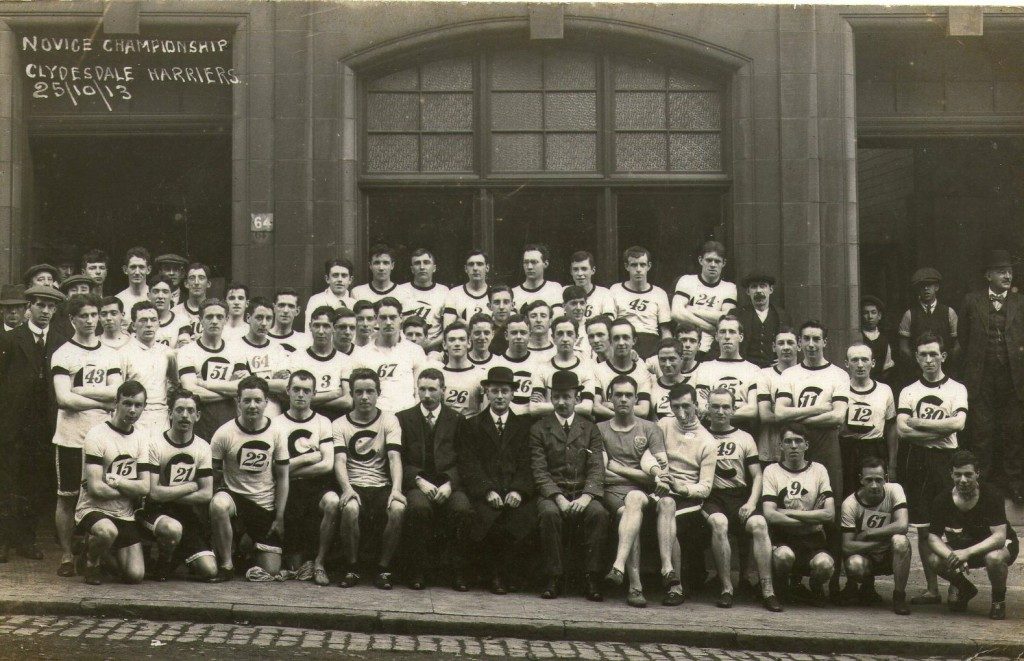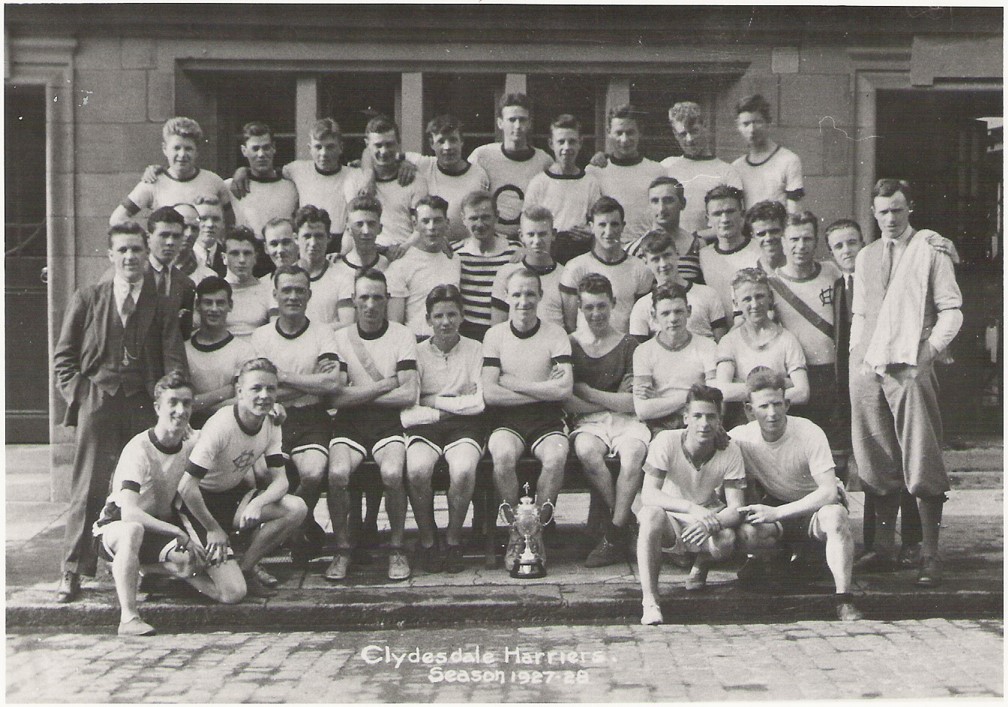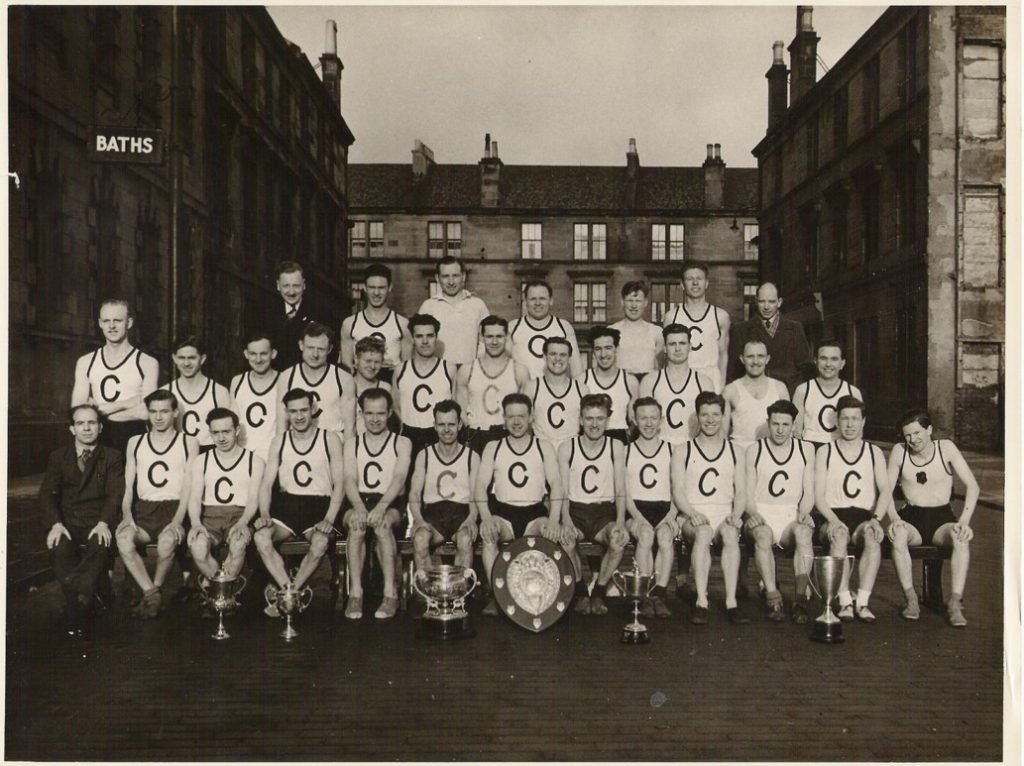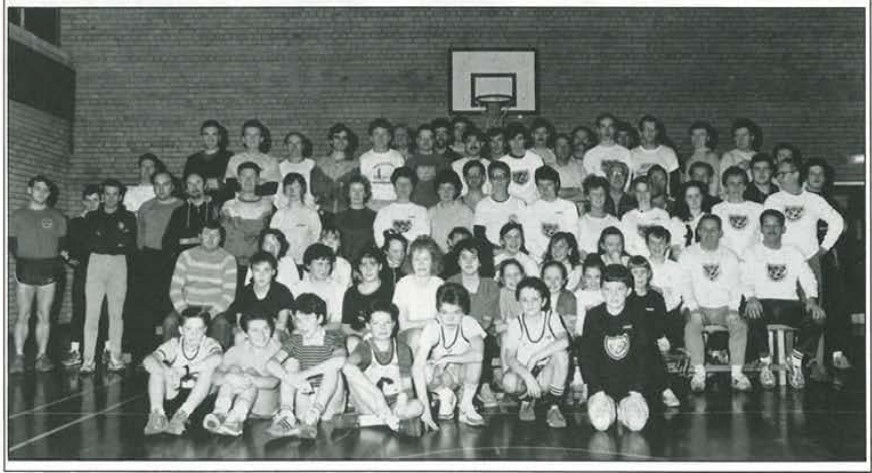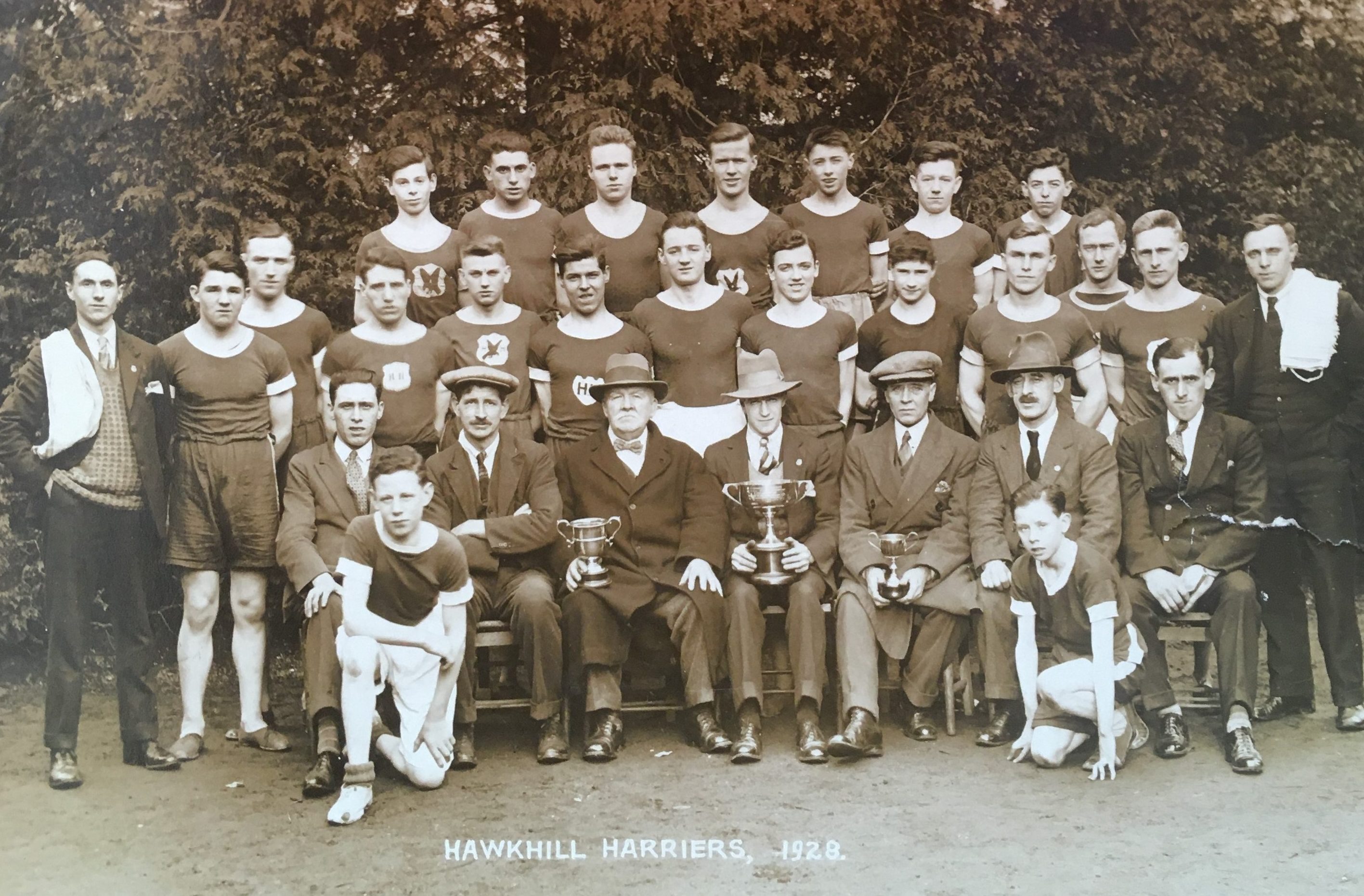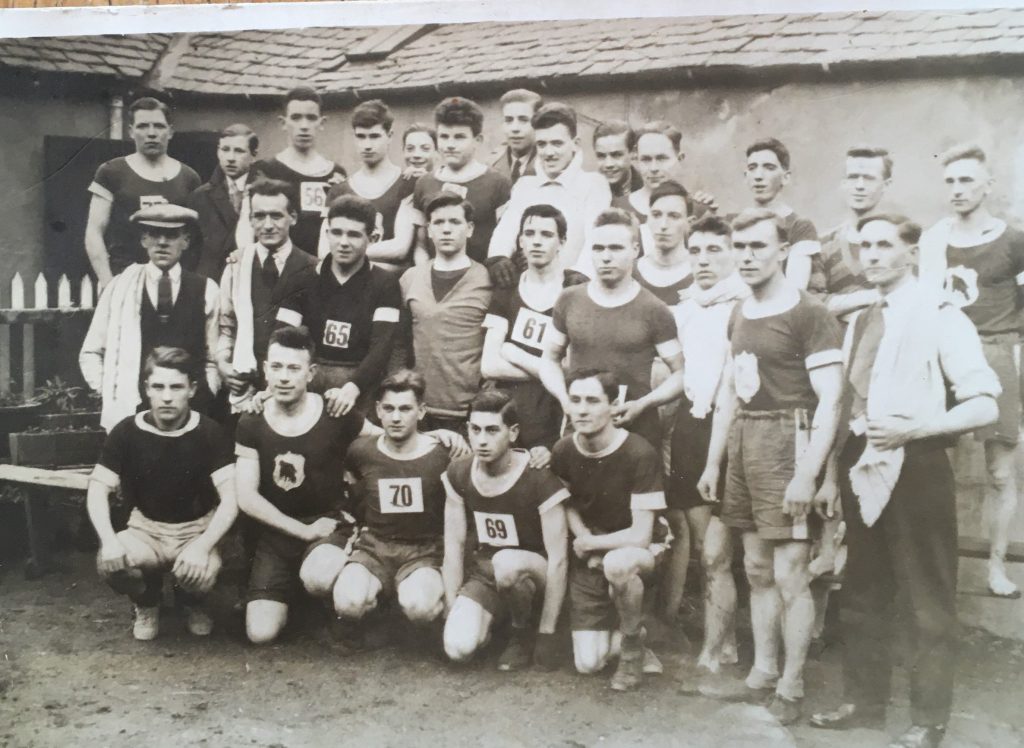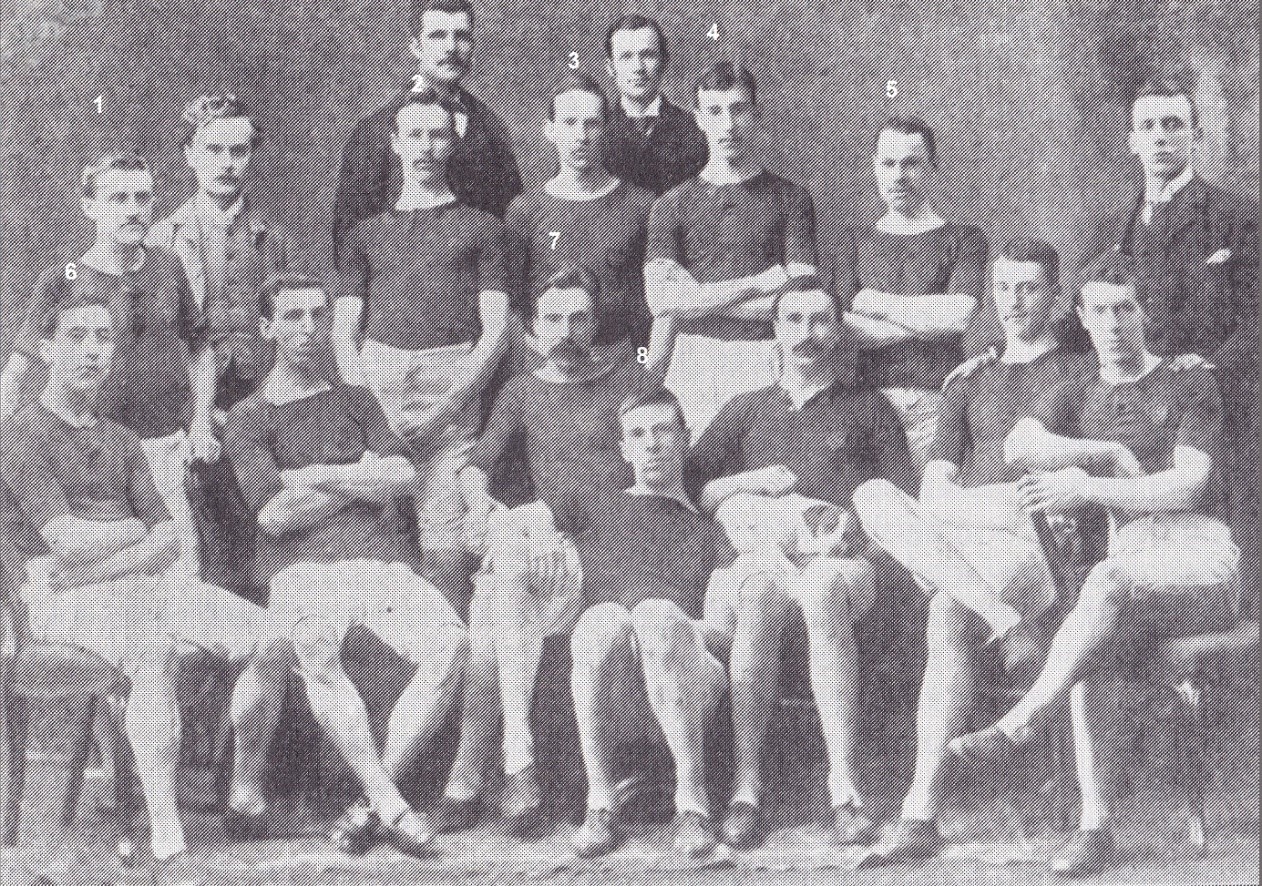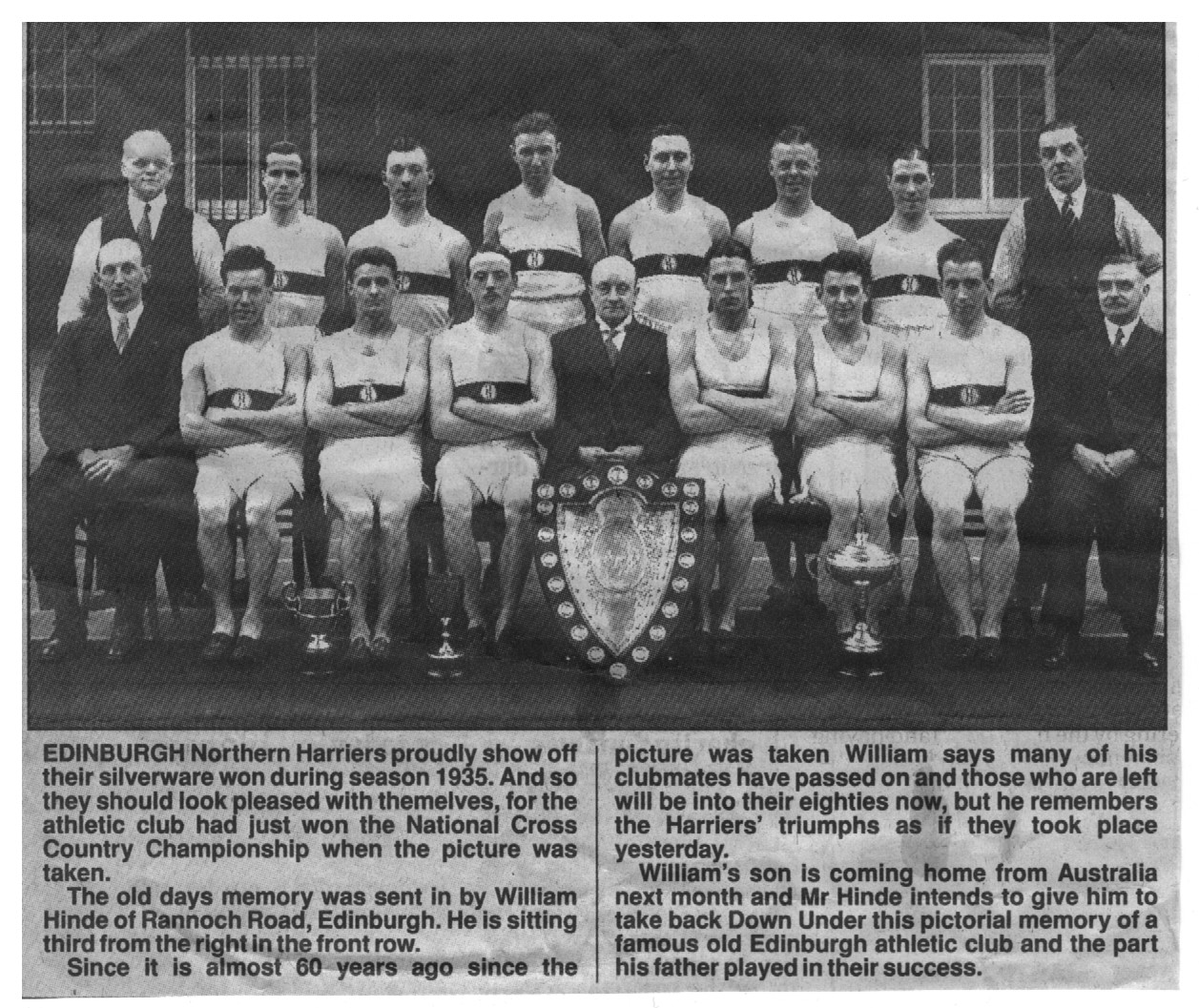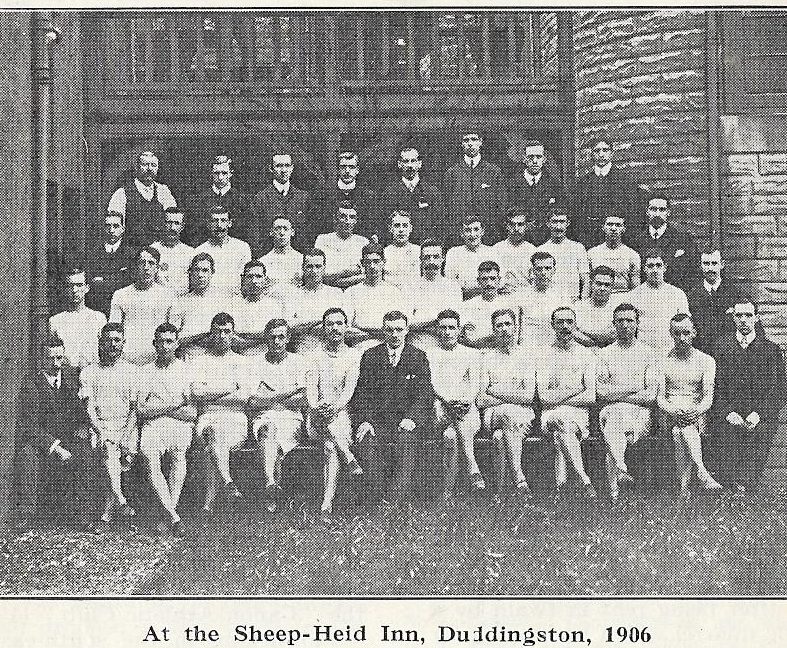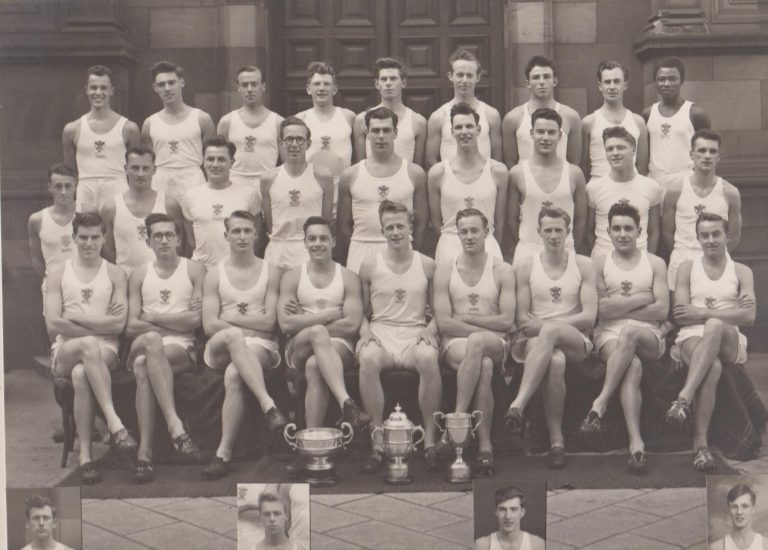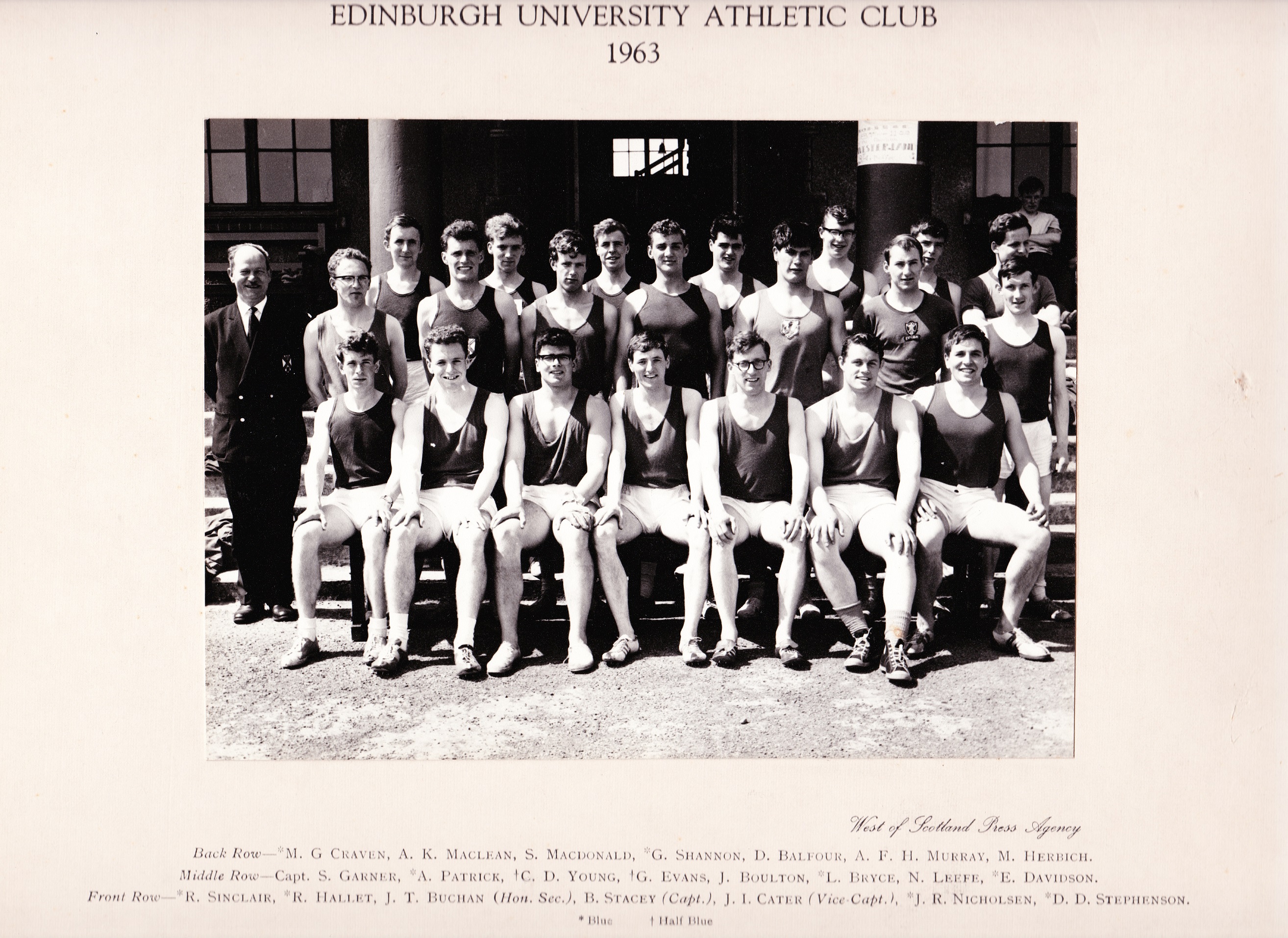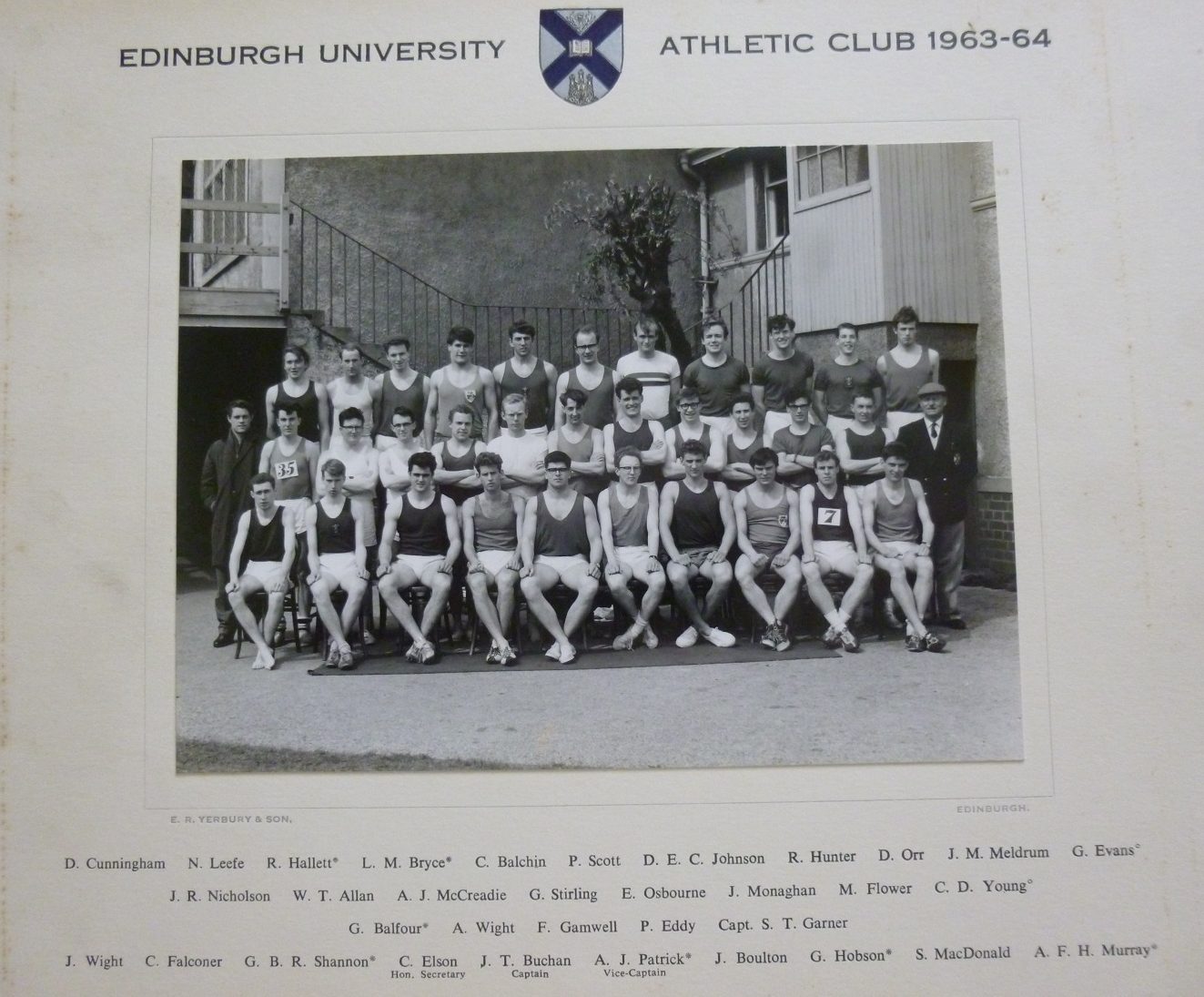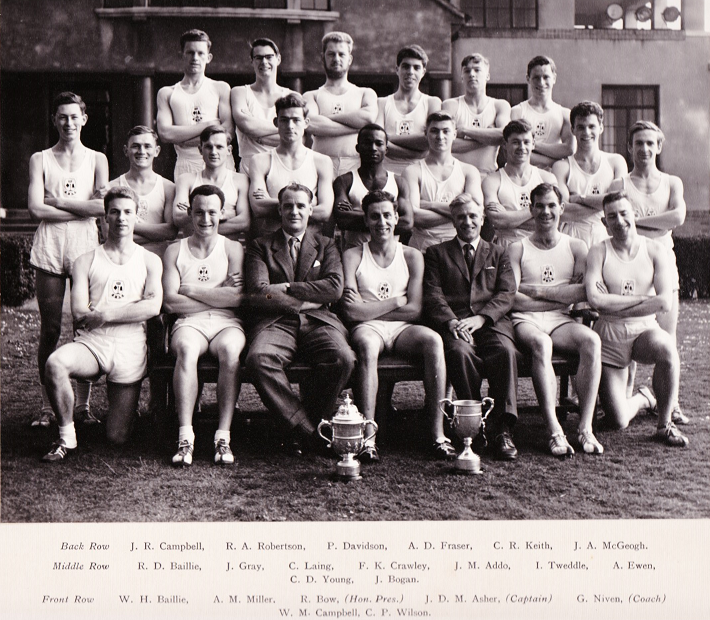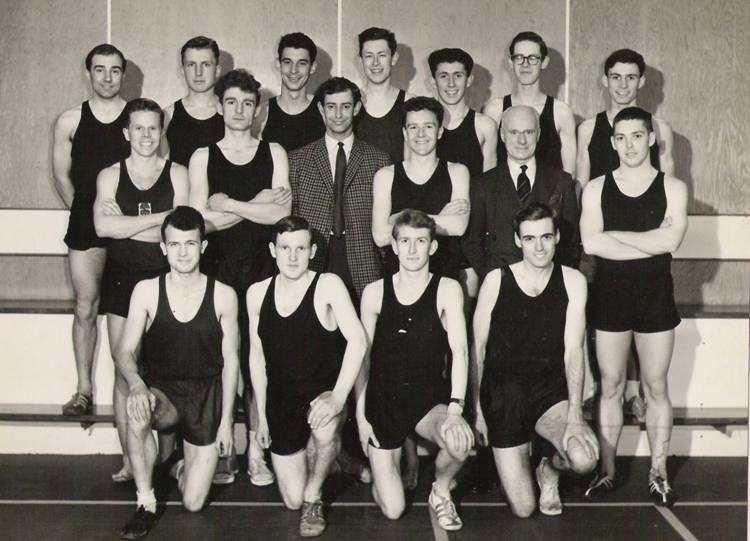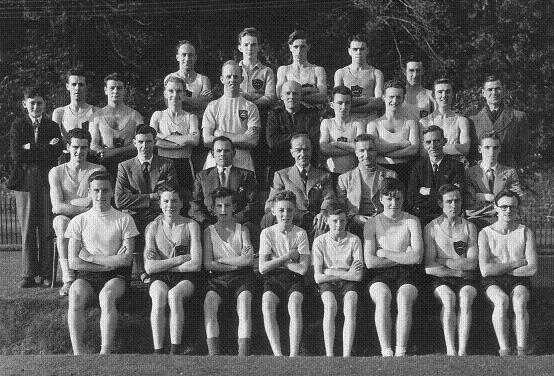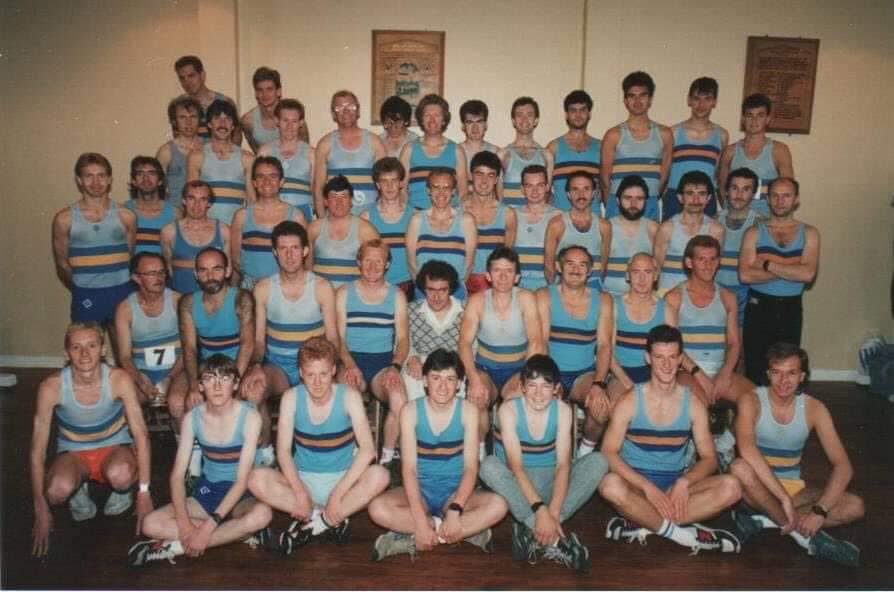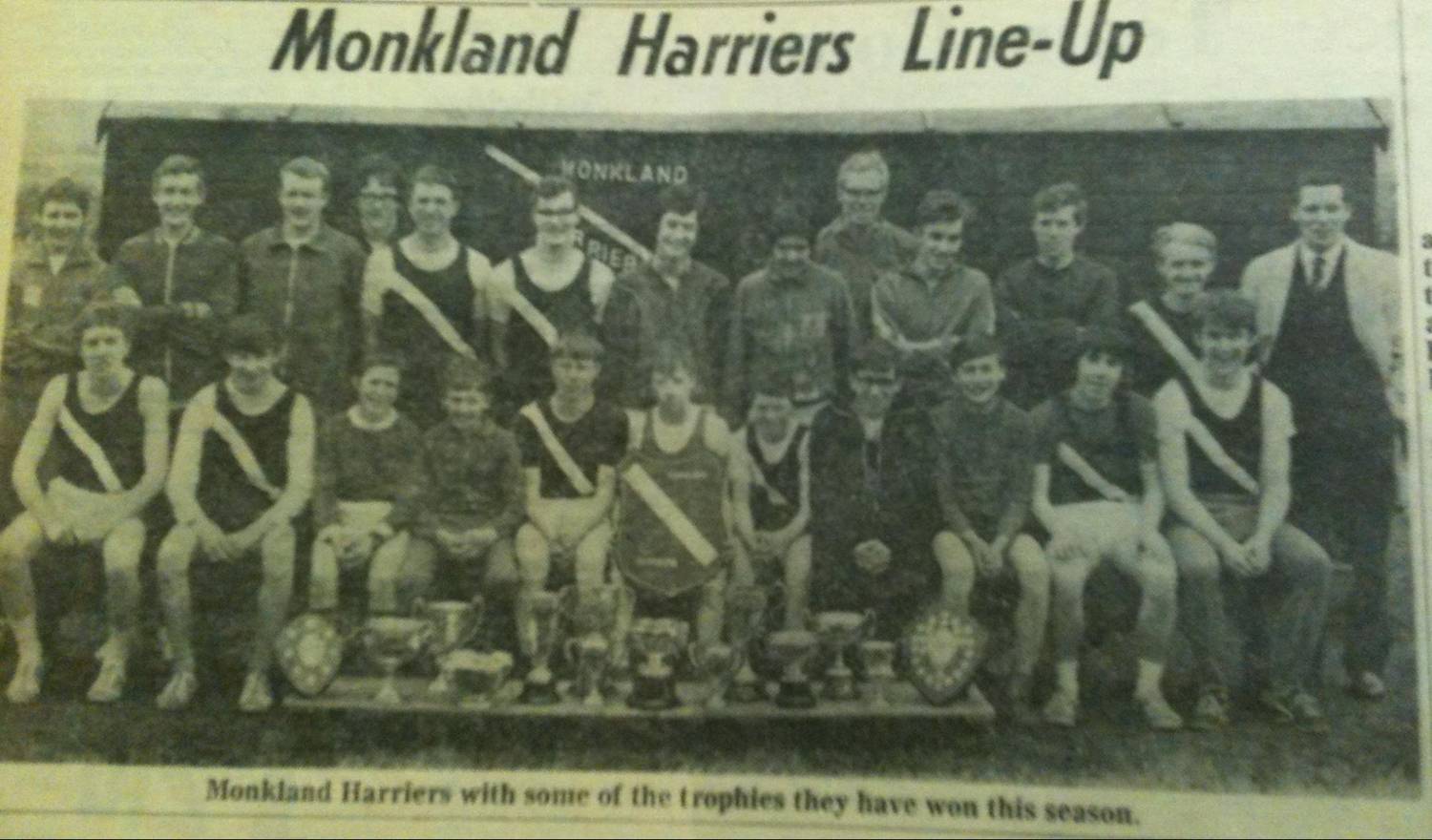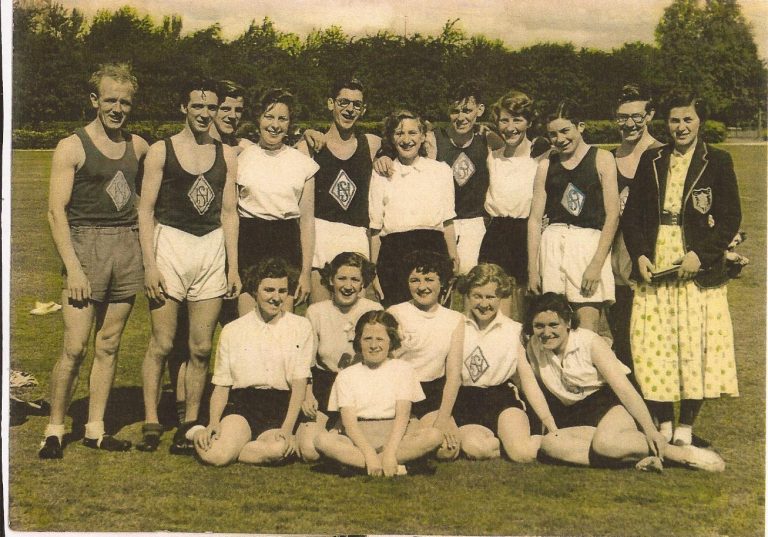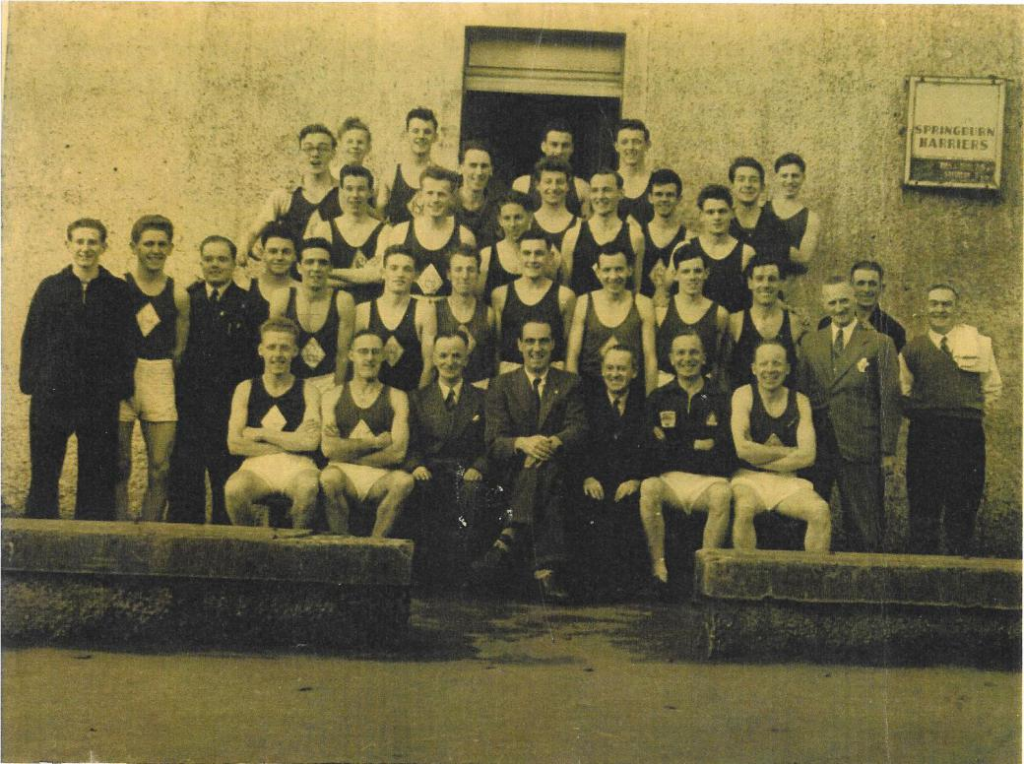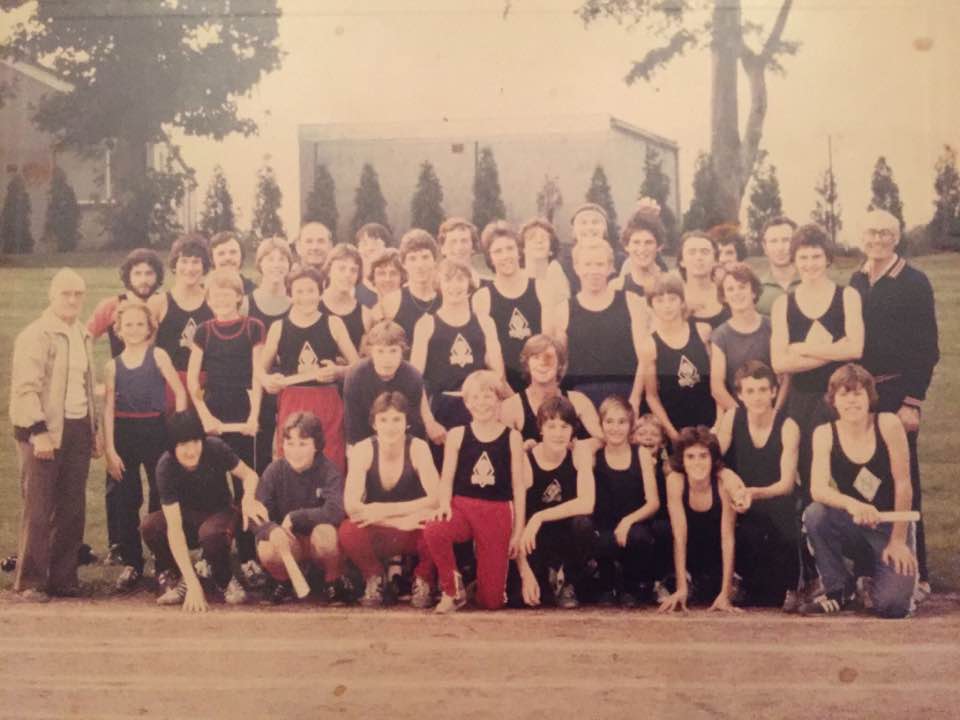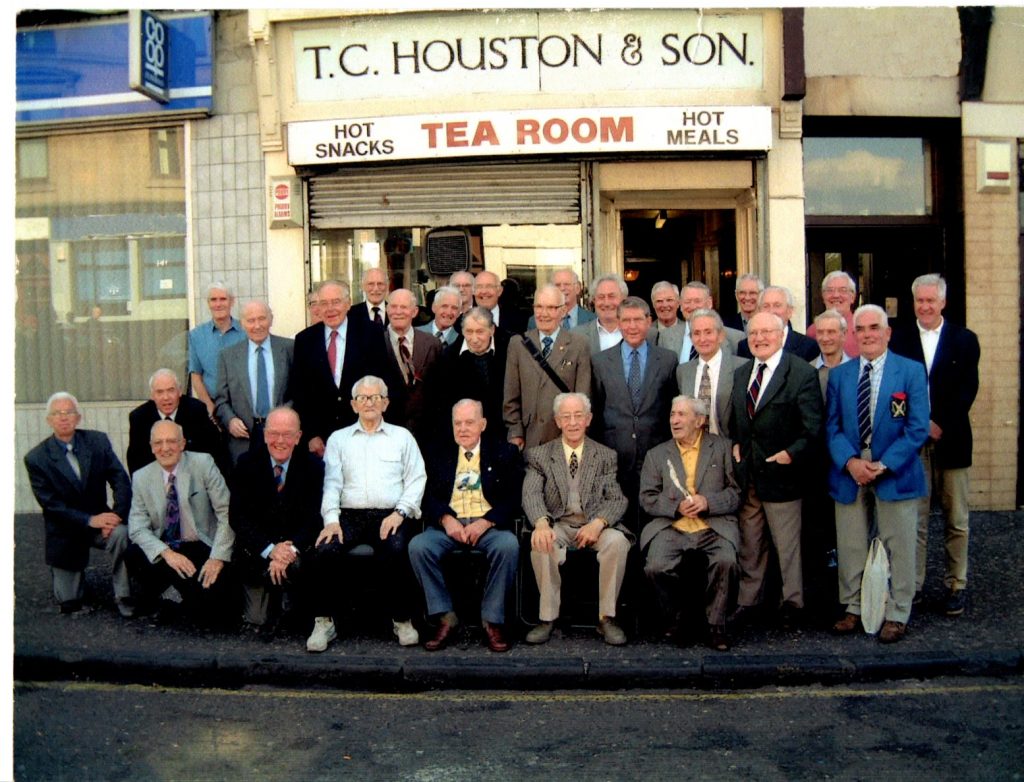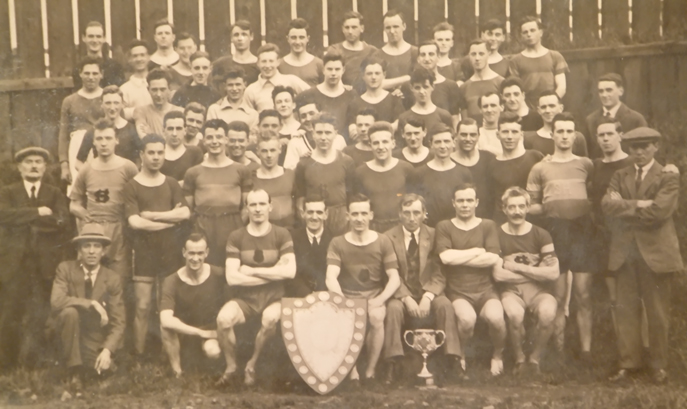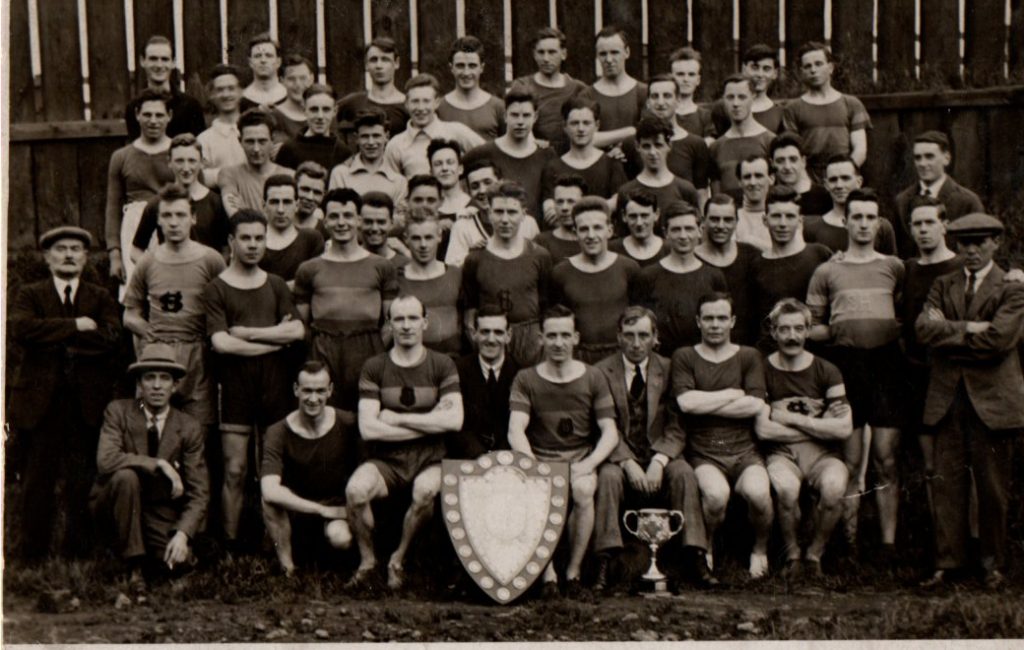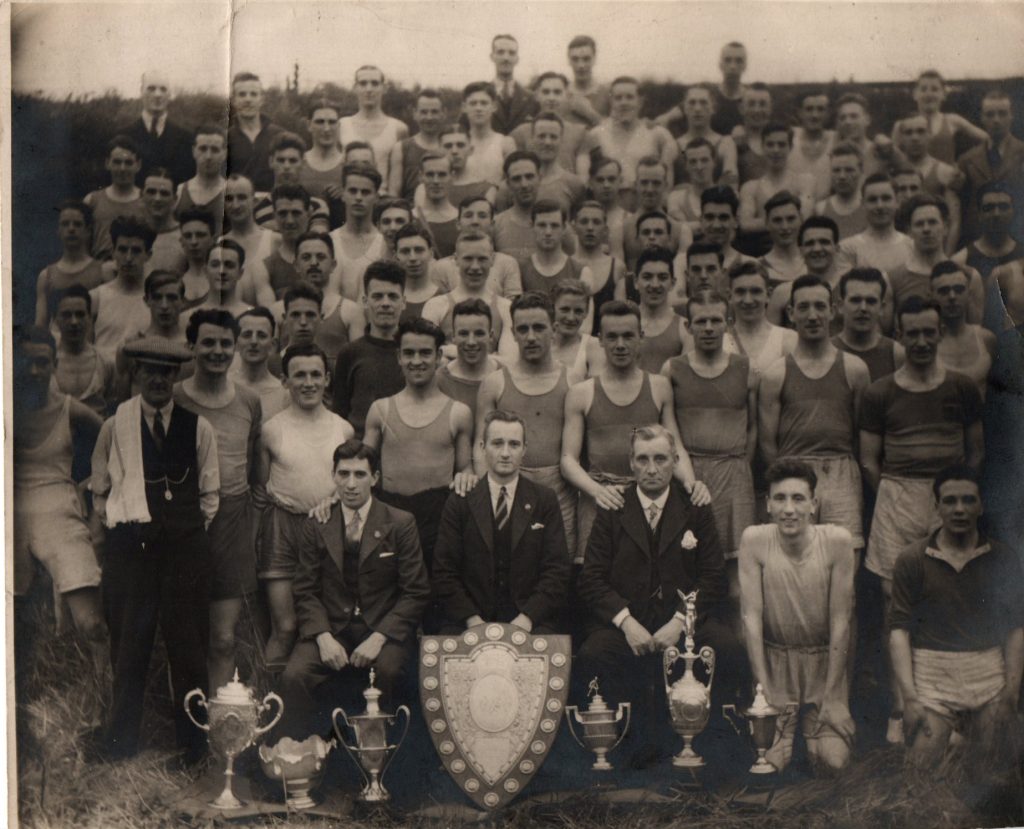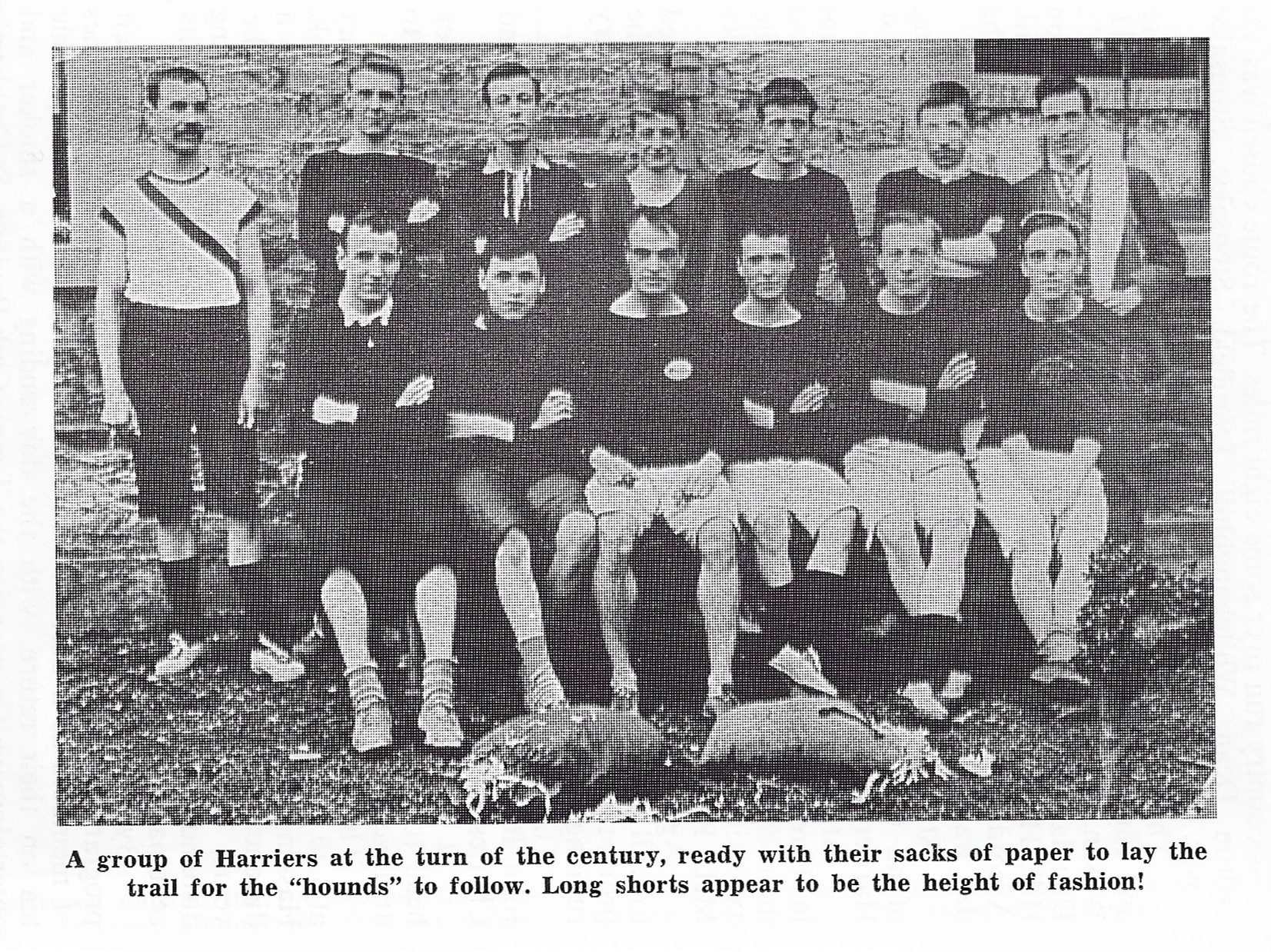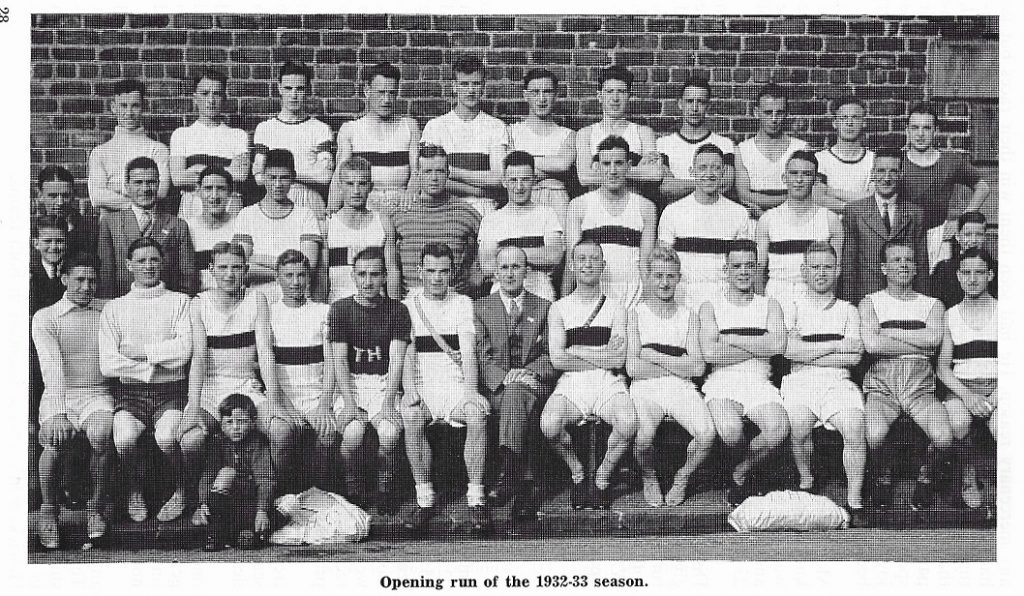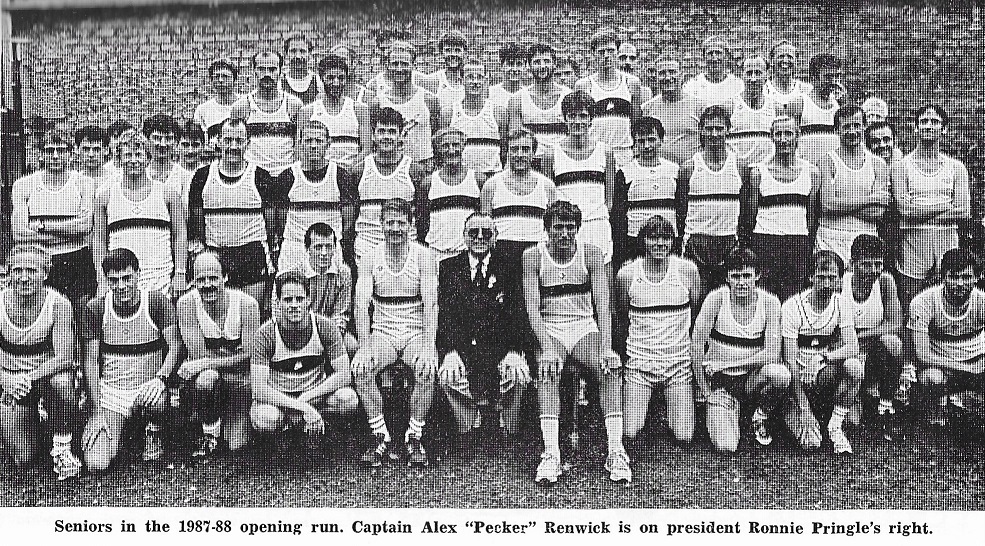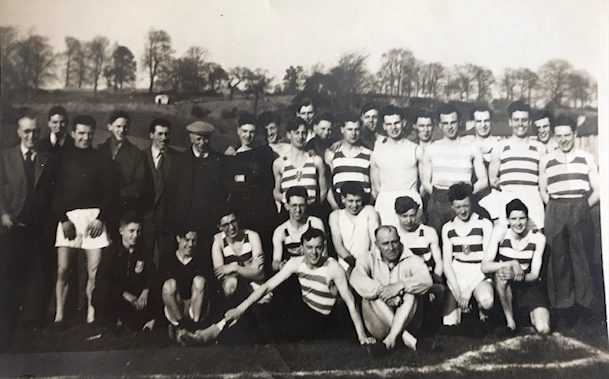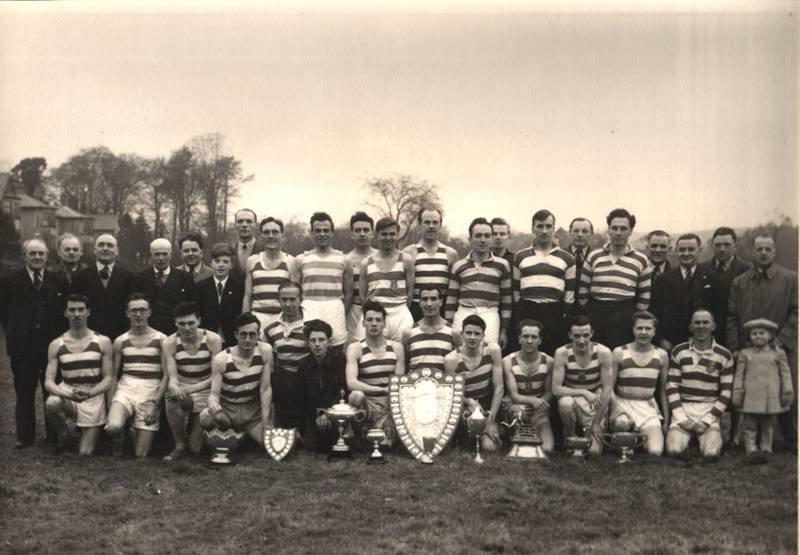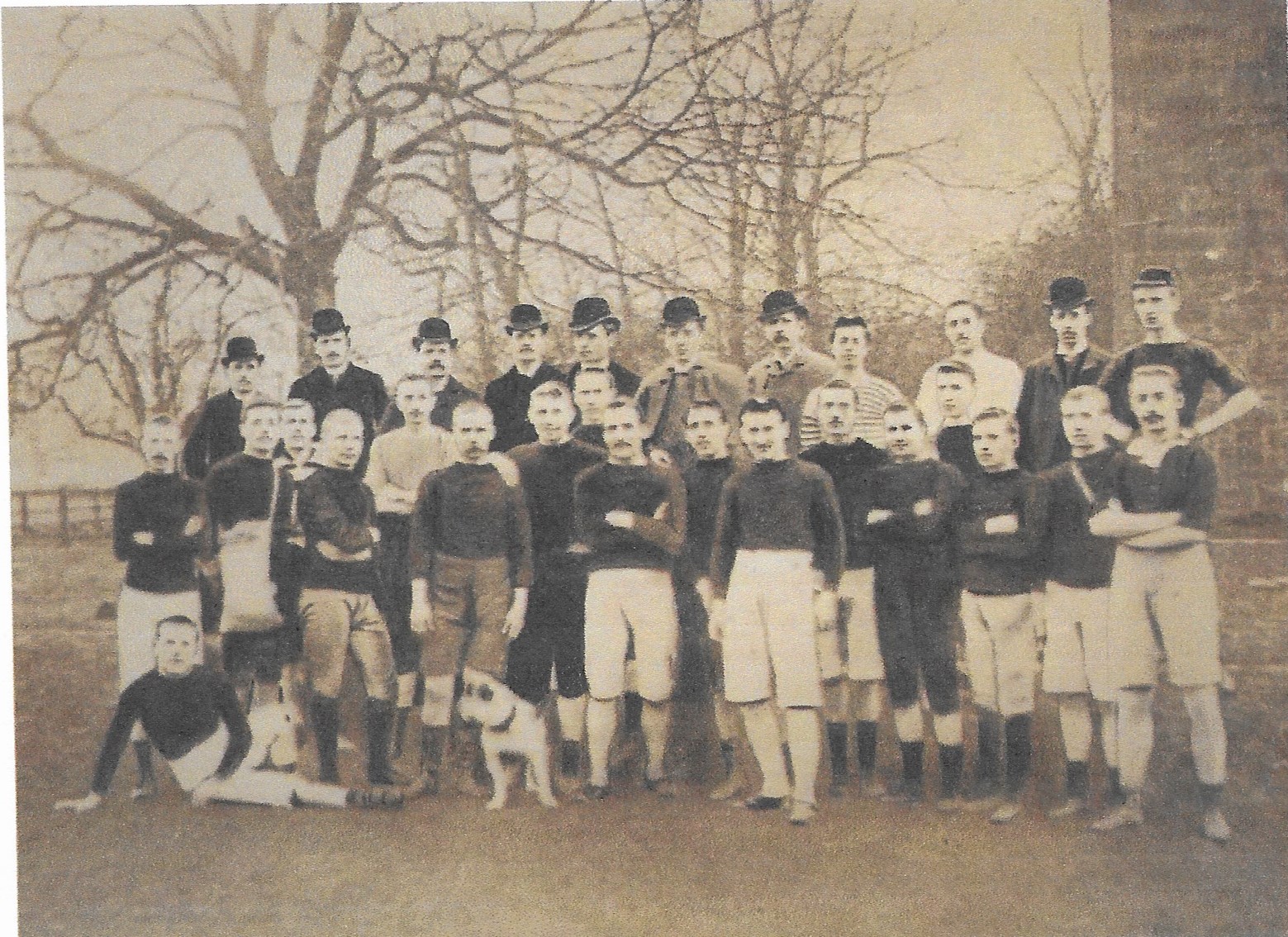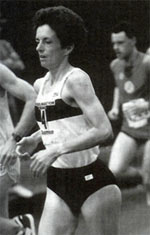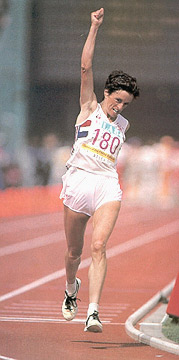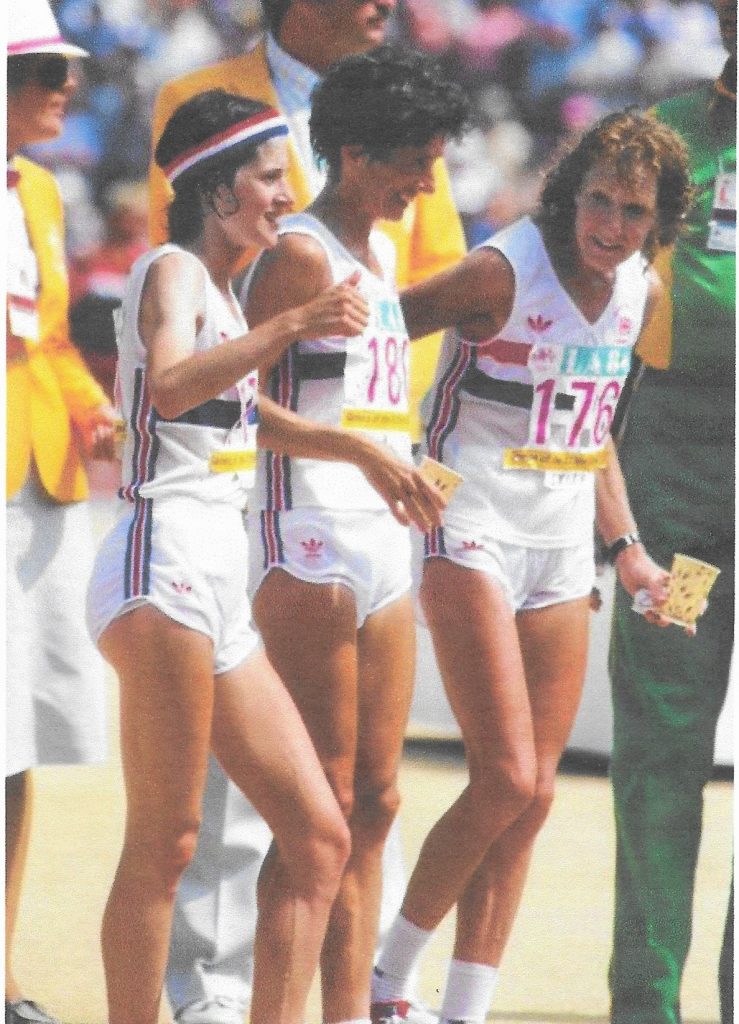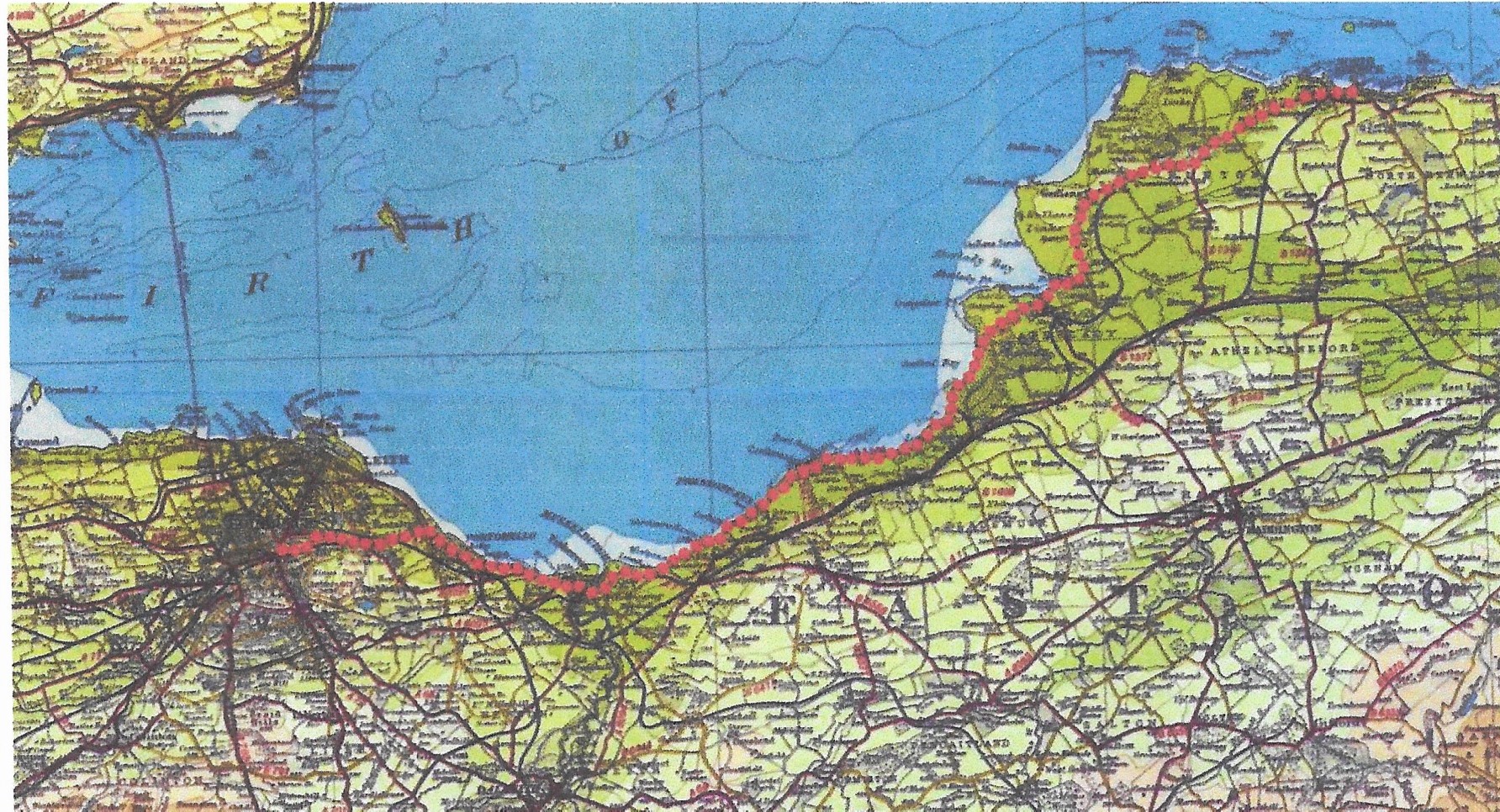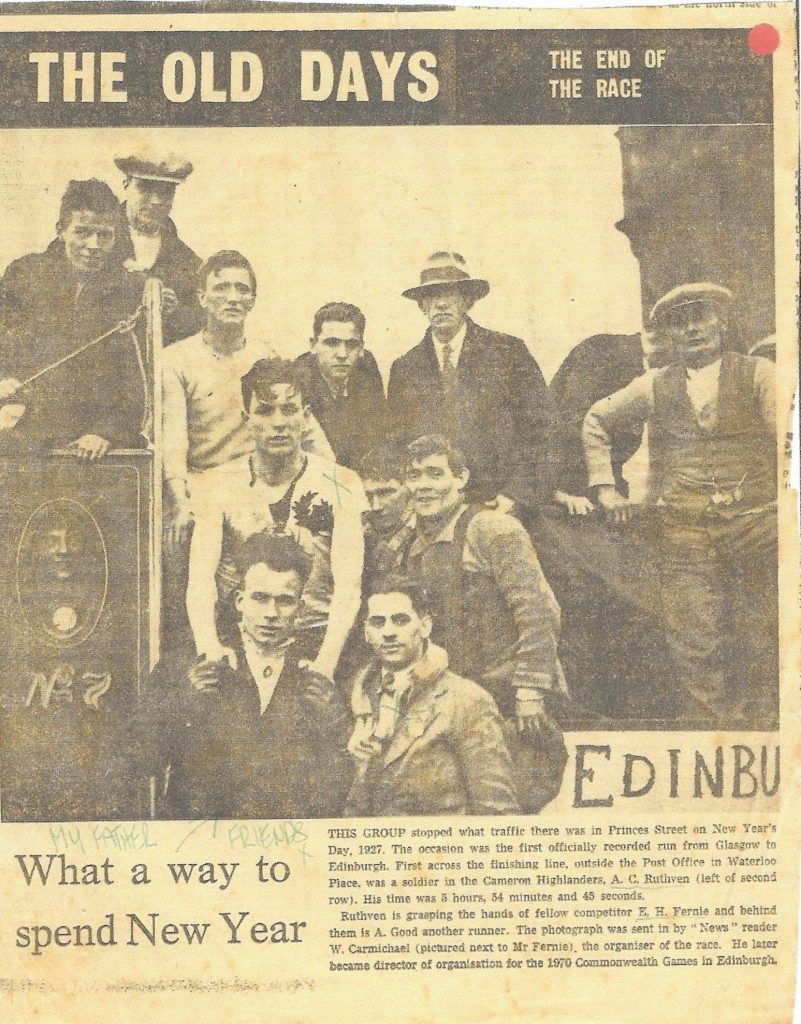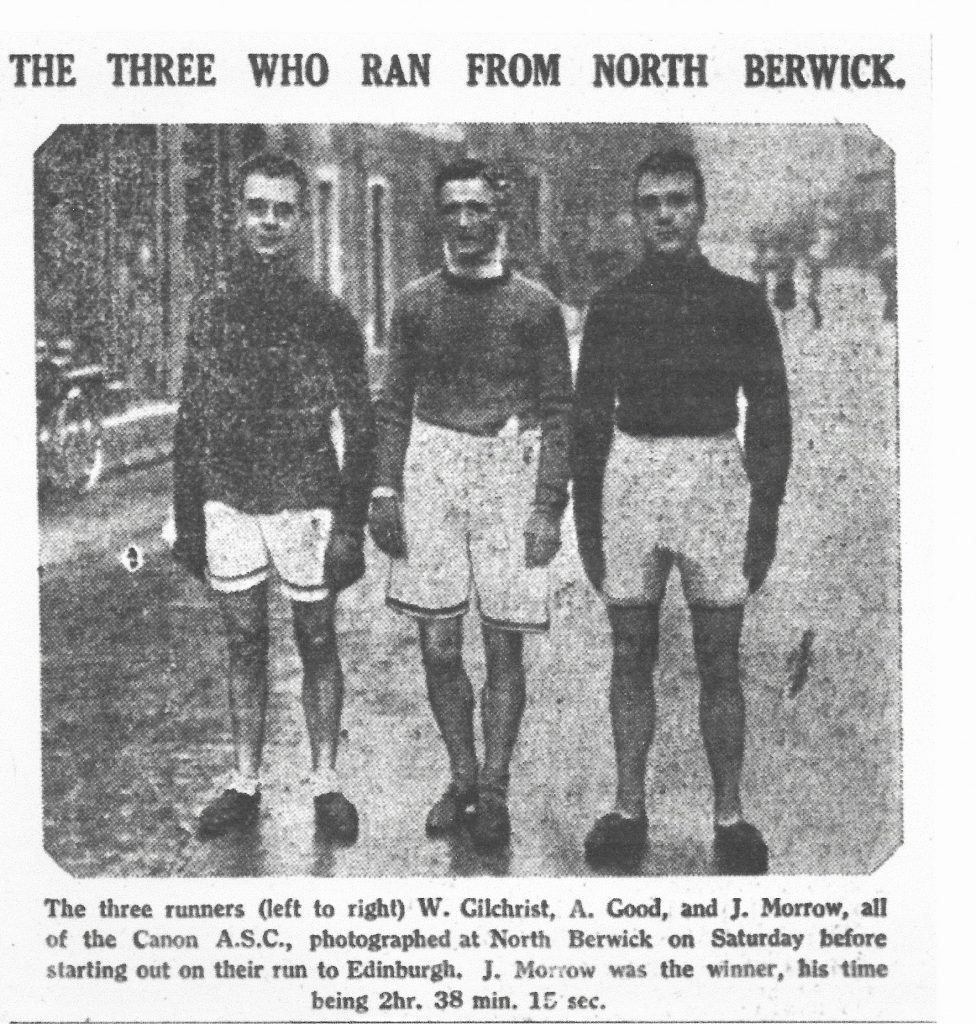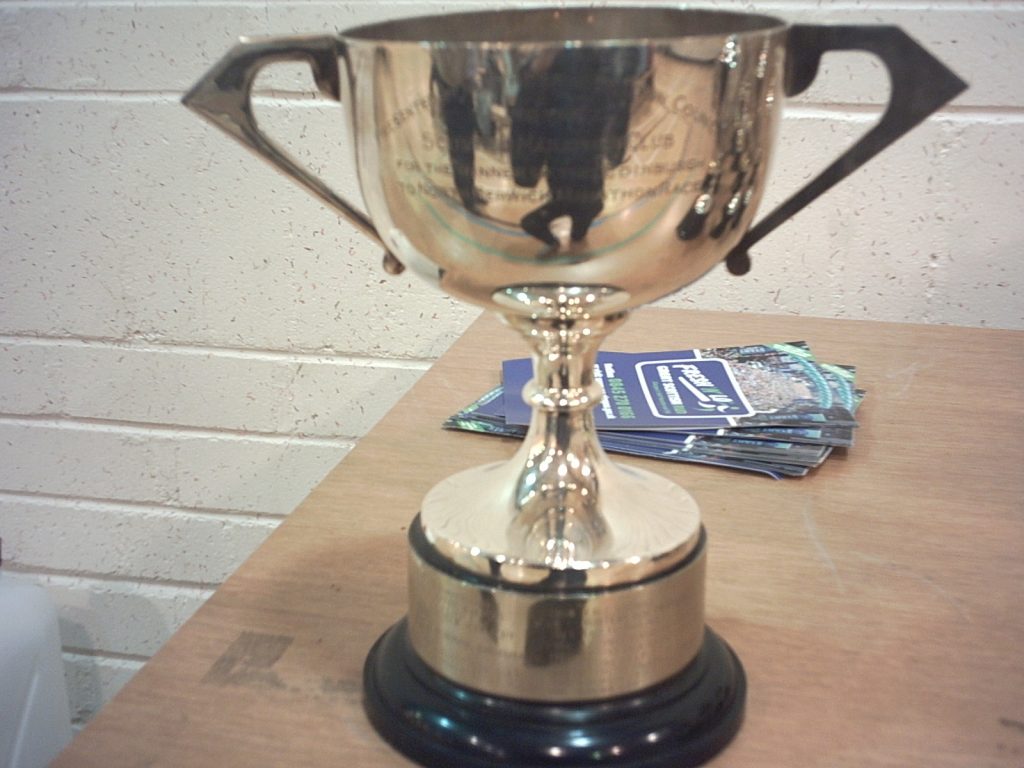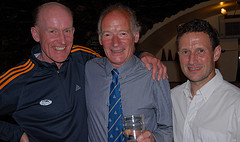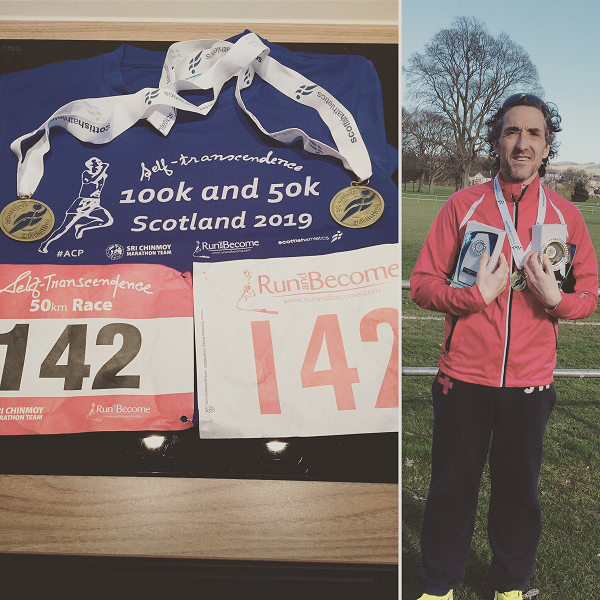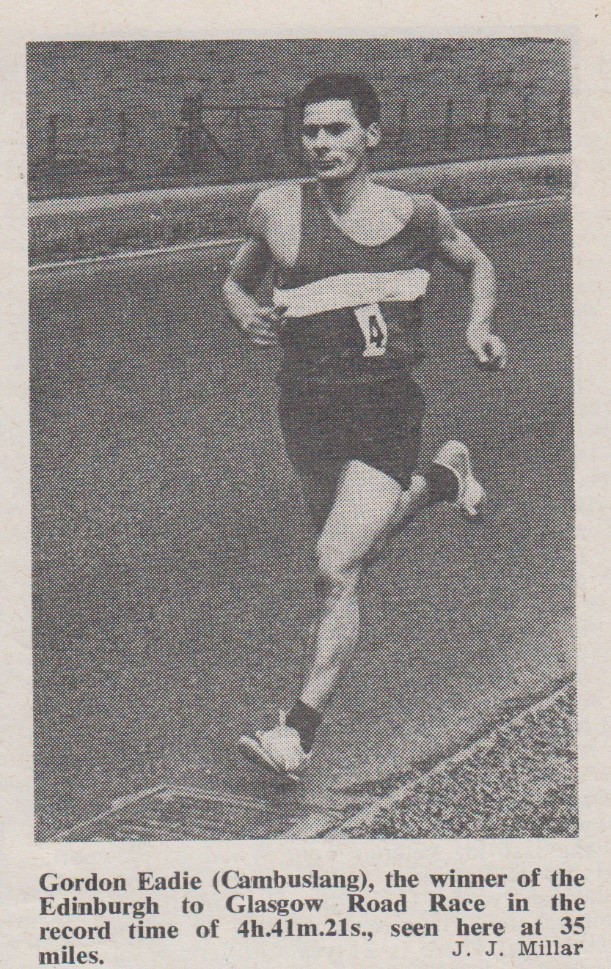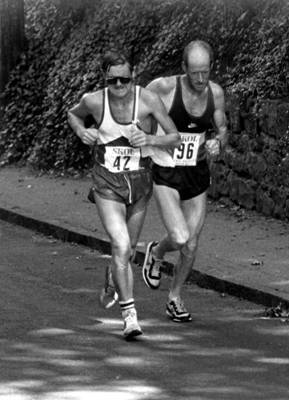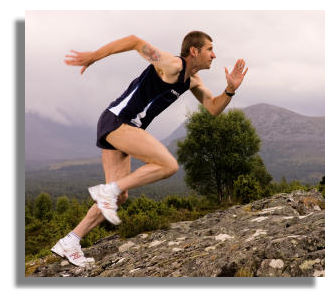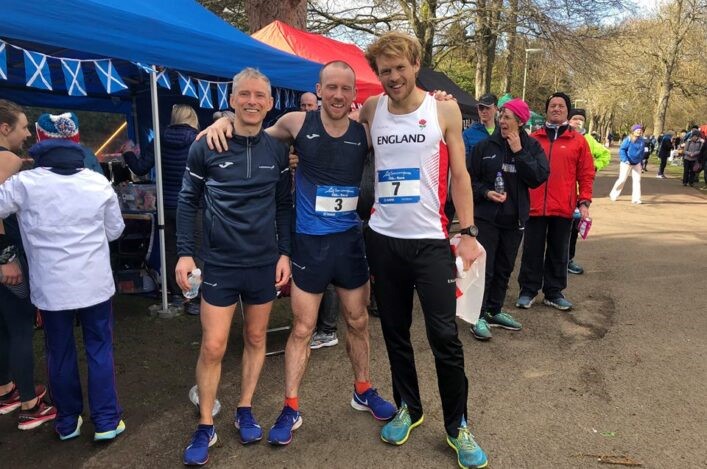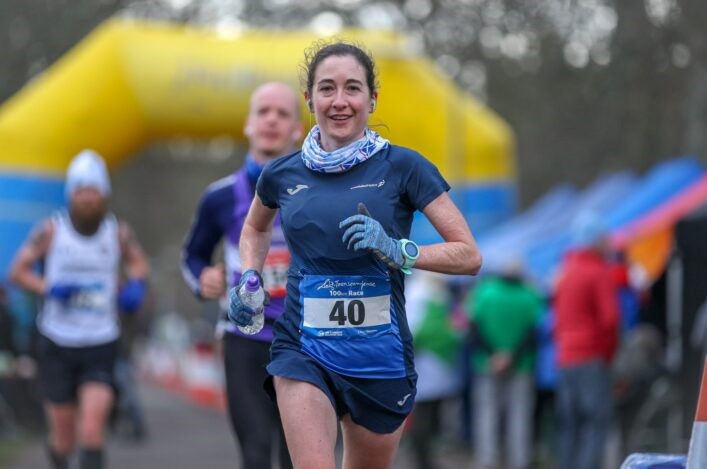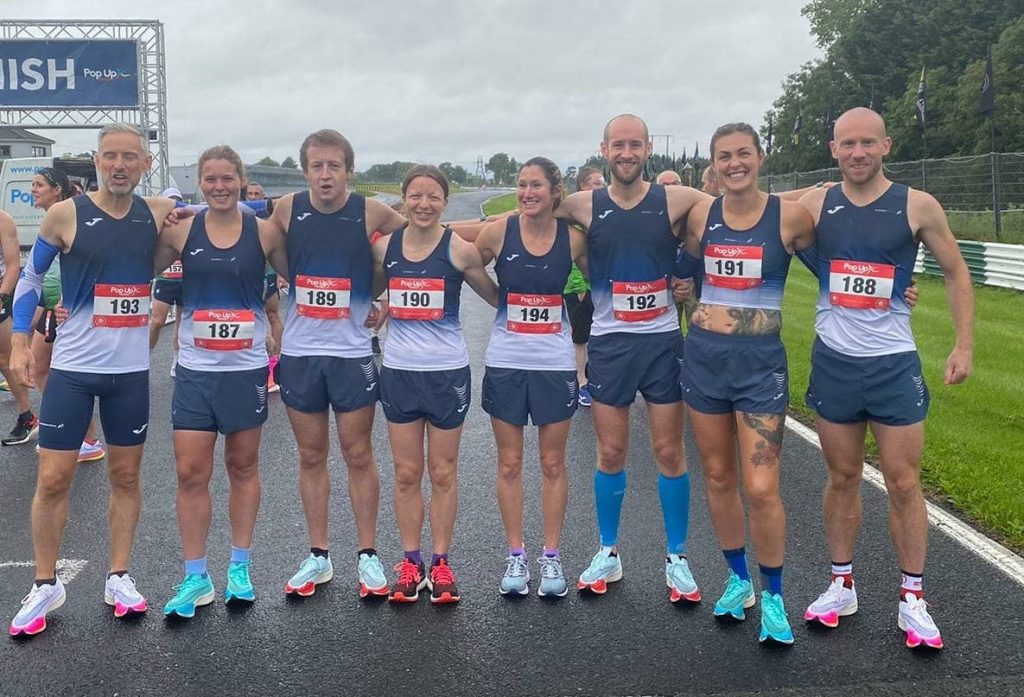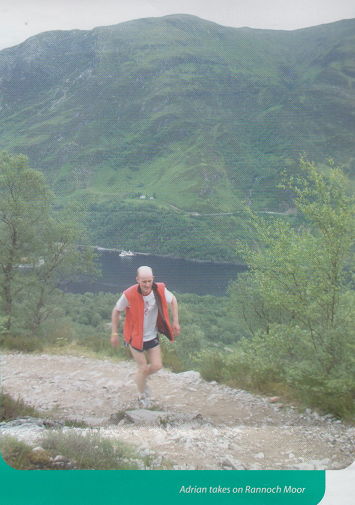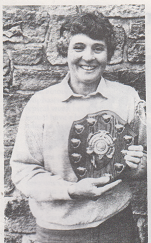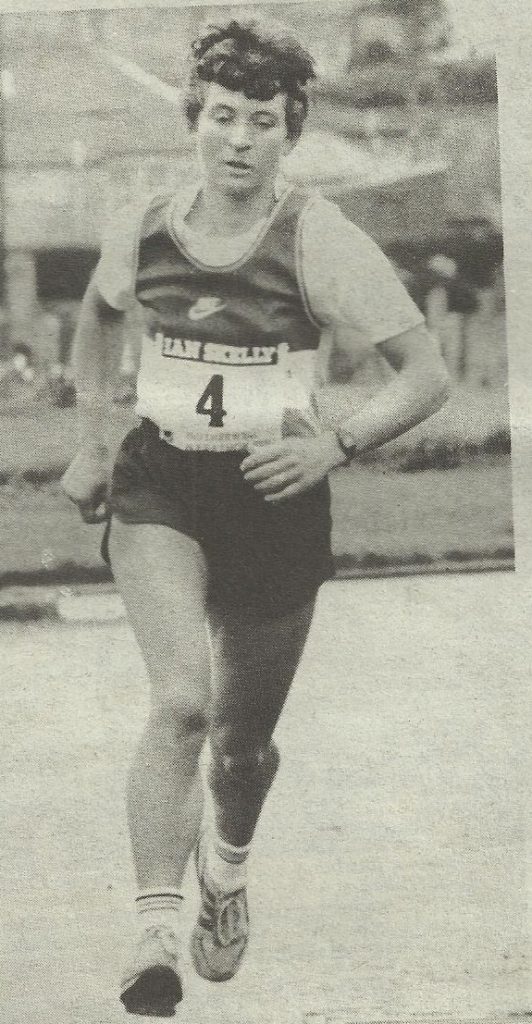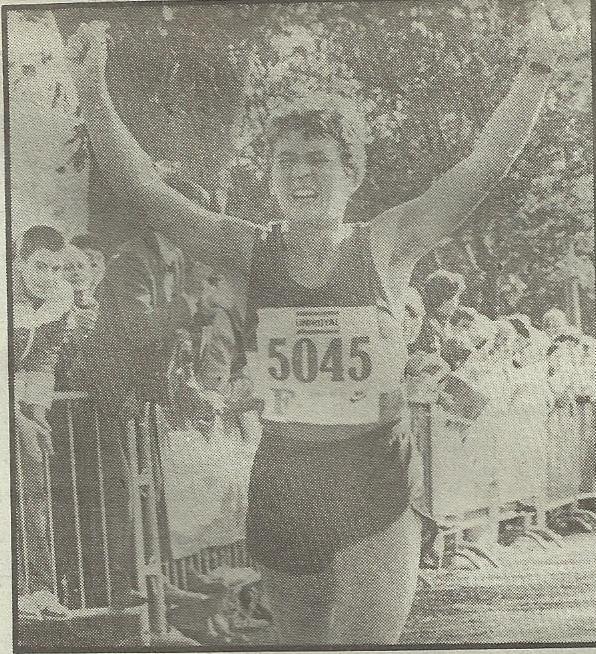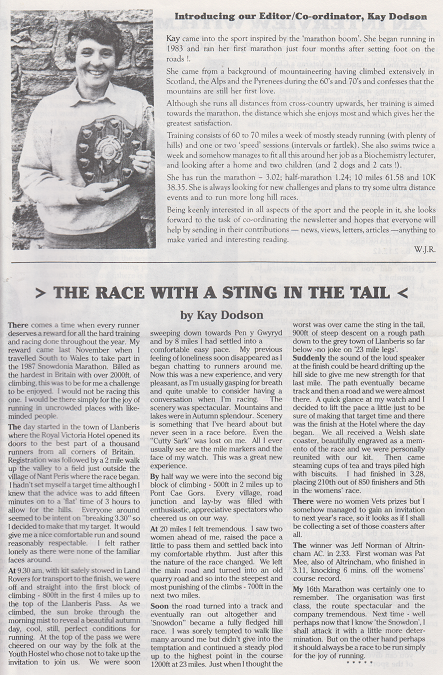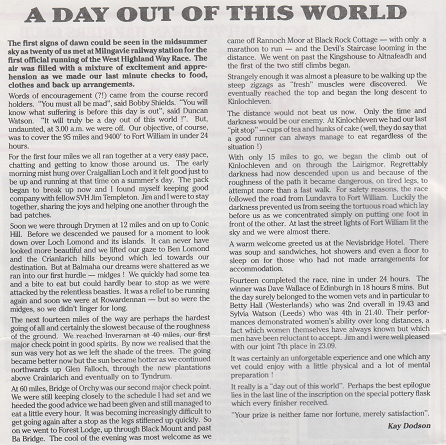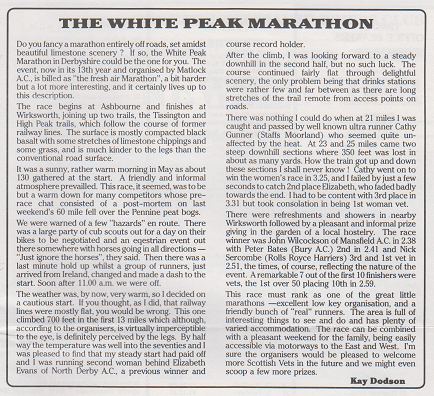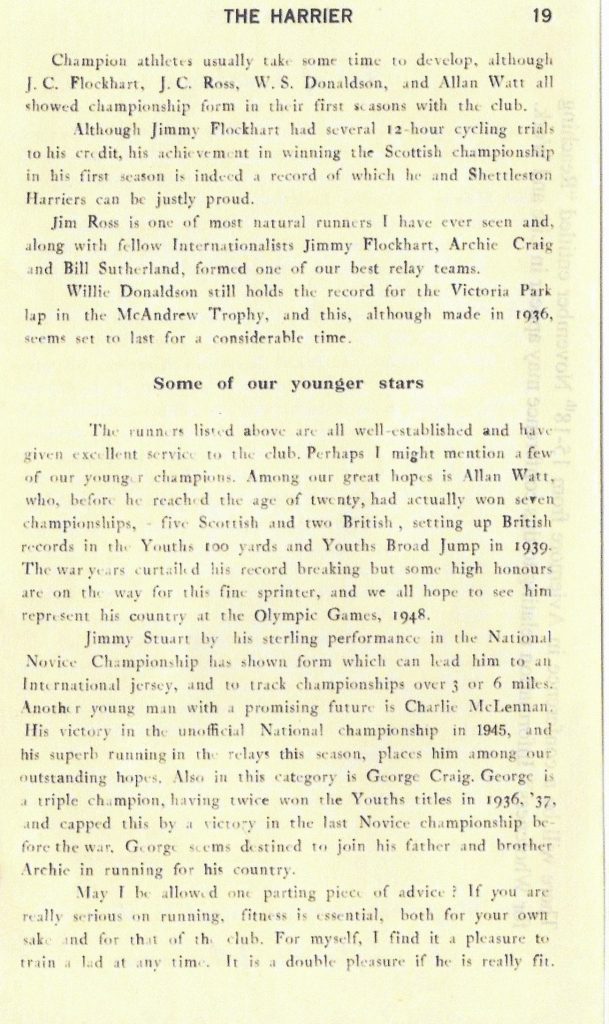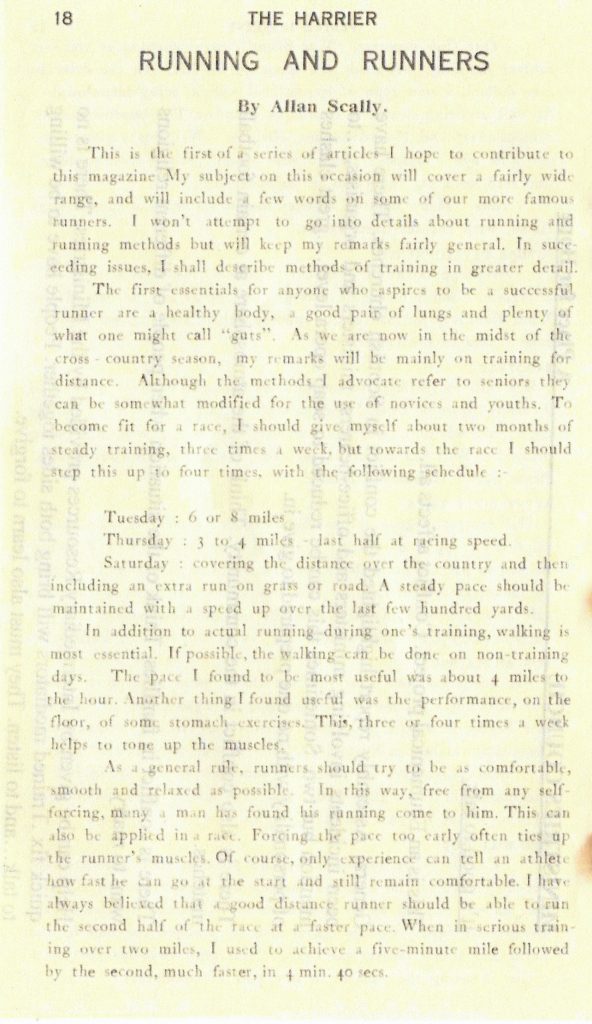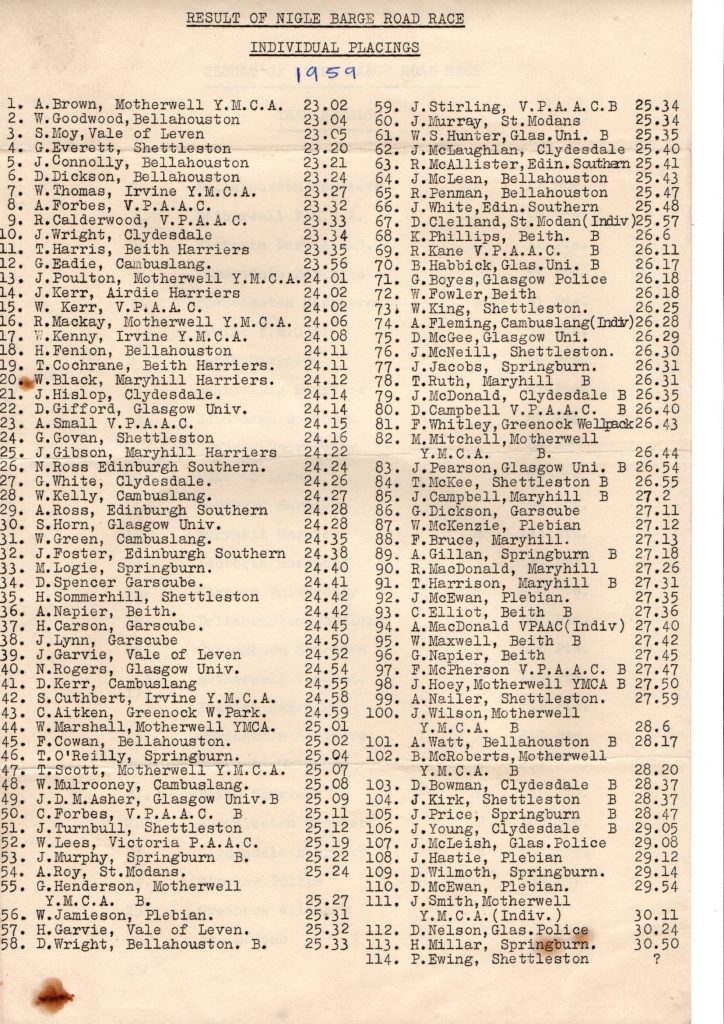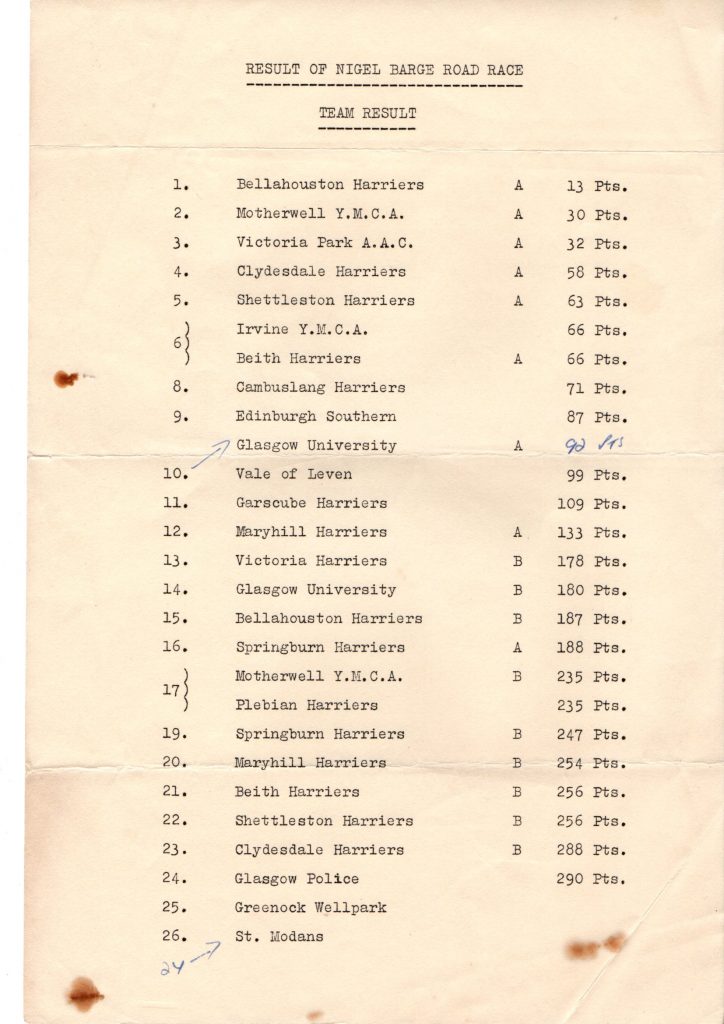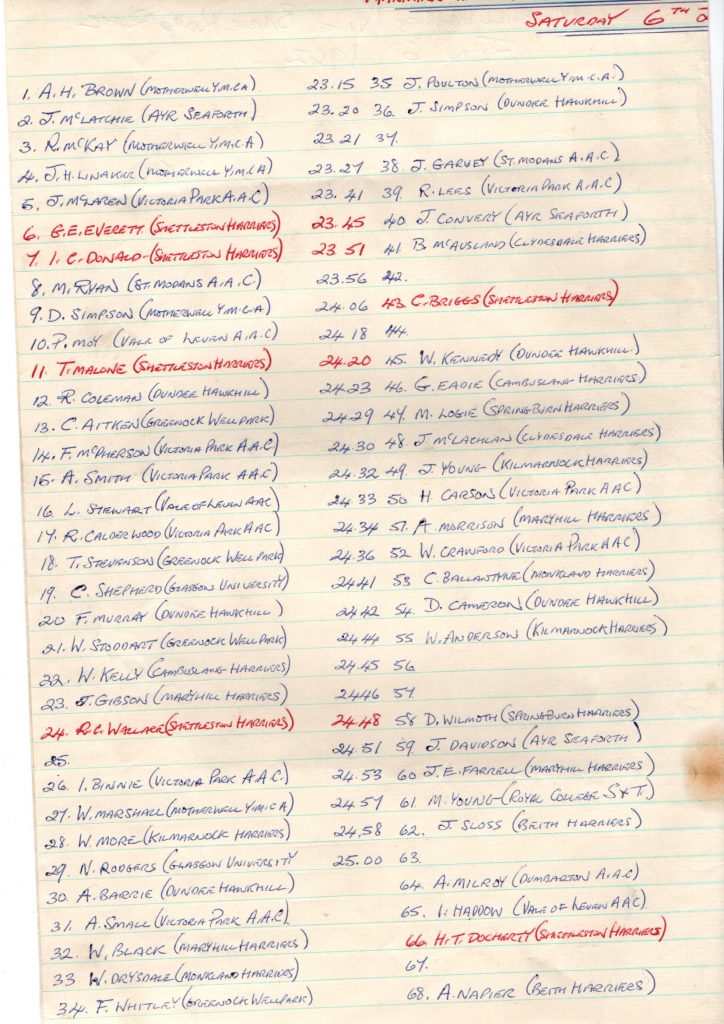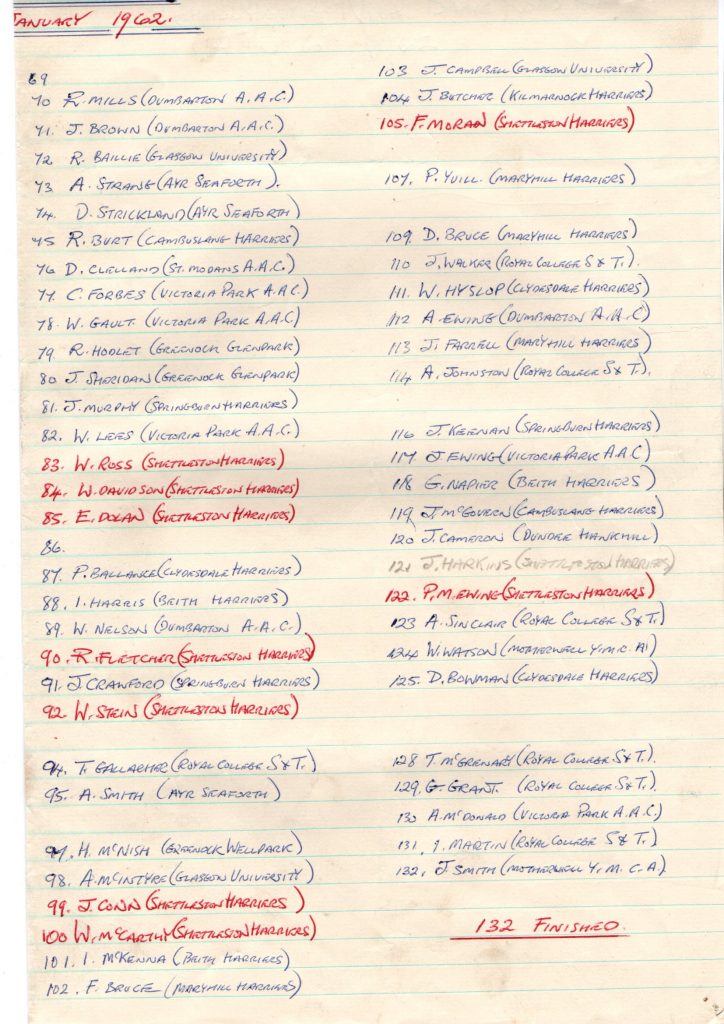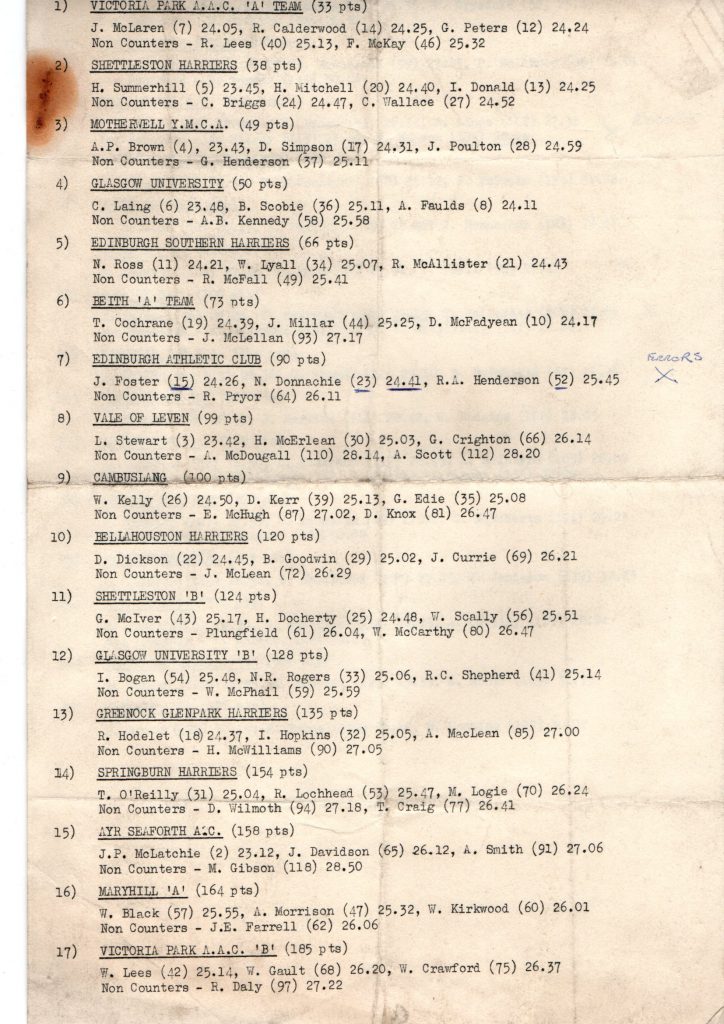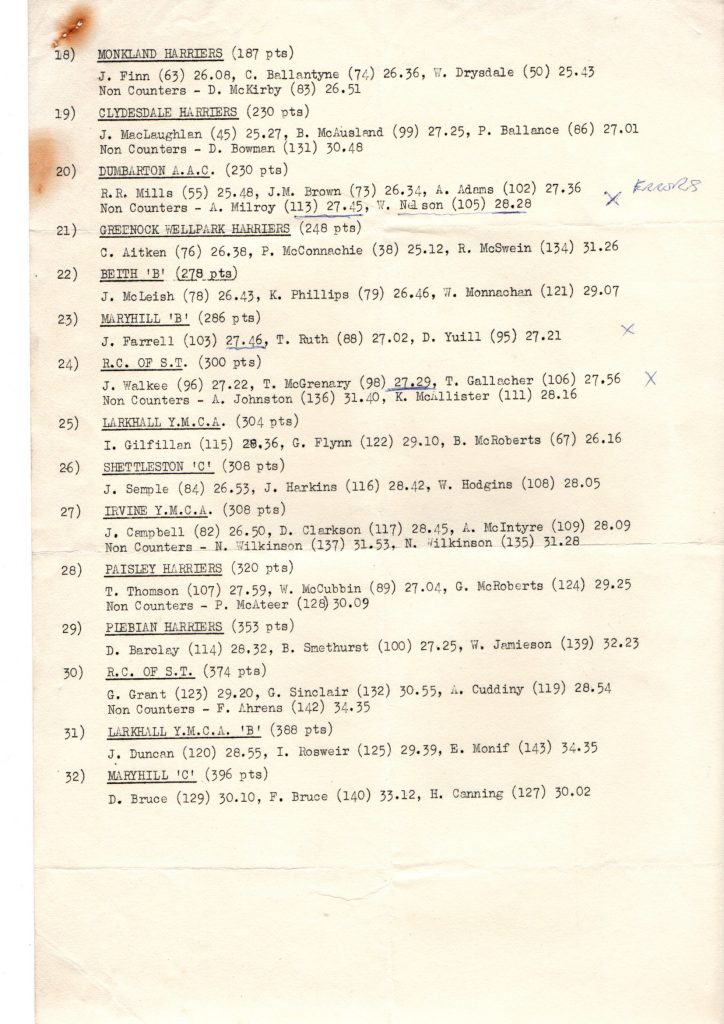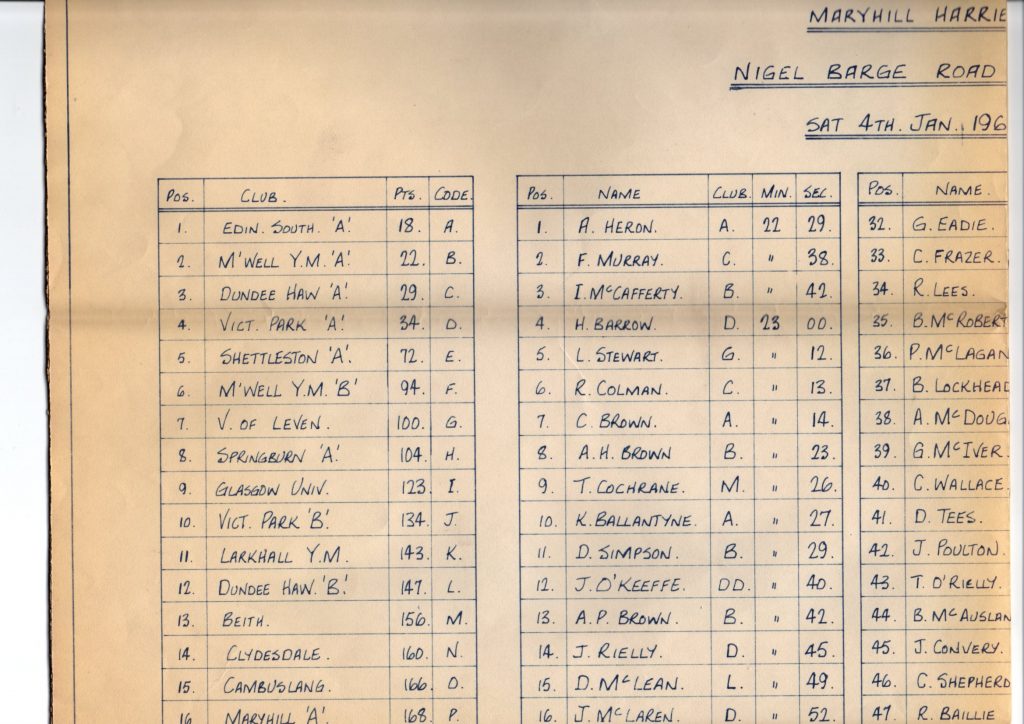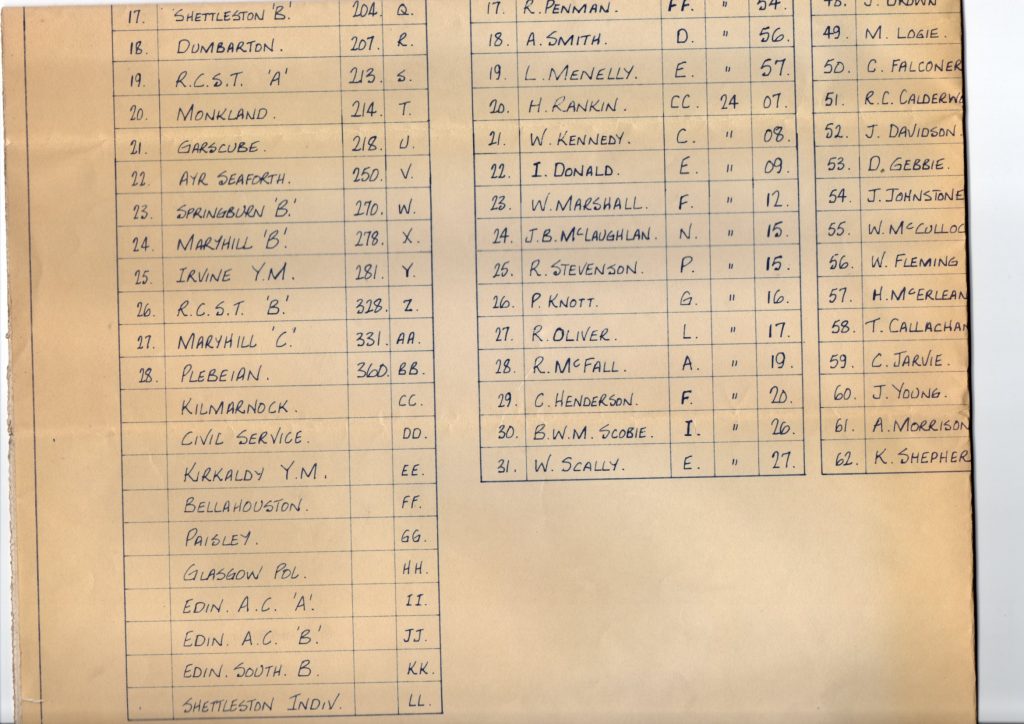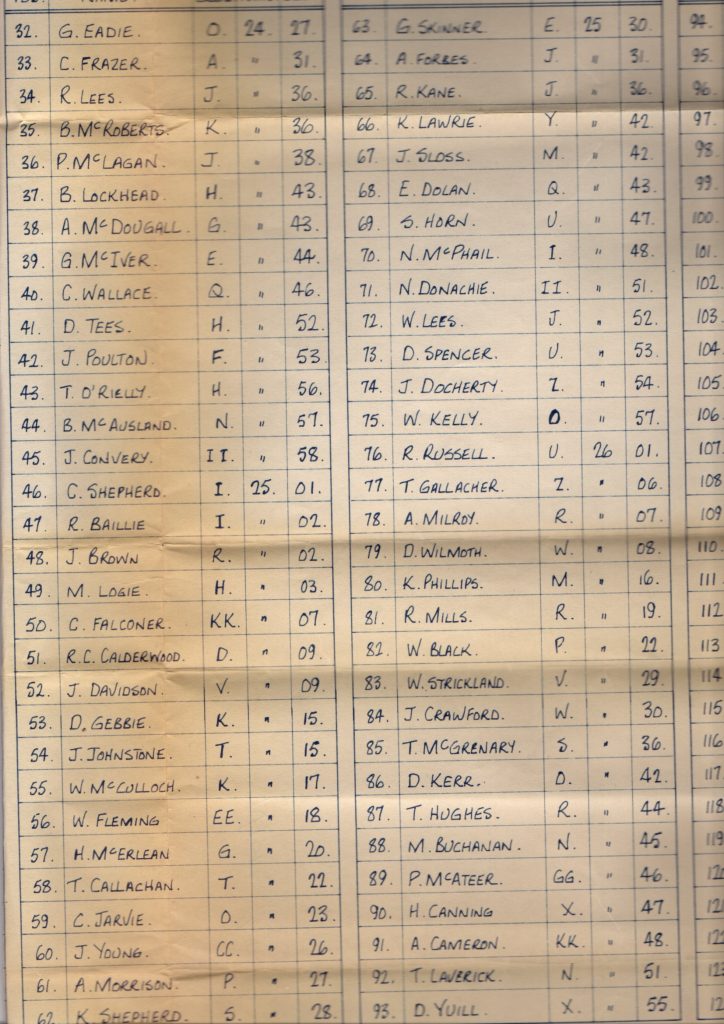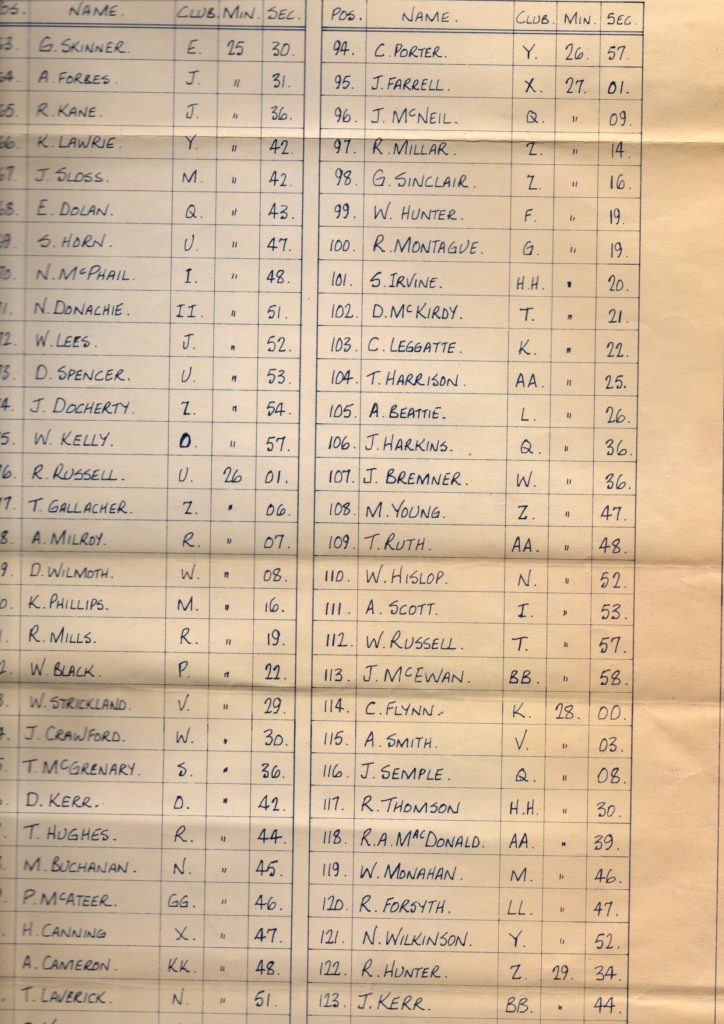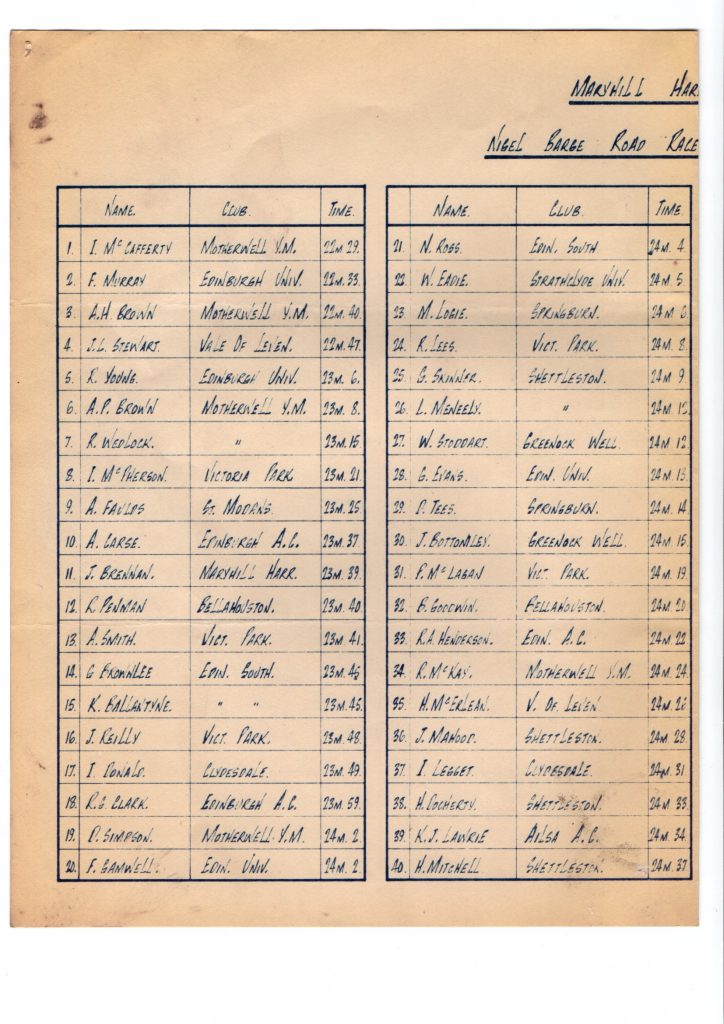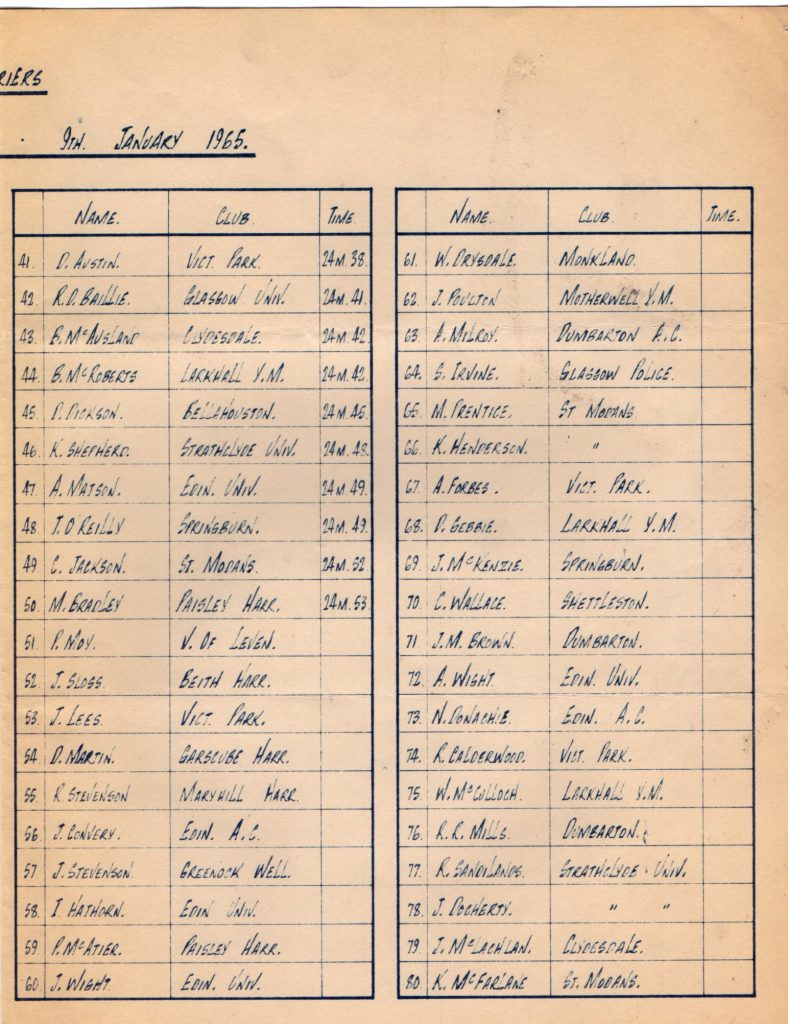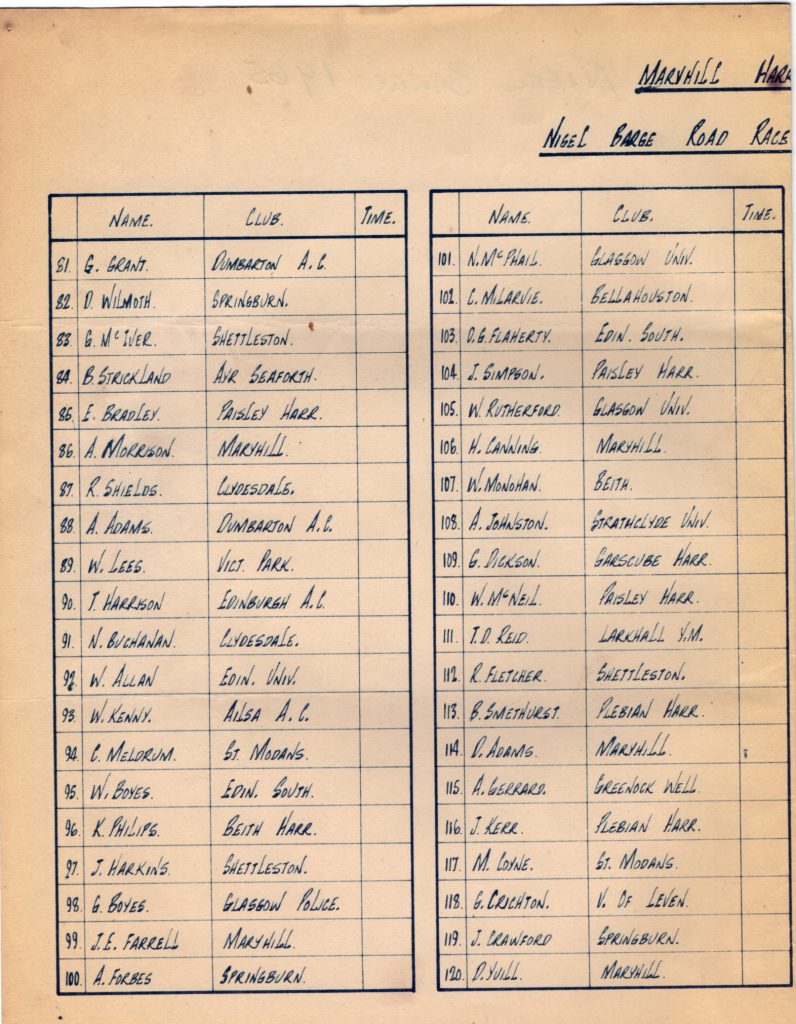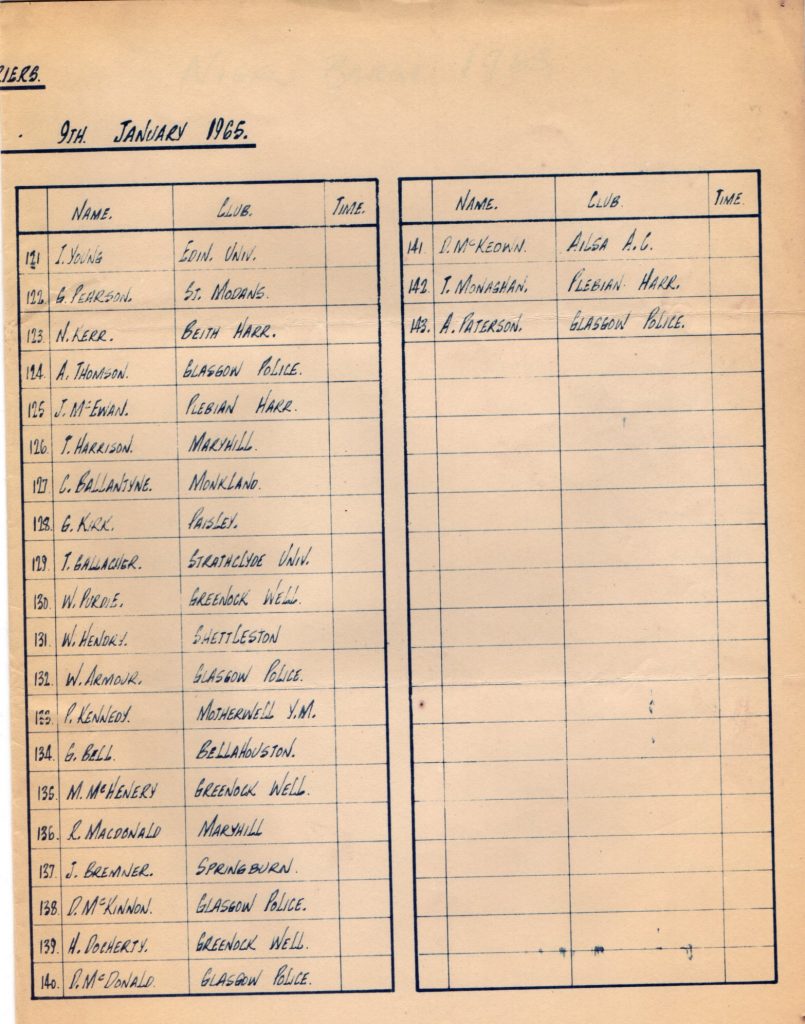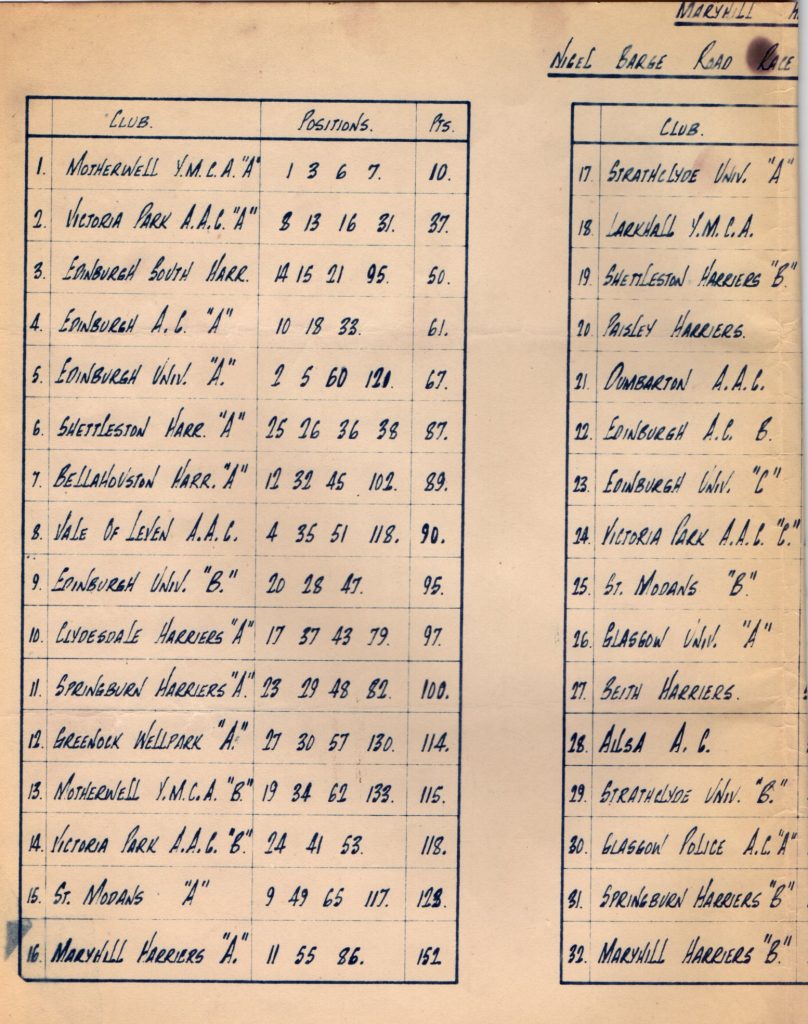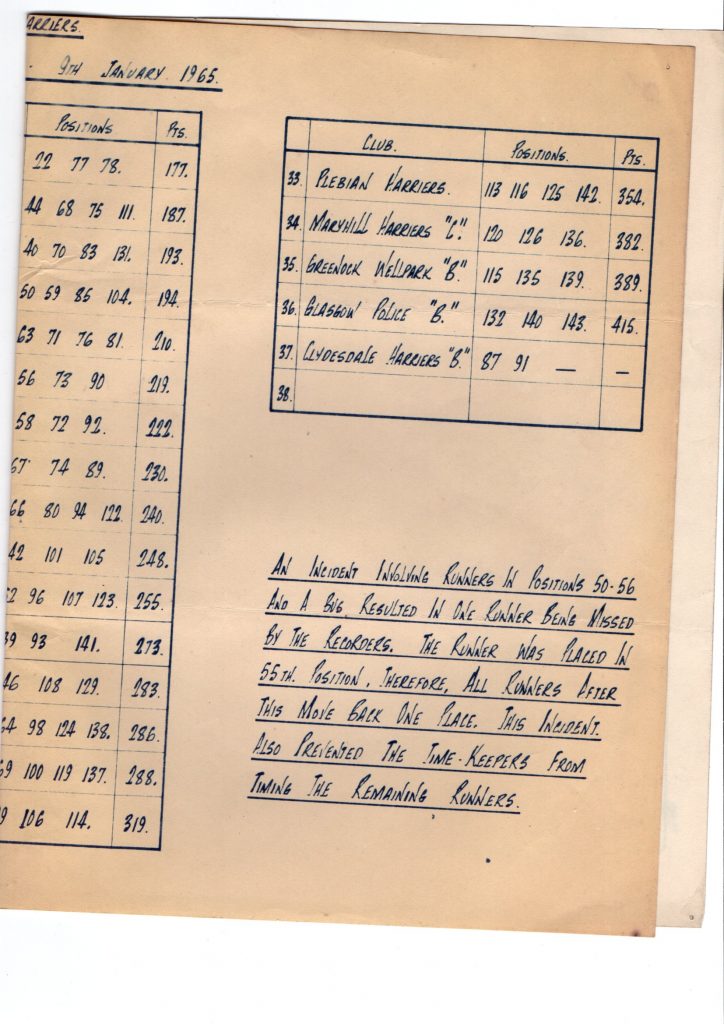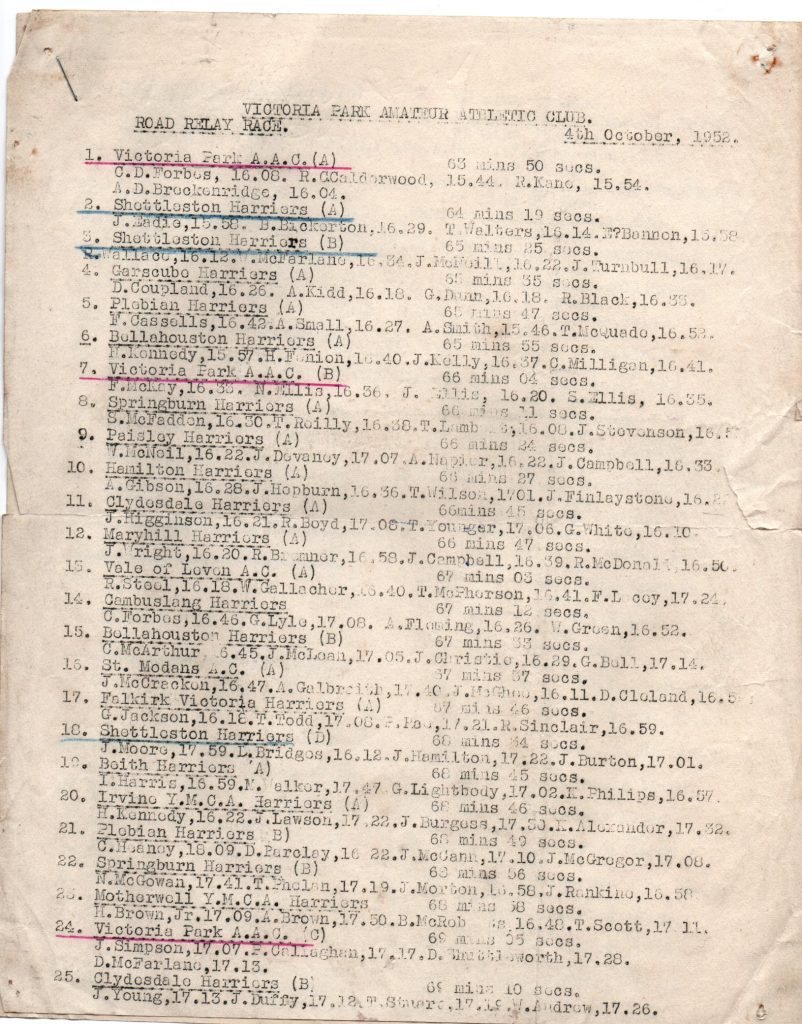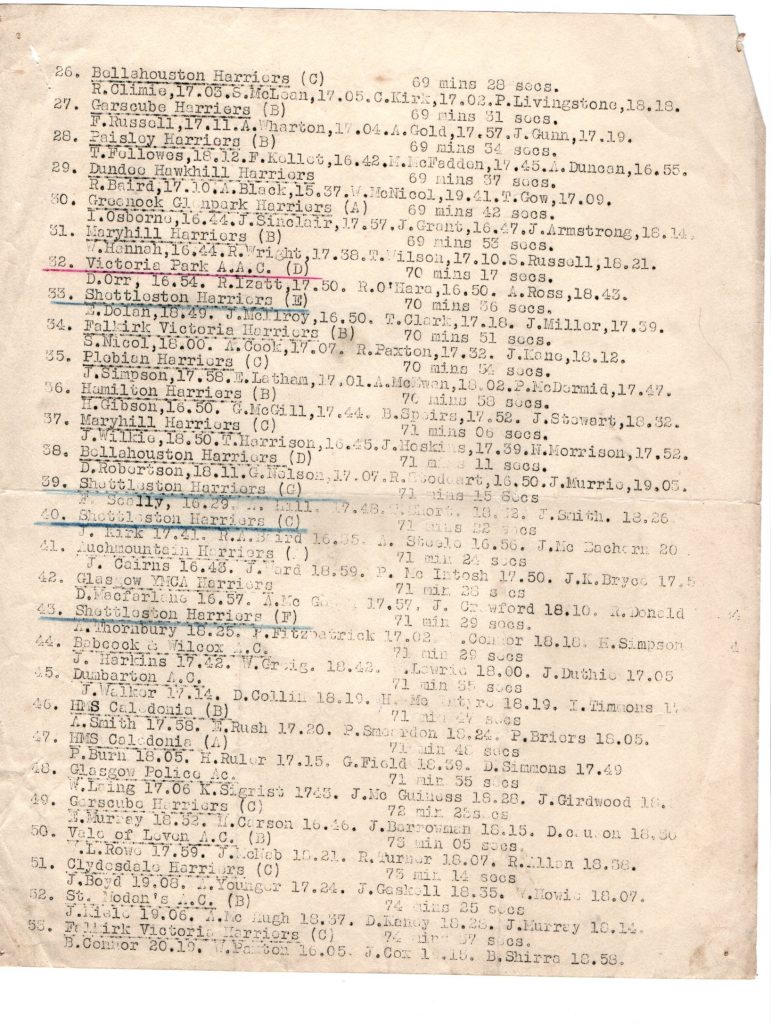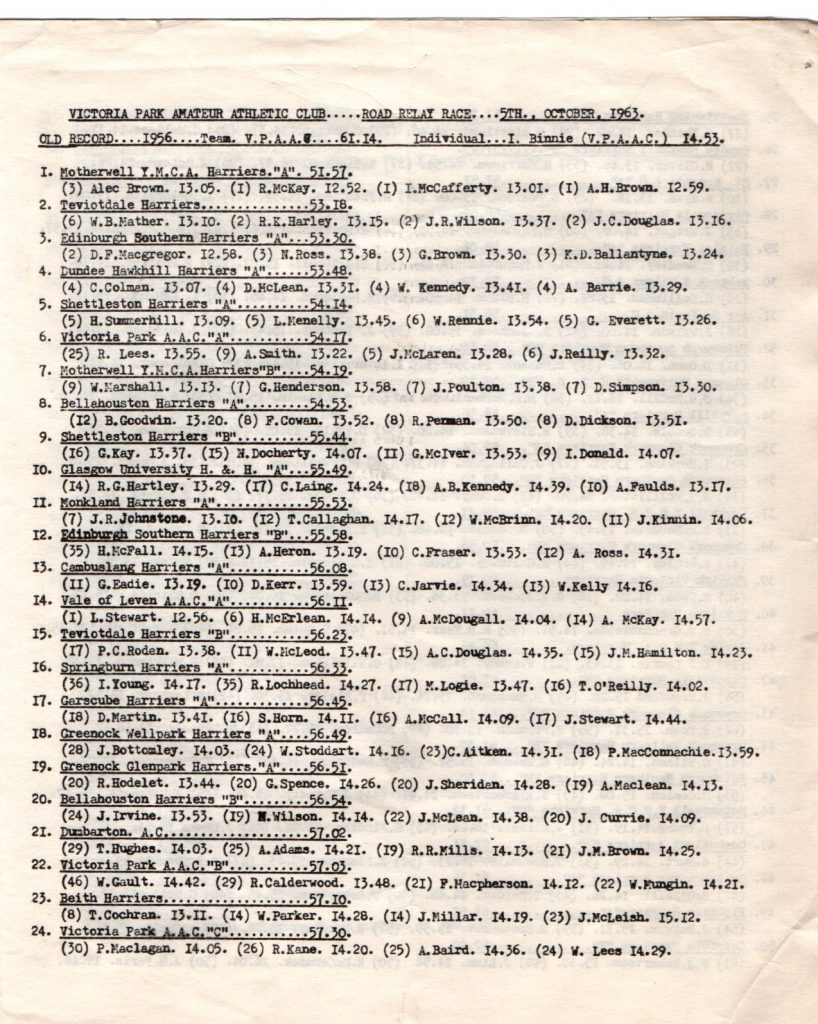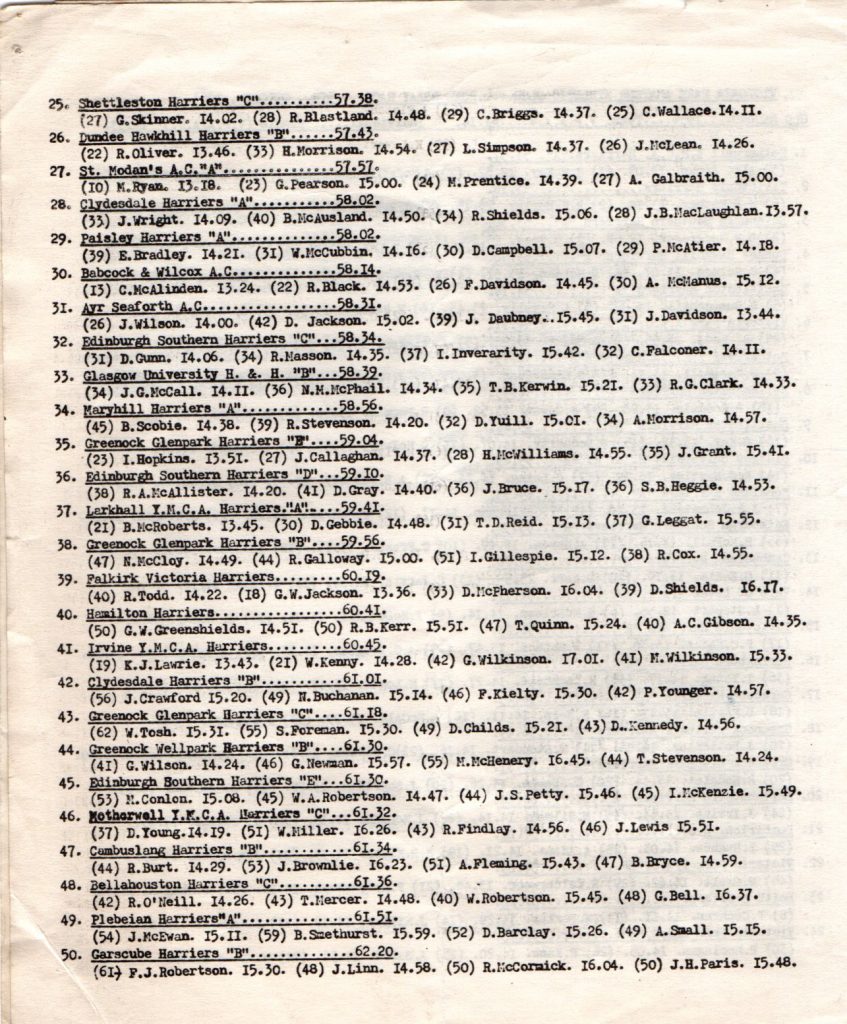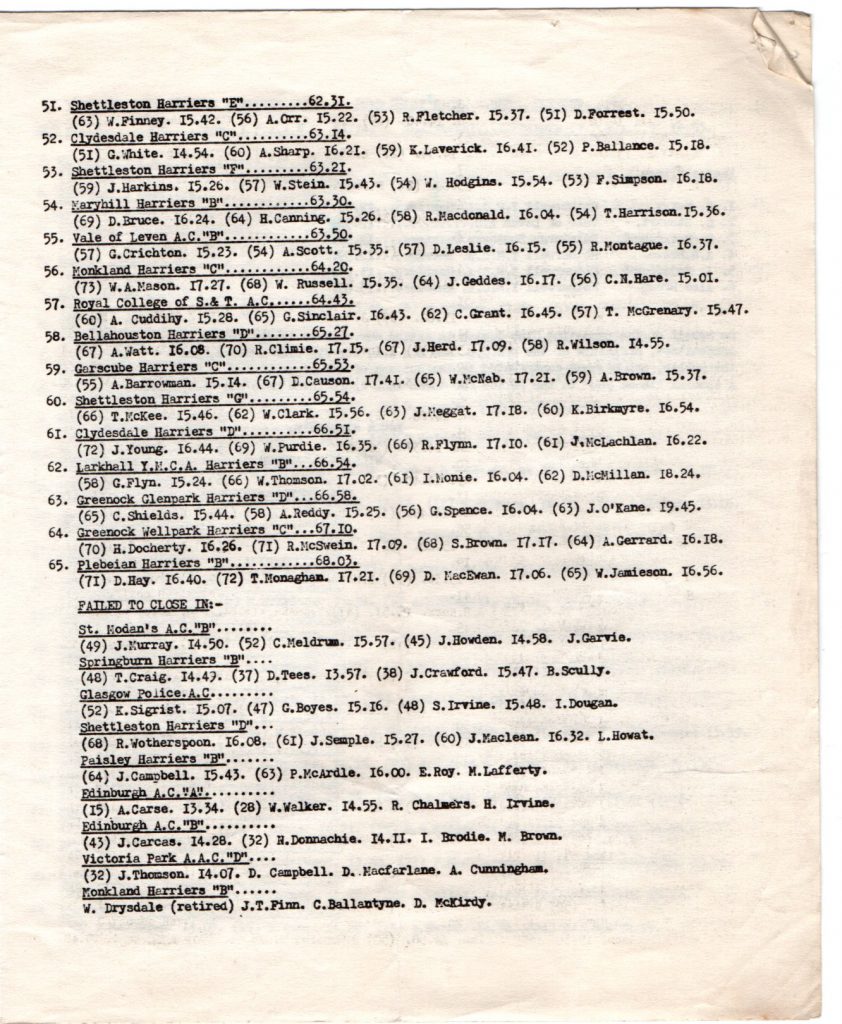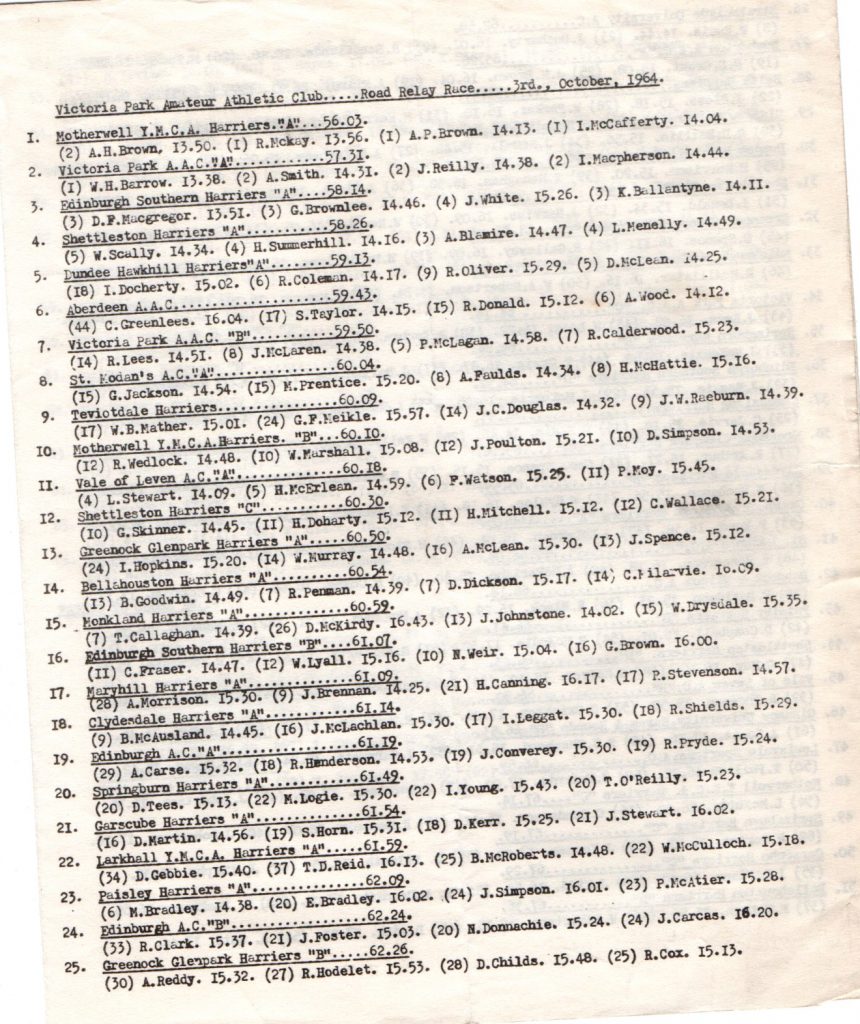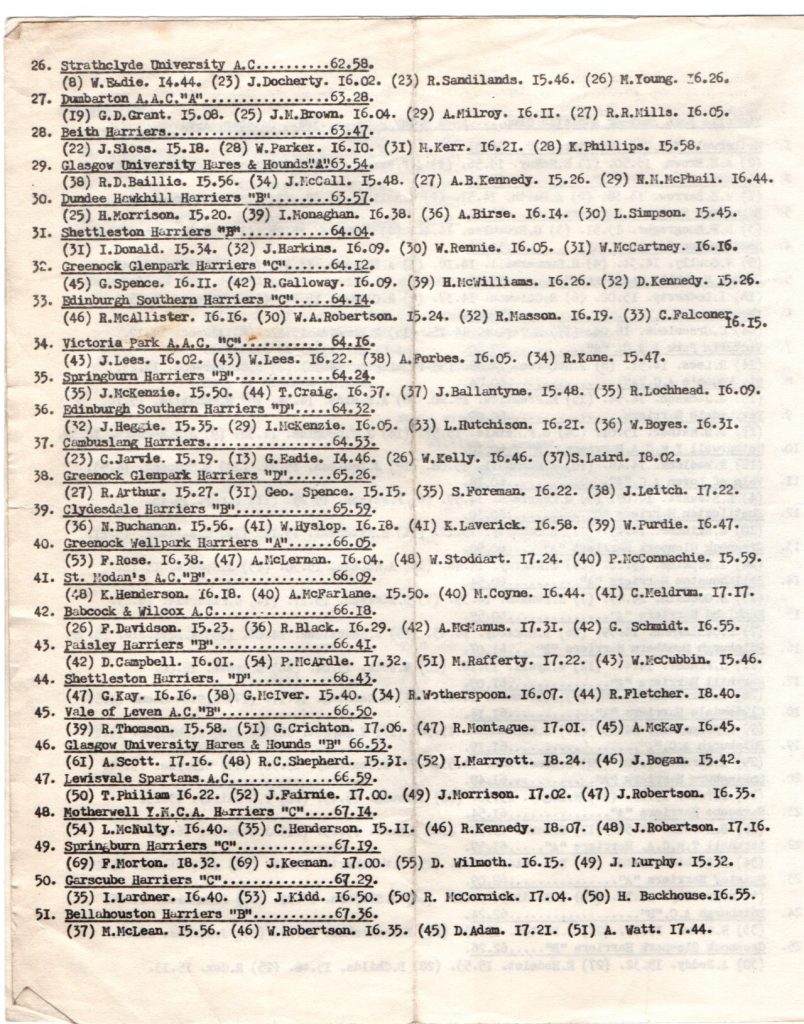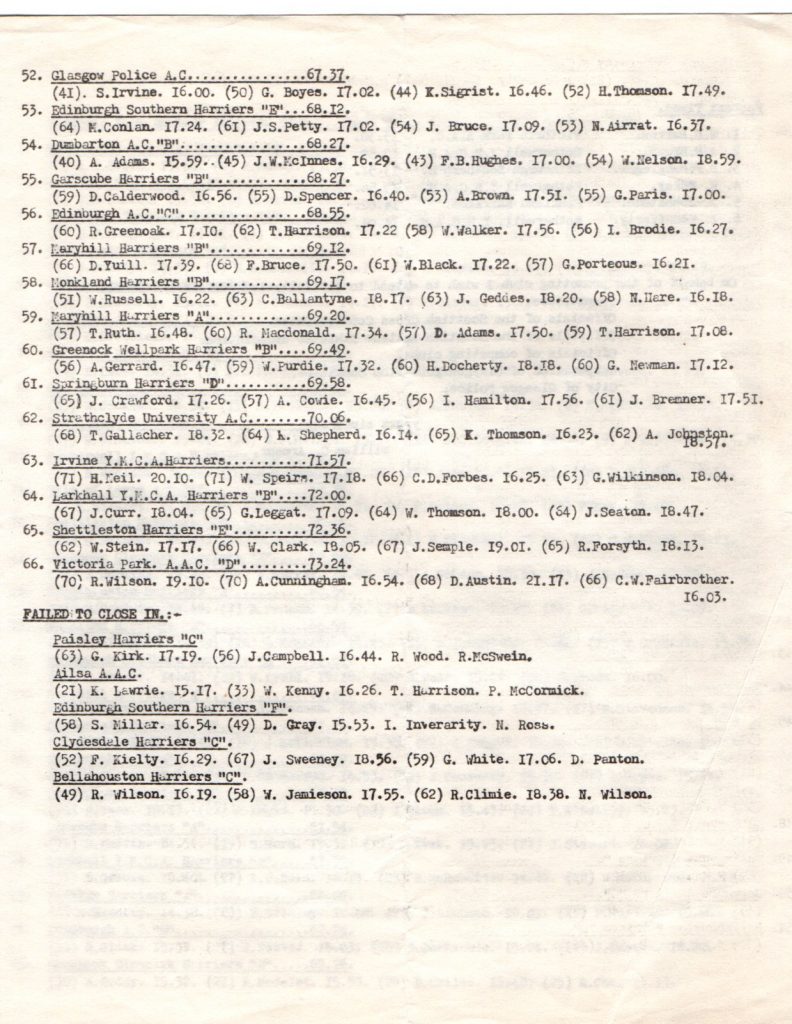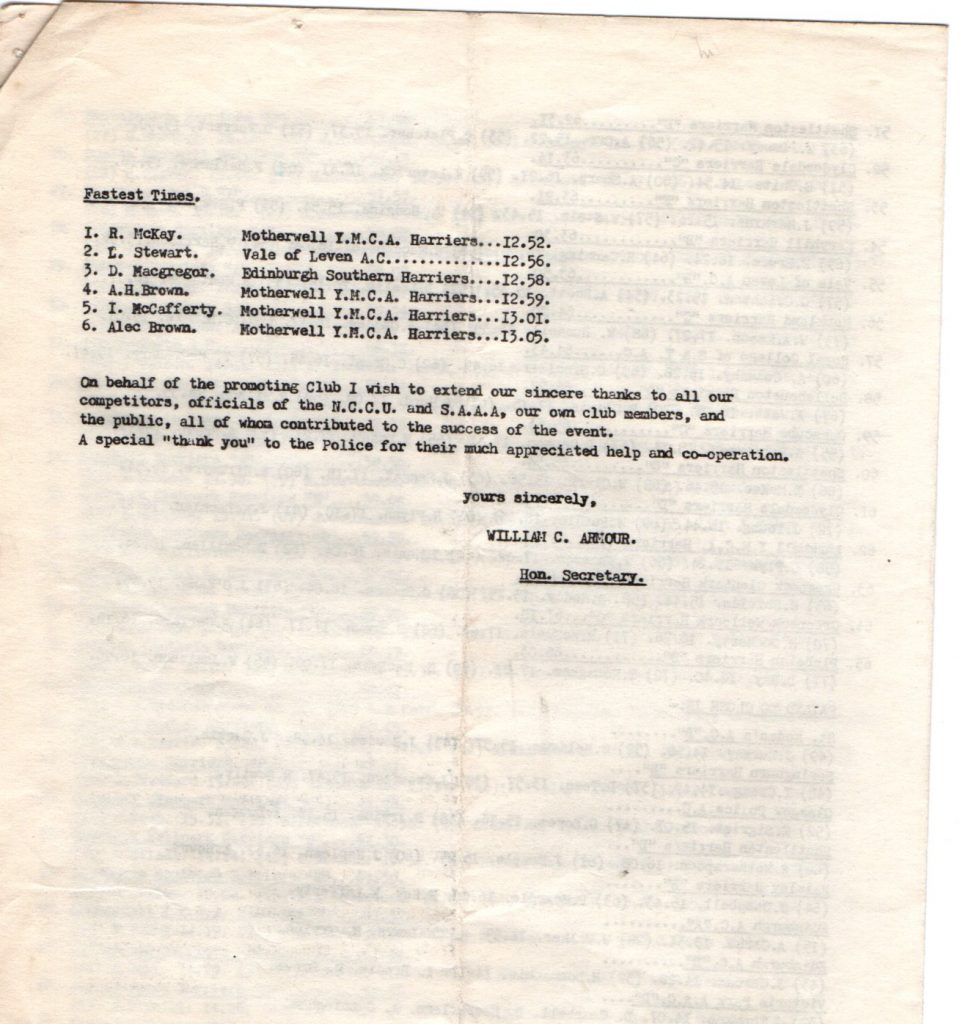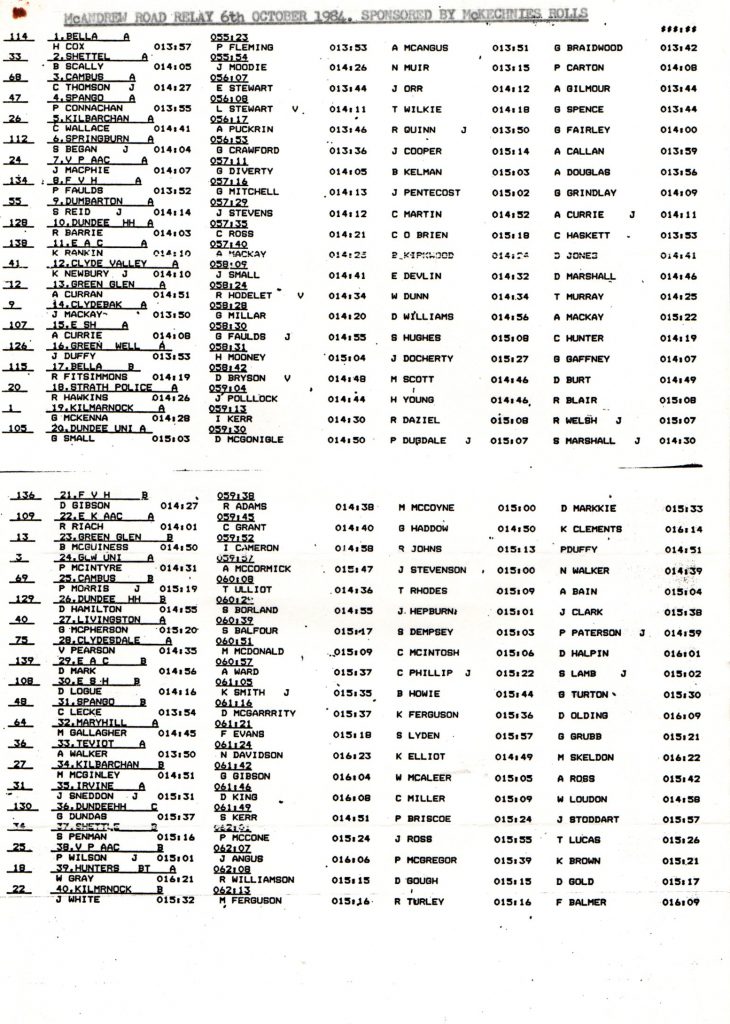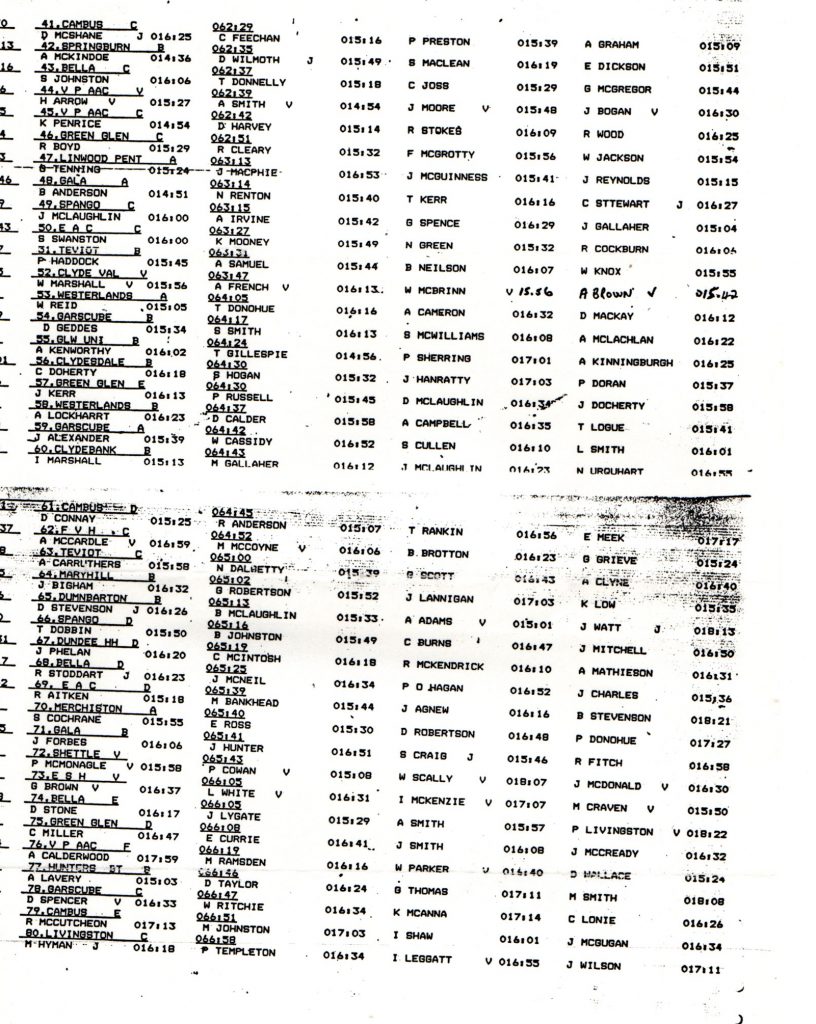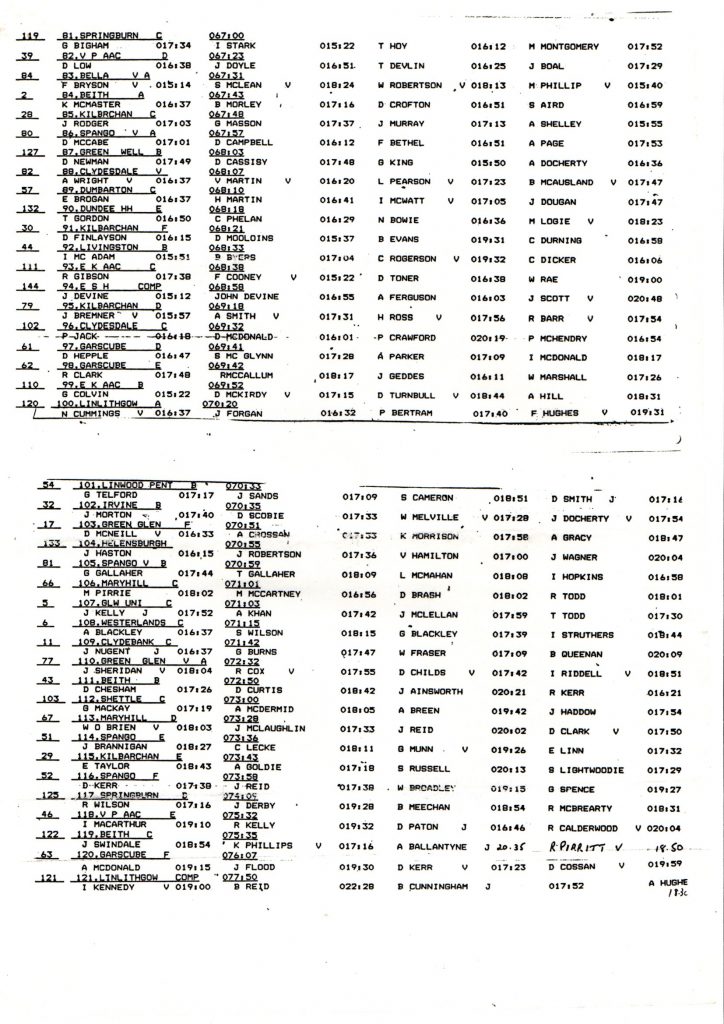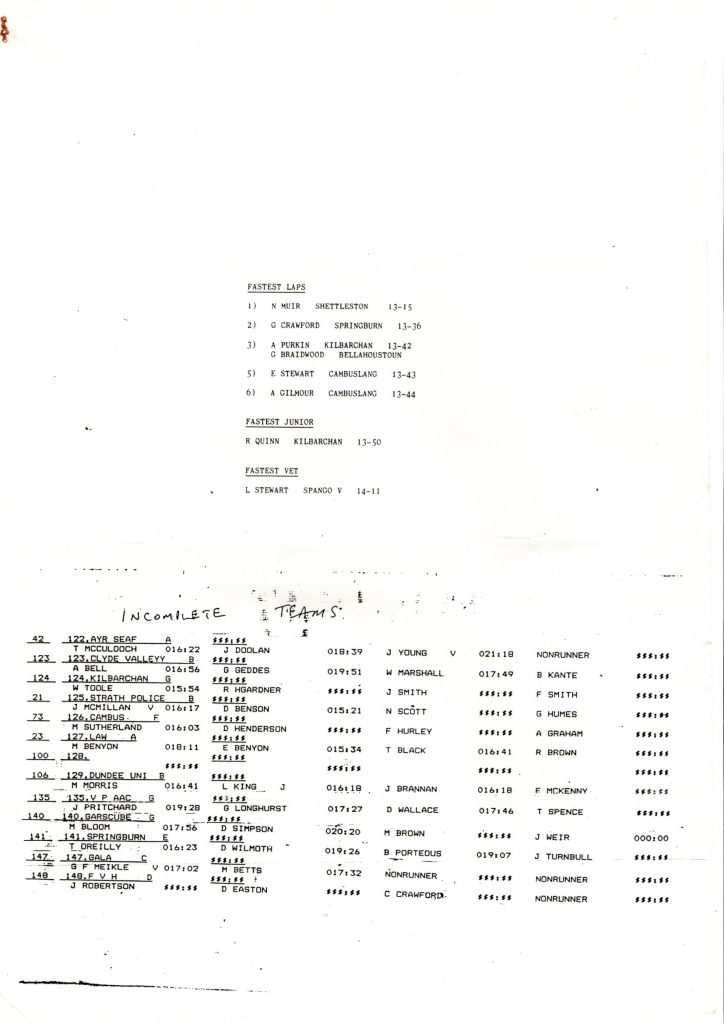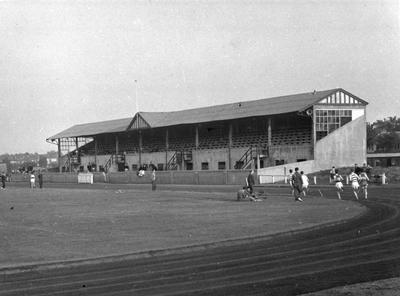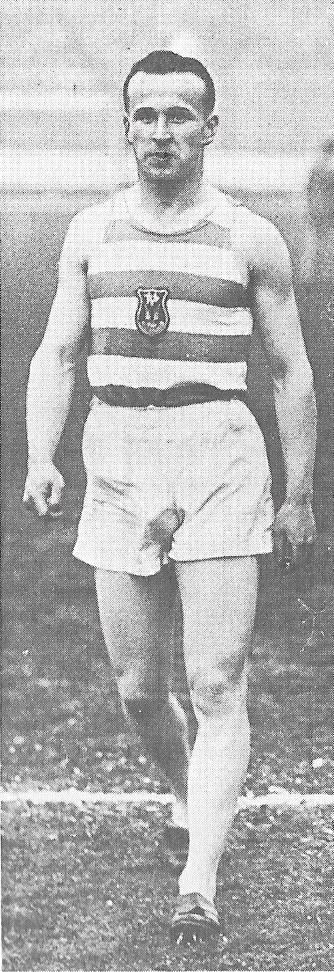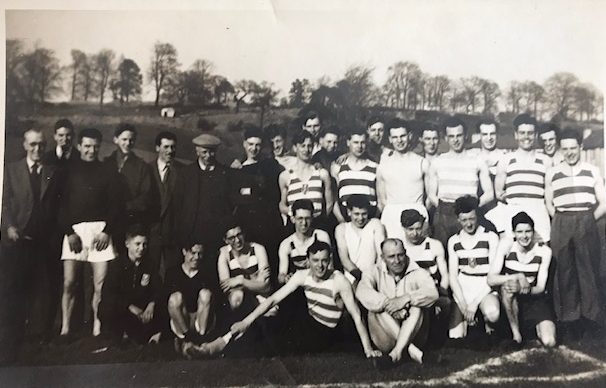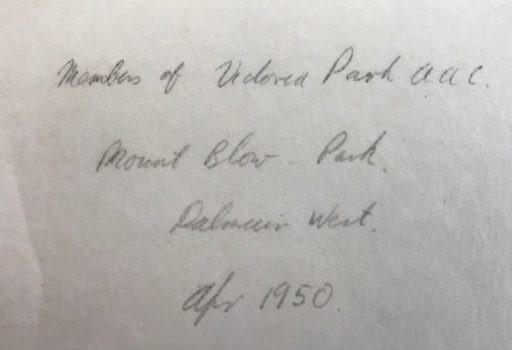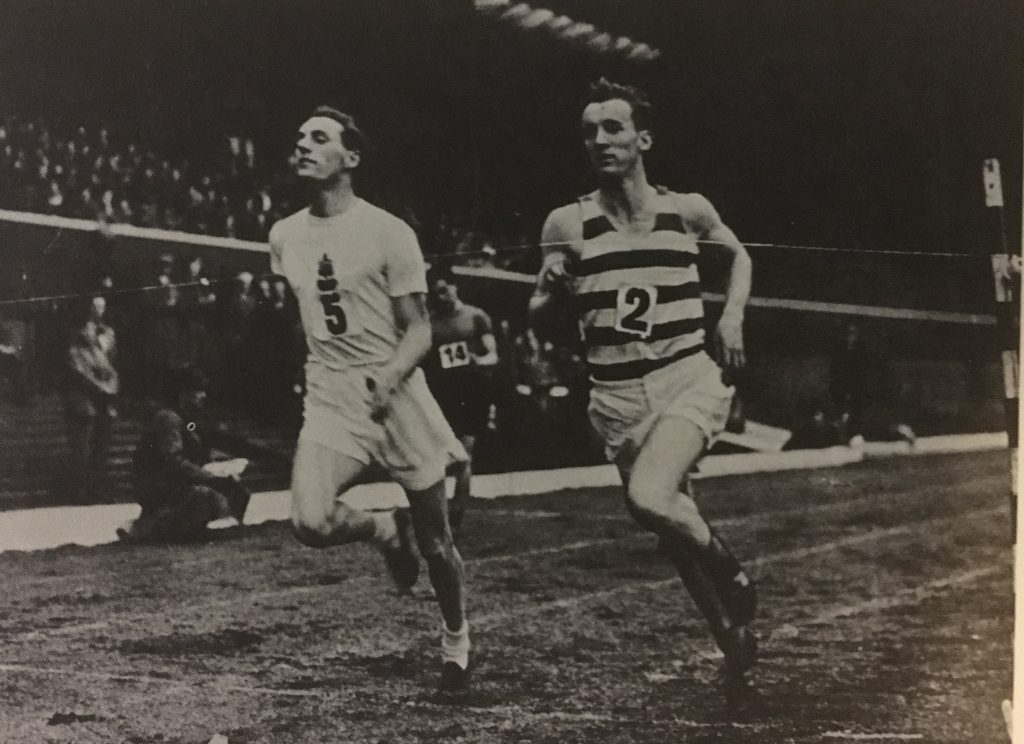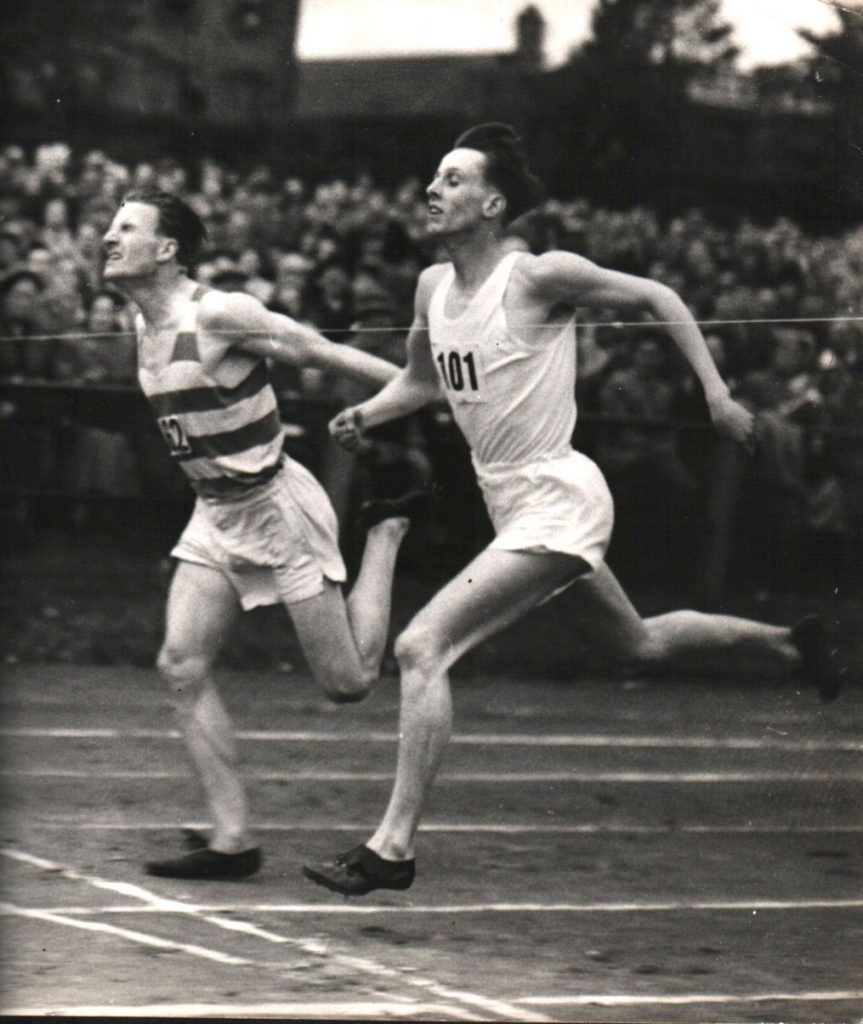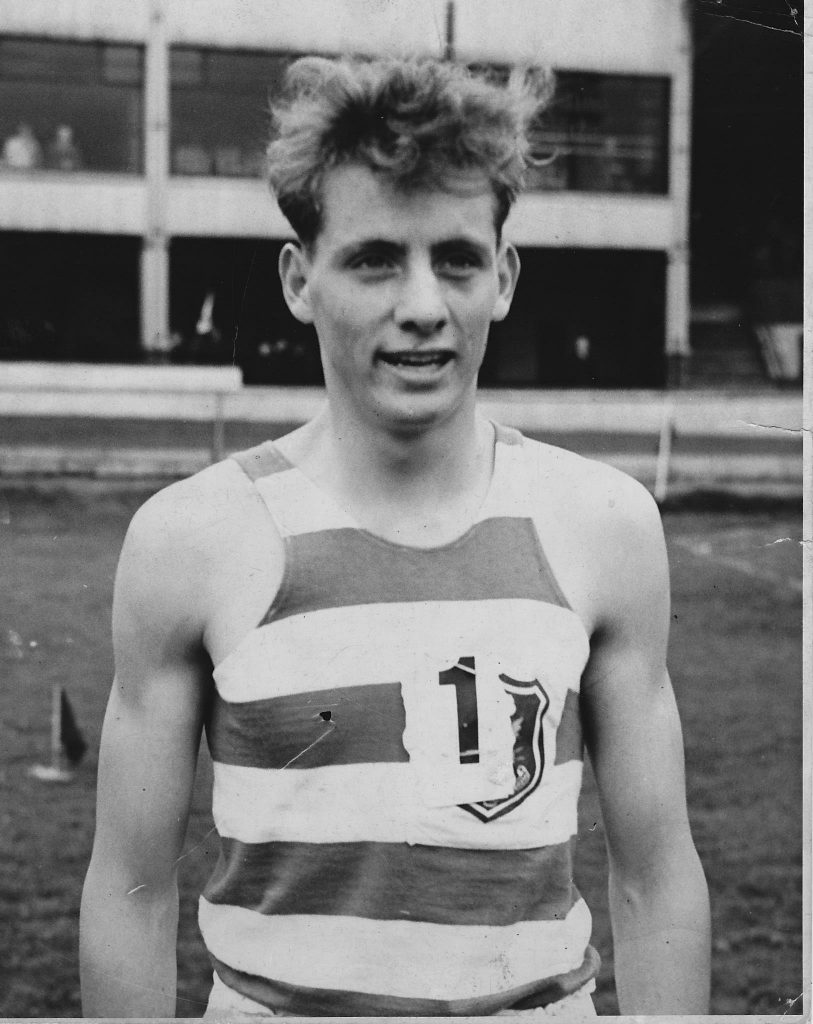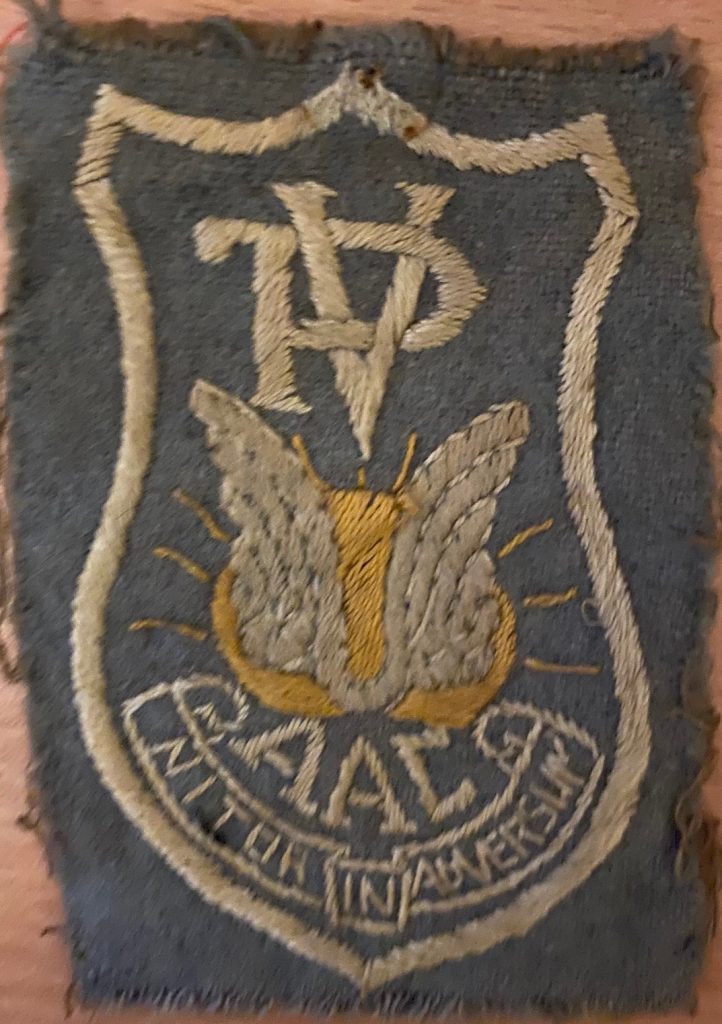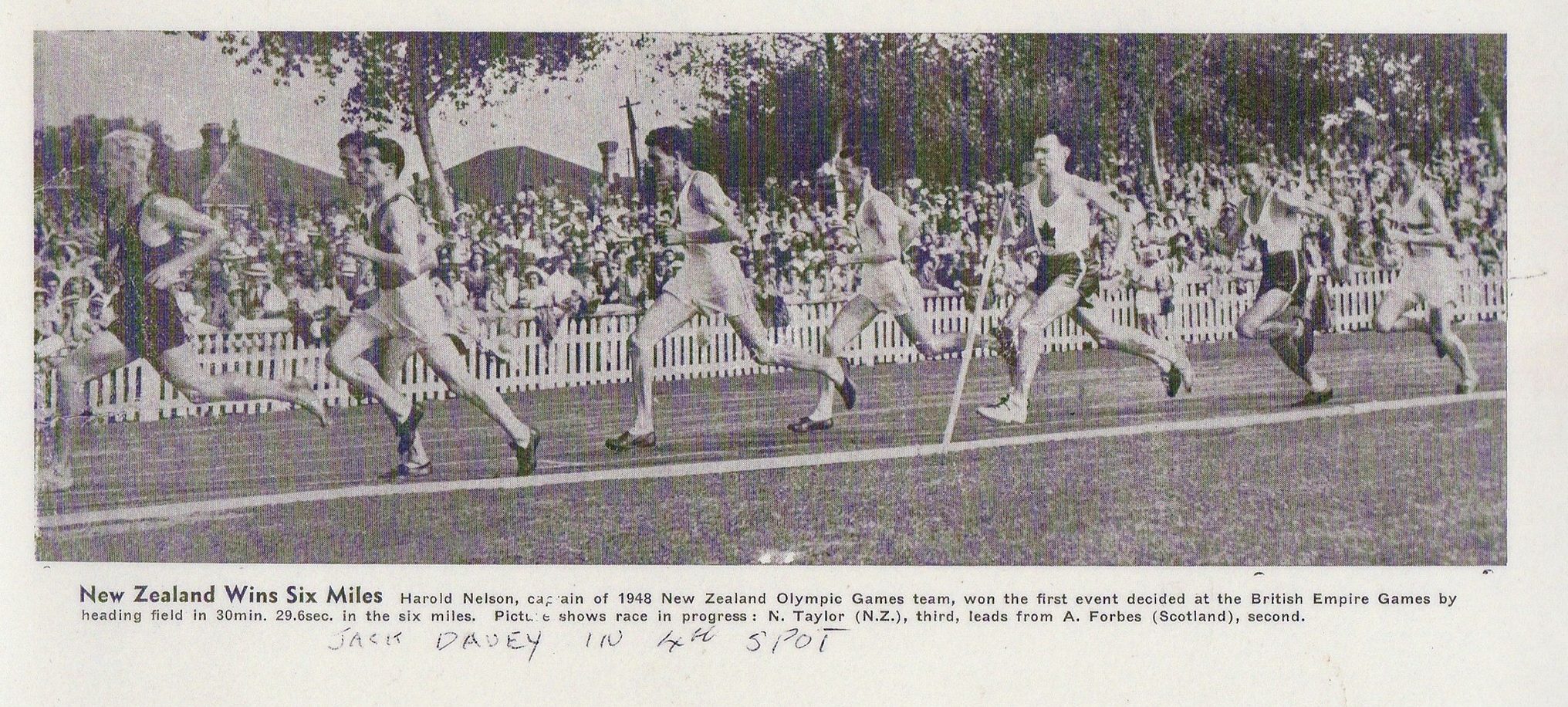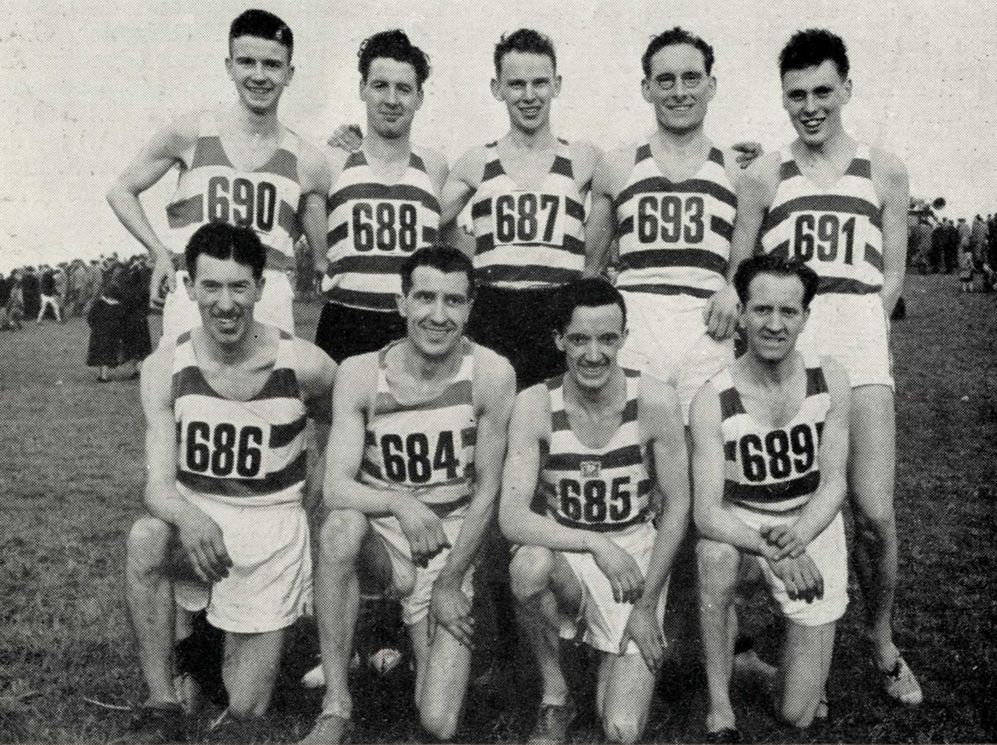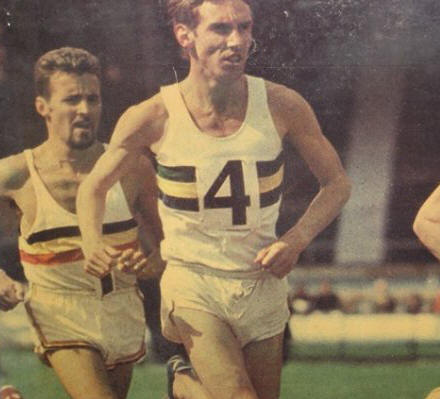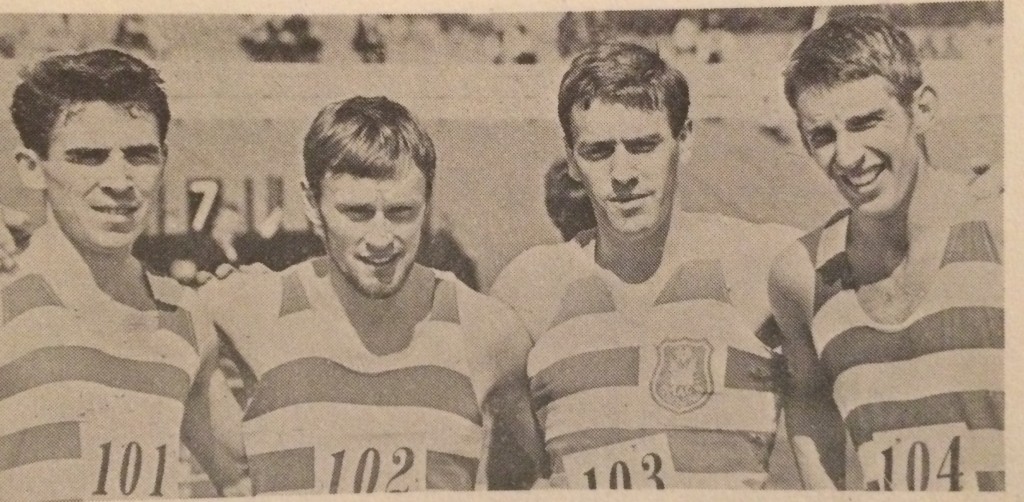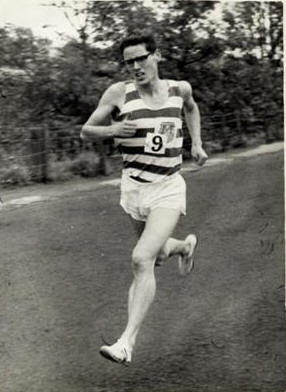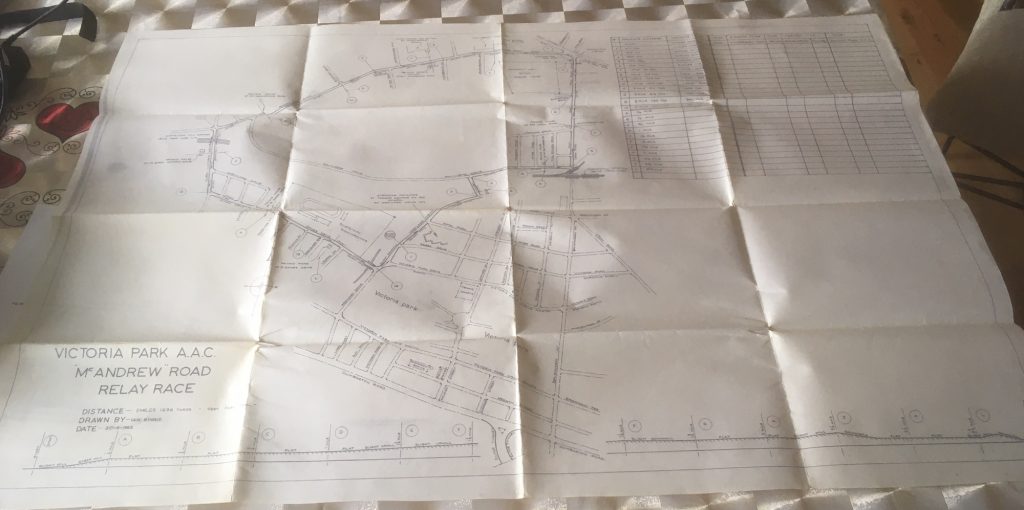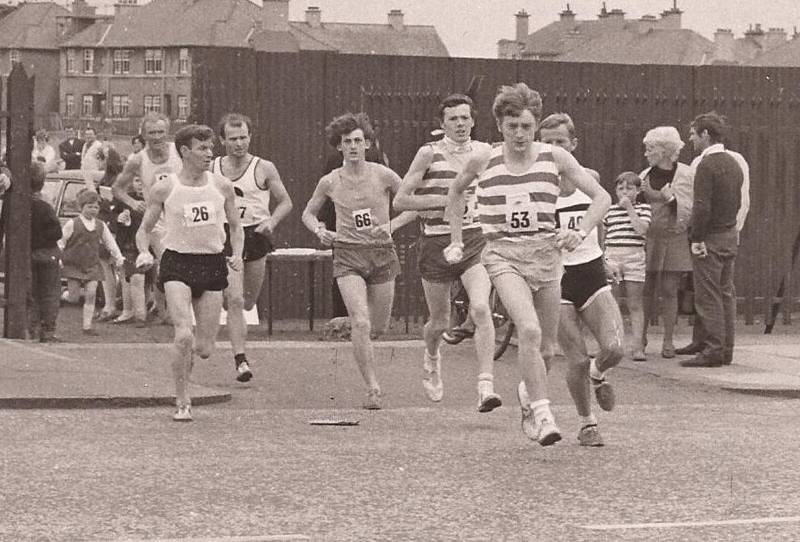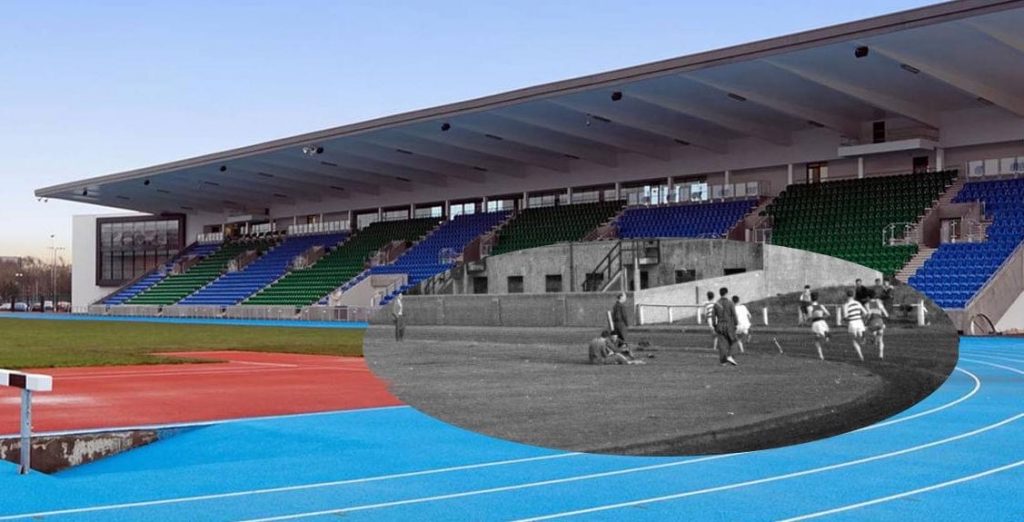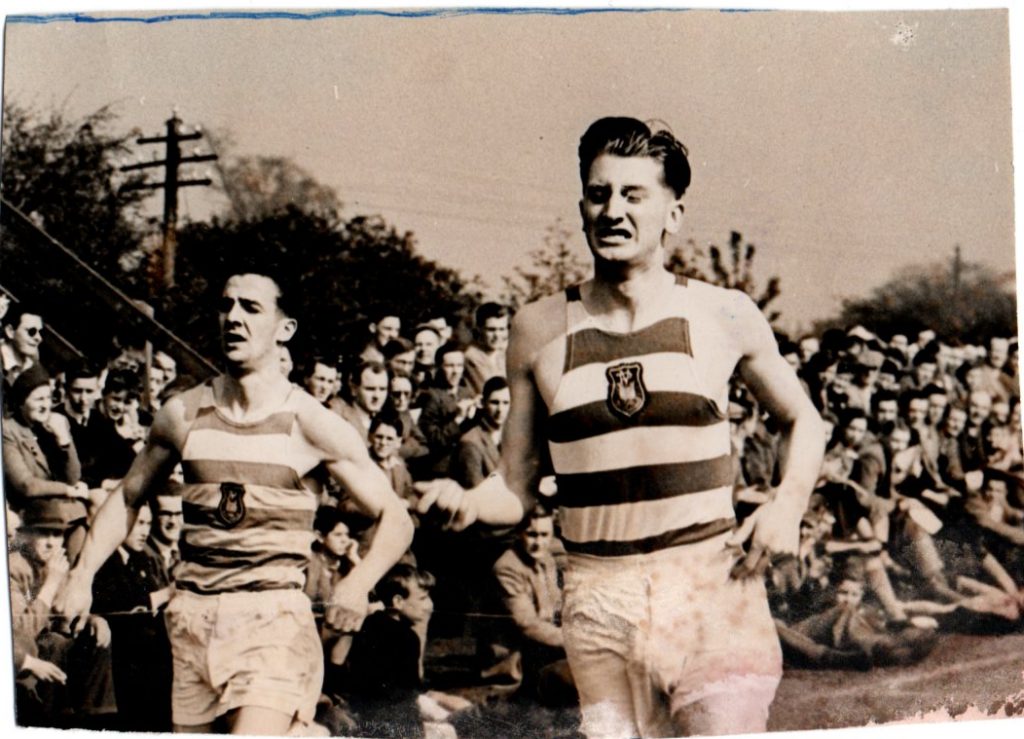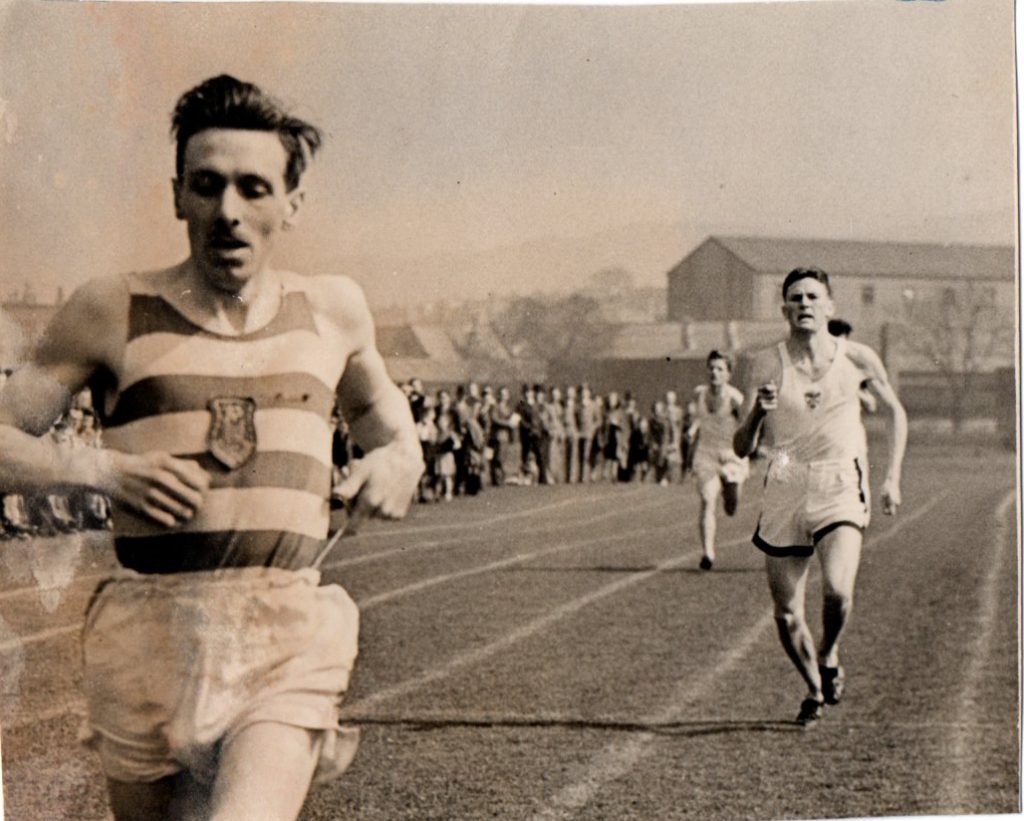Allan Watt (Shettleston) and Sydney Wooderson
The Rangers Sports had been going since the first one was held in 1881. There was a brief hiatus but they ran continuously from the late 19th century. They carried on through the first world war and now there was a second war to fight. Between 1914 and 1918 the Sports had held some events confined to the services and there was fund raising for the cause between 1914 and 1918. Would this, the biggest and longest running amateur sports meeting continue? Colin Shields in his centenary history of the SCCU says:
“In September 1939 the National Cross-Country Union joined with the SAAA in suspending organised athletics in Scotland and setting up Emergency Committees to look after the sport during the War. The long period of drawn out tension between Germany and Great Britain had given the Committee time to prepare for the suspension of championships and permitted meetings in a similar manner to the First World War. But the conduct of the War in its early stages was entirely different from the First War as there was no long term fighting on the continent and after the withdrawal of Allied troops from Dunkirk there were large numbers of servicemen stationed in Scotland.
As well as large numbers of harriers club members being called up to the forces, there were considerable numbers who were still civilians engaged in war work at home. They kept the clubs open and active and made welcome the servicemen stationed in the neighbourhood engaging them in club runs and inter-club fixtures.”
There were, then, numbers of active domestic club runners as well as servicemen from all over the UK stationed in Scotland. Would the Sports go ahead? The answer is contained in the cutting below from 1940.
So it was that on the first Saturday in August, at Ibrox Park, in the Rangers Sports there were three invitation events, eight open events, two cycle races and the obligatory 5-a-side football tournament. There were athletes from Dundee Hawkhill, Maryhill, Shettleston, Springburn, Greenock Wellpark, Bellahouston and Beith Harriers as well as Glasgow University, Edinburgh University and Motherwell YMCA and many other new and established clubs. Rangers won their own football tournament from the other seven teams taking part. No doubt about the event of the afternoon though – bespectacled Sydney Wooderson, a star athlete on the world stage, ran and set a ne all-comers record. The report below tells the story of the meeting.
A successful meeting like that one was sure to be followed up, even in wartime and on 2nd August, 1941, the athletes were back. Five invitation events, seven open events, a cycle race and the essential football 5-a-side tourney. The big draw this time was the Canadian Joe Addison who won the 220 yards and the half mile. There was also a Polish hammer thrower, a AAA’s team in the relay and some fine sprinting from Allan Watt of Shettleston Harriers. Joe Addison had competed in the 1938 Empire Games in Sydney in Australia and was by the start of the War a member of the Canadian Forestry Corps. In the Sports he won the open 100 yards from a mark of 10 yards in 22.4 seconds and then won the 880 yards in 1:54.2 from 40 yards. He won the 220 yards by a foot but was reported to have won the half mile easily. The young Shettleston Harrier Allan Watt won the invitation 120 yards in 11.7 from Heaton of Bolton Harriers. He would go on to win the SAAA 100 yards in 1947 and 1948, doubling with the 220 in ’47. The invitation mile was won by F Close of Surrey (70 yards) from D Wilson of Polytechnic (75 yards) in 4:12.2. Wilson was a figure that the Rangers Sports fans would come to know better. The Invitation Hammer Throw was won by D McLean from D Campbell – both Glasgow Police. The AAA team won the medley relay. The remaining invitation event was the Two Miles Military Team Race which was won by the Grenadier Guards team (3 runners to count) from the KOSB.
In the open events, McGregor of Edinburgh Harriers won the 100 yards from William Mason of |Heriot’s; the mile by Hayman of Victoria Park from Gardner of Bellahouston; the eight laps steeplechase by Hier of RAF and Surrey AC (100) from R Graham of Maryhill (scr); the high jump from McGregor of Glasgow University from D Scott (unattached) and there were two cycle races. It was quite a range of quality athletes such as
* Bobby Graham of Maryhill (who had run in the 1936 Olympic Games, the 1938 Empire Games and won 4 SAAA Mile titles)
*Frank Close had run in the 5000m in the Berlin Olympics,
*promising young athletes like Allan Watt of Shettleston
*Doug Wilson who would be AAA Mile champion in 1947 and Olympian in 1948,
* George Kordas, Hammer thrower from Poland (a disappointing third here)
The sad news is that Addison was killed in action in 1943 when his Lancaster bomber was shot down over Germany.
Bob Graham, Maryhill Harriers
The Glasgow Herald, 3rd August 1942:
“Rangers |Football Club’s 90th annual sports at Ibrox Park on Saturday proved very successful. For once in a while the visitors did not fare as well as of yore. Their only outstanding achievement was the winning of the mile, in this race DG Wilson of Polytechnic Harriers won from the short mark of 15 yards in the time of 4:13.5. The most successful competitor of the gathering was JT Law d Shettleston Harriers who won the open sprint from 4 yards in 10 sec and 120 yards in 11.8 sec. Ian H Brown of Shettleston Harriers and Glasgow University gave another rare account of himself in the half mile winning a fast race from the 30 yards pin.” Rangers beat Queen’s Park in the final of the 5-a-sides. “
Maybe the visitors did not do as well as before but their mark was certainly made – in the Mile there were three places for English runners (Wilson from Betts from Close), in the Mile Medley Relay the AAA’s won from the AAA’s B team). Wilson and Close helped the Rangers tradition of having Olympians at their sports.
In 1943 the three W’s all ran well. Wooderson ran ‘the best mile ever run in this country under those conditions’, Wilson ran well enough to indicate that he might succeed him as Britain’s best miler – and Arthur Warton of Garscube won the open half-mile. The 35,000 crowd for the sports was not all down to Wooderson, how could it be when there was a 5-a-side tournament with the Rangers in action, but many of them were. They were a bit disappointed to see him finish fifth in the Mile – but he was conceding starts up to 145 yards. The Glasgow Herald reported that although he had failed to set a new Scots record but his 4 min 15.2 seconds may well have been the best ever run in this country under the conditions. The winner was ‘the strong and powerful track runner, Sgt G Minshall, of the RAF.’ The Empire Games 100 yards champion of 1938 (in 9.7 sec), CB Holmes of England, failed to make it through the third heat of the special 120 yards race which was won by English team mate AT Liffen to whom he conceded 3 yards. Wooderson and Wilson had both run in the Mile and their outstanding team mate H Fox showed that he too was a class performer by running into second place in the 880 yards from scratch, the race being won by Arthur Warton who was off 44 yards. Events and winners were as follows:
Invitation Events: 120 yards: AT Liffen AAA (3 yards) 11.7 sec; Mile: Sgt GE Monshall RAF (90) 4 min 12 sec; Mile Relay: Civil Defence AAA 3:50.3.
Open Events: 100 yards: Sgt AS Pryce, RAF (6 yards) 10 sec; 220 yards: J McDonald Victoria H (14) 23 sec; Half-mile: A Warton, Garscube H (44) 1:58.5; Mile: Sgt A Holmes, Dundee H and RAF (138) 4 min 24; Obstacle Race: HR Mitchell unatt; Steeplechase T Gibson Bellahouston H, (120) 9 min 24; high jump a/c J Gavin, RAF and Gala H (8 in) 5’10”. Youths 100 yards HK Healy Dunfermline (4) 10.1; Service Relay: Infantry Training Centre.
Pictured below in the spirit of ‘rally round the flag’ is a photograph of Arthur Warton on the right with team mate Alex Kidd running in the McAndrew Relays immediately after the War.
The 1944 version of the sports was notable for many things: the quality of athlete for one – Doug Wilson in great form, the giant West Indian Arthur Wint in the 400 yards, a Glasgow select beating both AAA’s teams in the medley relay and Alan Paterson of Hutchie Grammar clearing 5′ 11″ in the high jump. But in retrospect the emergence of the Victoria Park sprinters as a force in the land, a force that would dominate Scottish sprinting for more than a decade after the war was clearly hinted at. Just look at these results: George McDonald won both 100 and 220 yards, he also won the invitation 120 yards and Arthur Wint was beaten by Ian Panton to whom he gave only 5 yards in the handicap. Add in G Smellie in the half mile (off 45 yards) and James McEwan who was second in the Mile, and it was a great day for the club which had yet to celebrate it’s 15th birthday. Looking back from the 21st century it is interesting to see Gordon Porteous of Maryhill winning the steeplechase – he was setting world marathon records into his 90’s and a celebrated veteran athlete. In the quarter, Wint jumped the gun and was penalised for it but the crowd took it out on the officials rather than on the runner. He took the lead but tired off the last bend and Panton came through to win.
Paterson showed a lot of nerve for a school pupil by defeating not only England’s Stanley West who was jumping from scratch, but also Arthur Wint who cleared 5’9 1/2″. Being on the fan at the same time as the 6’5″ West Indian and the England international, not to mention performing in front of 35,000 people, must have been a tough outing for him
Winners: Invitation Events. 120 yards: G McDonald, Victoria Park (8) 11.7 sec; 440 yards: J Panton, Victoria Park (12) 48.9 sec; Mile: DG Wilson, Polytechnic Harriers, (scr) 4:13.4; Medley Relay: Glasgow Select (Richie, Watt, Warren, Panton) 3:34.0.
Open Events: 100 yards: G McDonald, Victoria Park, (7) 10.2; 220 yards: G McDonald, Victoria Park, (14) 22.5; Half Mile: G Smellie, Victoria Park (46) 1:55.7; Mile: A Foster, Shettleston, (140) 4:16.4; Eight lap steeplechase: G Porteous, Maryhill Harriers (155) 8:55.9; high jump: A Paterson, Hutchesons Grammar Schoool, (5 1/2″) 6′ 4 1/2″ .
Arthur Wint competed in two Olympic Games – 1948 and 52 – winning for medals. In the first one he won gold for the 400m and silver for the 800m, and in the second he won gold for the 4 x 400m relay and silver for the 800m. He was 6′ 5″ tall, with an un deniable physical presence and as an athlete he was liked by everybody in Scotland. He ran in several sports meetings here including the Edinburgh Highland Games and mixed freely with the locals. There are stories of him in Edinburgh or Glasgow joining in a warm up jog with local club athletes and passing the time of day with them. He would probably have won a third medal in 1948 had he not pulled a muscle during the Final of the 4 x 400m relay. After Helsinki in 1952 he ran at Ibrox with many other West Indian and American Olympians on their way home after the Games. The 4 x 400m relay team had Wint, Herb McKenley, George Rhoden and Les Laing who were all top flight athletes.
In 1945, CB Holmes was back again and was the only Olympian on the bill but the record of always having one competing was maintained. He ran well but did not win although he ran two tenths inside the Scottish All-Comers record. It was not ratified as such because of the following wind. Paterson had by now left school and was competing for Victoria Park AAC when he won the high jump with a height of 6’3″ which beat his own British high jump record by half an inch. The crowd this time was even bigger than the previous year with an estimated 40,000 inside Ibrox. Panton won the quarter from scratch in 49.6 from Desroche of the AAA’s and Arthur Warton in third. Results:
Invitation events: 120 yards: JL Law, Shettleston, (5 1/2) 11.6 sec; 440 yards: J Panton, VPAAC (scr) 49.6; 880 yards: G Smellie, Victoria Park, (21) 1:56; Mile: G oosterlyack, Brussels (35) 4:25.6; Medley Relay: dead heat: AAA of England and Scottish Select 3:39.7.
Open Events: 100 yards: W Christie, VPAAC, (9.9; 220: W Christie, VPAAC (15) 22.4; 880: J Small, Garscube Harriers (52) 1:558.5; Mile: AF Horne, Eastleigh, (150) 4:20.4; eight laps steeplechase: C McLennan, Shettleston (170) 9:56.5; high jump: AS Paterson, Victoria Park, (scr) 6′ 3″. Youths: 100 yards: J Aikman, Shettleston Harriers (5 1/2) 9.9.
There were two cycle races and the Rangers team of Shaw, Little, Young, Waddell and Gillick defeated Particks side of Curran, McGowan, Husband, Parker and Shankley 2 – 0 in the 5-a-side.
It had been another very good meeting and the club had managed to hold a meeting of quality every single year for the duration of the War – and every meeting had at least one Olympian competing, many young athletes were helped to come through the ranks, the Glasgow public were entertained with a quality product and the post war series was set up.
